
Project Gutenberg's A History of Wood-Engraving, by George Edward Woodberry This eBook is for the use of anyone anywhere at no cost and with almost no restrictions whatsoever. You may copy it, give it away or re-use it under the terms of the Project Gutenberg License included with this eBook or online at www.gutenberg.org/license Title: A History of Wood-Engraving Author: George Edward Woodberry Release Date: September 1, 2012 [EBook #40638] Language: English Character set encoding: UTF-8 *** START OF THIS PROJECT GUTENBERG EBOOK A HISTORY OF WOOD-ENGRAVING *** Produced by Chuck Greif and the Online Distributed Proofreading Team at http://www.pgdp.net (This file was produced from images available at The Internet Archive)
Entered according to Act of Congress, in the year 1882, by
H A R P E R & B R O T H E R S,
In the Office of the Librarian of Congress, at Washington.
All rights reserved.
IN this book I have attempted to gather and arrange such facts as should be known to men of cultivation interested in the art of engraving in wood. I have, therefore, disregarded such matter as seems to belong rather to descriptive bibliography, and have treated wood-engraving, in its principal works, as a reflection of the life of men and an illustration of successive phases of civilization. Where there is much disputed ground, particularly in the early history of the art, the writers on whom I have relied are referred to, and those who adopt a different view are named; but where the facts seemed plain, and are easily verifiable, reference did not appear necessary.
In conclusion, I have the honor to acknowledge my obligations to the officers of the Boston Public Library, the Boston Museum of Fine Arts, and the Harvard College Library, for permission to reproduce several cuts in their possession; and to Mr. Lindsay Swift, of the Boston Public Library, for the list of authorities at the end of the volume. Especially it is my pleasant duty to thank Professor Charles Eliot Norton, of Harvard University, from whose curious and valuable collection more than half of these illustrations are derived, both for them and for suggestion, advice, and criticism, without which, indeed, the work could not have been written.
GEORGE EDWARD WOODBERRY.
| I | |
| PAGE | |
| THE ORIGIN OF THE ART | 13 |
| II | |
| THE BLOCK-BOOKS | 30 |
| III | |
| EARLY PRINTED BOOKS IN THE NORTH | 45 |
| IV | |
| EARLY ITALIAN WOOD-ENGRAVING | 65 |
| V | |
| ALBERT DÜRER AND HIS SUCCESSORS | 90 |
| VI | |
| HANS HOLBEIN | 116 |
| VII | |
| THE DECLINE AND EXTINCTION OF THE ART | 135 |
| VIII | |
| MODERN WOOD-ENGRAVING | 151 |
| A LIST OF THE PRINCIPAL WORKS UPON WOOD-ENGRAVING USEFUL TO STUDENTS | 211 |
| INDEX | 217 |
[Some of the illustrations have been moved from inside of paragraphs for ease of reading. Clicking on the figure number in this list will take you to it. Click directly on the image to view it in a larger size. (n. etext transcriber)]
| FIG. | PAGE | |
| 1. | —From “Epistole di San Hieronymo Volgare.” Ferrara, 1497. (Initial letter) | 13 |
| 2. | —St. Christopher, 1423. From Ottley’s “Inquiry into the Origin and Early History of Engraving upon Copper and in Wood” | 22 |
| 3. | —The Crucifixion. From the Manuscript “Book of Devotion.” 1445 | 24 |
| 4. | —From the “Epistole di San Hieronymo.” 1497. (Initial letter) | 30 |
| 5. | —Elijah Raiseth the Widow’s Son (1 K. xvii.). The Raising of Lazarus (Jno. xi.). Elisha Raiseth the Widow’s Son (2 K. iv.). From the original in the possession of Professor Norton, of Cambridge | 34 |
| 6. | —The Creation of Eve. From the fac-simile of Berjeau | 35 |
| 7. | —Initial letter. Source unknown | 45 |
| 8. | —The Grief of Hannah. From the Cologne Bible, 1470-’75 | 49 |
| 9. | —Illustration of Exodus I. From the Cologne Bible, 1470-’75 | 51 |
| 10. | —The Fifth Day of Creation. From Schedel’s “Liber Chronicarum.” Nuremberg, 1493 | 54 |
| 11. | —The Dancing Deaths. From Schedel’s “Liber Chronicarum.” Nuremberg, 1493 | 56 |
| 12. | —Jews Sacrificing a Christian Child. From Schedel’s “Liber Chronicarum.” Nuremberg, 1493 | 58 |
| 13. | —Marginal Border. From Kerver’s “Psalterium Virginis Mariæ.” 1509 | 61 |
| 14. | —From Ovid’s “Metamorphoses.” Venice, 1518 (design, 1497). (Initial letter) | 65 |
| 15. | —The Creation. From the “Fasciculus Temporum.” Venice, 1484 | 68 |
| 16. | —Leviathan. From the “Ortus Sanitatis.” Venice, 1511 | 68 |
| 17. | —The Stork. From the “Ortus Sanitatis.” Venice, 1511 | 69 |
| 18. | —View of Venice. From the “Fasciculus Temporum.” Venice, 1484 | 69 |
| 19. | —The Contest of Apollo and Pan. From Ovid’s “Metamorphoses.” Venice, 1518 (design, 1497) | 70 |
| 20. | —Sirens. From the “Ortus Sanitatis.” Venice, 1511 | 71 |
| 21. | —Pygmy and Cranes. From the “Ortus Sanitatis.” Venice, 1511 | 72 |
| 22. | —The Woman and the Thief. From “Æsop’s Fables.” Venice, 1491 (design, 1481) | 73 |
| 23. | —The Crow and the Peacock. From “Æsop’s Fables.” Venice, 1491 (design, 1481) | 75 |
| 24. | —The Peace of God. From “Epistole di San Hieronymo Volgare.” Ferrara, 1497 | 76 |
| 25. | —Mary and the Risen Lord. From “Epistole di San Hieronymo Volgare.” Ferrara, 1497 | 77 |
| 26. | —St. Baruch. From the “Catalogus Sanctorum.” Venice, 1506 | 77 |
| 27. | —Poliphilo by the Stream. From the “Hypnerotomachia Poliphili.” Venice, 1499 | 78 |
| 28. | —Poliphilo and the Nymphs. From the “Hypnerotomachia Poliphili.” Venice, 1499 | 79 |
| 29. | —Ornament. From the “Hypnerotomachia Poliphili.” Venice, 1499 | 80 |
| 30. | —Poliphilo meets Polia. From the “Hypnerotomachia Poliphili.” Venice, 1499 | 81 |
| 31. | —Nero Fiddling. From the Ovid of 1510. Venice | 82 |
| 32. | —The Physician. From the “Fasciculus Medicinæ.” Venice, 1500 | 83 |
| 33. | —Hero and Leander. From the Ovid of 1515. Venice | 85 |
| 34. | —Dante and Beatrice. From the Dante of 1520. Venice | 86 |
| 35. | —St. Jerome Commending the Hermit’s Life. From “Epistole di San Hieronymo.” Ferrara, 1497 | 86 |
| 36. | —St. Francis and the Beggar. From the “Catalogus Sanctorum.” Venice, 1506 | 87 |
| 37. | —The Translation of St. Nicolas. From the “Catalogus Sanctorum.” Venice, 1506 | 87 |
| 38. | —Romoaldus, the Abbot. From the “Catalogus Sanctorum.” Venice, 1506 | 88 |
| 39. | —From an Italian Alphabet of the 16th Century. (Initial letter) | 90 |
| 40. | —St. John and the Virgin. Vignette to Dürer’s “Apocalypse” | 93 |
| 41. | —Christ Suffering. Vignette to Dürer’s “Larger Passion” | 94 |
| 42. | —Christ Mocked. Vignette to Dürer’s “Smaller Passion” | 95 |
| 43. | —The Descent into Hell. From Dürer’s “Smaller Passion” | 96 |
| 44. | —The Herald. From “The Triumph of Maximilian” | 100 |
| 45. | —Tablet. From “The Triumph of Maximilian” | 101 |
| 46. | —The Car of the Musicians. From “The Triumph of Maximilian” | 102 |
| 47. | —Three Horsemen. From “The Triumph of Maximilian” | 103 |
| 48. | —Horseman. From “The Triumph of Maximilian” | 107 |
| 49. | —Virgin and Child. From a print by Hans Sebald Behaim. | 113 |
| 50. | —From the “Epistole di San Hieronymo.” Ferrara, 1497. (Initial letter) | 116 |
| 51. | —The Nun. From Holbein’s “Images de la Mort.” Lyons, 1547 | 123 |
| 52. | —The Preacher. From Holbein’s “Images de la Mort.” Lyons, 1547 | 124 |
| 53. | —The Ploughman. From Holbein’s “Images de la Mort.” Lyons, 1547 | 125 |
| 54. | —Nathan Rebuking David. From Holbein’s “Icones Historiarum Veteris Testamenti.” Lyons, 1547 | 130 |
| 55. | —From “Opera Vergiliana,” printed by Sacon. Lyons, 1517. (Initial letter) | 135 |
| 56. | —St. Christopher. From a Venetian print | 142 |
| 57. | —St. Sebastian and St. Francis. Portion of a print by Andreani after Titian | 143 |
| 58. | —The Annunciation. From a print by Francesco da Nanto | 144 |
| 59. | —Milo of Crotona. From a print by Boldrini after Titian | 145 |
| 60. | —From the “Comedia di Danthe.” Venice, 1536. (Initial letter) | 151 |
| 61. | —The Peacock. From Bewick’s “British Birds” | 156 |
| 62. | —The Frightened Mother. From Bewick’s “British Quadrupeds” | 157 |
| 63. | —The Solitary Cormorant. From Bewick’s “British Birds” | 157 |
| 64. | —The Snow Cottage | 158 |
| 65. | —Birth-place of Bewick. His last vignette, portraying his own funeral | 158 |
| 66. | —The Broken Boat. From Bewick’s “British Birds” | 160 |
| 67. | —The Church-yard. From Bewick’s “British Birds” | 160 |
| 68. | —The Sheep-fold. By Blake. From “Virgil’s Pastorals” | 162 |
| 69. | —The Mark of Storm. By Blake. From “Virgil’s Pastorals” | 162 |
| 70. | —Cave of Despair. By Branston. From Savage’s “Hints on Decorative Printing” | 165 |
| 71. | —Vignette from “Rogers’s Poems.” London, 1827 | 167 |
| 72. | —Vignette from “Rogers’s Poems.” London, 1827 | 167 |
| 73. | —Death as a Friend. From a print by Professor Norton, of Cambridge. Engraved by J. Jungtow | 169 |
| 74. | —Death as a Throttler. From a print by Professor Norton, of Cambridge. Engraved by Steinbrecher | 170 |
| 75. | —The Creation. Engraved by J. F. Adams | 172 |
| 76. | —The Deluge. Engraved by J. F. Adams | 173 |
| 77. | —Butterflies. Engraved by F. S. King | 175 |
| 78. | —Spring-time. Engraved by F. S. King | 177 |
| 79. | —Mount Lafayette (White Mountains). By J. Tinkey | 183 |
| 80. | —“And silent were the sheep in woolly fold.” Engraved by J. G. Smithwick | 187 |
| 81. | —The Old Orchard. Engraved by F. Juengling | 189 |
| 82. | —Some Art Connoisseurs. Engraved by Robert Hoskin | 191 |
| 83. | —The Travelling Musicians. Engraved by R. A. Muller | 194 |
| 84. | —Shipwrecked. Engraved by Frank French | 196 |
| 85. | —The Tap-room. Engraved by Frank French | 198 |
| 86. | —Going to Church. Engraved by J. P. Davis | 199 |
| 87. | —“Nay, Love, ’tis you who stand with almond clusters in your clasping hand.” Engraved by T. Cole | 201 |
| 88. | —The Spanish Peasant. Engraved by F. Juengling | 203 |
| 89. | —James Russell Lowell. Engraved by Thomas Johnson | 205 |
| 90. | —Arthur Penrhyn Stanley. Engraved by G. Kruell | 207 |

FIG. 1.—From “Epistole di
San Hieronymo Volgare.”
Ferra 1497.HE beginning of the art of wood-engraving in Europe, the time when
paper was first laid down upon an engraved wood block and the first rude
print was taken off, is unknown; the name of the inventor and his
country are involved in a double obscurity of ignorance and fable,
darkened still more by national jealousies and vanities; even the
mechanical appliances and processes which led up to and at last resulted
in the new art, can only be conjectured. The art had long lain but just
beyond the border-line of discovery. The principle of making impressions
by means of lines cut in relief upon wood was known to the ancients, who
used engraved wooden stamps to indent figures and letters in soft
substances like wax and clay, and, possibly, to print colors on
surfaces, as had been done from early times in India in the manufacture
of cloth; similar stamps were used in the Middle Ages by notaries and
other public officers to print signatures on documents, by Italian
cloth-makers to impress colors on silk and other fabrics, and by the
illuminators of manuscripts to strike the outlines of initial letters.
This practice may have suggested the new process.
It is more probable that the art began in the workshops of the goldsmiths, who were so skilled in engraving upon metal that impressions of much artistic value have been taken from work executed by them in the twelfth century, showing that they really were engravers obliged to remain goldsmiths, because the art of printing from metal plates was unknown.[1] By their knowledge of design and their artistic execution, at least, if not by their mechanical inventiveness, the goldsmiths were the lineal ancestors of the great engravers of the Renaissance. Their art had been continued from Roman times, with fewer interruptions and hinderances than any other of the fine arts. It was early employed in the adornment of the altar, the pax, and other articles of the Church service; already, in St. Bernard’s time, so much attention was given to workmanship of this kind, and so much wealth lavished upon it, that he denounced it, with true ascetic spirit, as a decoration of what was soon to become vile, a waste of what might have been given to the poor, and a distraction of the spirit from holiness to the admiration of beauty. “The Church,” he said, “shines with the splendor of her walls, and among her poor is destitution; she clothes her stones with gold, and leaves her children naked. * * * Finally, so many things are to be seen, everywhere such a marvellous variety of different forms, that one may read more upon the sculptured walls than in the written Scriptures, and spend the whole day in going about in wonder from one such thing to another, rather than in meditating upon God’s law.”[2] The art might have suffered seriously from such uncompromising opposition as St. Bernard made, had not Suger, the great abbot of St. Denys, taken up its defence and supported it by his patronage and by his eloquence. “Let each one have his own opinion,” he writes, “but I confess it is my conviction that whatever is most precious ought to be devoted above all to that holiest rite of the Eucharist; if golden lavers, if golden cups, and if golden bowls were used, by the command of God or of the prophet, to catch the blood of rams or bullocks or heifers, how much more ought vases of gold, precious stones, and whatever is dearest among all creatures, ever to be set forth with full devotion to receive the blood of Jesus Christ!”[3] By such arguments Suger defended the rightfulness and value of the goldsmith’s art in the service of the Church. After his time the employment of the goldsmiths upon church decoration became so great that they were really the artists of Europe during the two hundred years previous to the invention of wood-engraving.[4] In the pursuit of their craft they practised the arts of modelling, casting, sculpture, engraving, enamelling, and the setting of precious stones; and in the thirteenth century they made use of all these resources in the execution of their beautiful works of art made of gold and silver, richly engraved, and adorned with bass-reliefs and statuettes, and brilliant with many-colored enamel and with jewels—the reliquaries in which were kept the innumerable holy relics that then filled Europe, the famous shrines for the bodies of the saints, about which pilgrims from every quarter were ever at prayer, and the tombs of the Crusaders, and of dignitaries of Church or State. They employed their skill, too, for the lesser glory of the churches, upon the vessels of the Holy Communion, the crosses, candelabra, and censers, and the ornaments that incrusted the vestments of the priests. With the increase of luxury and wealth they found a new field for their invention in contributing to the magnificence of secular life; in fashioning into strange forms the ewers, goblets, flagons, and every vessel which adorned the banquet; and in ornamenting them with fantastic figures, or with scenes from the chase, or from the history of Charlemagne and Saladin, as well as in executing those finely wrought decorations with which the silks and velvets of the nobles were so heavily charged that the old poet, Martial d’Auvergne, says the lords and knights were “caparisoned in gold-work and jewels.” Under Charles V. of France (1364) and the great Dukes of the Low Countries, the jewel-chamber of the prince was his pride in peace and his treasury in war: it furnished gifts for the bride, the favorite, and the heir, and for foreign ambassadors and princes; it afforded pay for retainers before the battle and ransom after it, and in the days of the great fêtes its treasures gave to the courts of France, Burgundy, and Flanders a magnificence that has seldom been seen in Europe.[5]
Under such fortunate encouragement the goldsmiths of the fourteenth century reached a knowledge of design and a finish in execution that justified the claim of their art to the first place among the fine arts, and made their workshops the apprentice-home of many great masters of art in Italy as well as in the North. They best understood the value of art, and were best skilled in artistic processes; they were the only persons[6] who had by them all the means for taking an impression—the engraved metal plate, iron tools, burnishers for rubbing off a proof, blackened oil, and paper which they used for tracing their designs; they would, too, have been aided in their art, merely as goldsmiths, could they have tested their engraving from time to time by taking an impression from it in its various stages. It is not unlikely, therefore, that the art of taking impressions from engraved work was found out, or at least was first extensively applied, in their workshops, where it could hardly have failed to be discovered ultimately, as paper came into use more generally and for more various purposes. If this were the case, metal-engraving preceded wood-engraving, but only by a brief space of time, because, as soon as the idea of the new art was fully grasped, wood must have been almost immediately employed in preference to metal, on account of the greater ease and speed of working in wood, and of the less injury done to the paper in printing from it.
Some support for this view, that the art of printing from engraved metal plates was discovered by the goldsmiths, and preceded and suggested wood-engraving, is derived from the peculiar prints in the manière criblée, or the dotted style, of which over three hundred are known. They were produced by a mixed process of engraving in relief and in intaglio, usually upon a metal plate, but sometimes upon wood. The effects are given by dots and lines relieved in white upon a black ground, assisted by dots and lines relieved in black upon a white ground. These prints have afforded much material for dispute and controversy, both as to their process and their date; the mode in which the metal plates from which they were printed were engraved, particularly the punching out small holes in the metal, which appear usually as white dots, and give the name to the prints, is the same as a mode of ornamental work[7] in metal that had been practised for centuries in the workshops of the goldsmiths, and on this account they have been ascribed to the goldsmiths of the great Northern cities.[8] They appeared certainly as early as 1450, and probably much earlier.[9] Some of these prints are evidently taken from metal plates not originally meant to be printed from, for the inscriptions on the prints as well as the actions of the figures appear reversed, the words reading backward, and the figures performing actions with the left hand almost always performed by the right hand.[10] These may be the work of the first years of the fifteenth century, or they may have been taken long afterward, in a spirit of curiosity or experiment. The existence of these early prints, however, undoubtedly from the workshops of the goldsmiths, and after a mode long practised by them, strengthens the hypothesis—suggested by their wide acquaintance with artistic processes and their exclusive possession of all the proper instruments—that they originated the art of taking impressions on paper from engraved work; at all events, this seems the least wild, the most consistent, and best supported conjecture which has been put forth.
There is, however, no lack of more specific accounts of the origin of wood-engraving. Pliny’s[11] reference to the portraits with which Varro illustrated his works indicates, in the opinion of some writers, a momentary, isolated, and premature appearance of the art in his day. Ottley[12] maintains that the art was introduced into Europe by the Venetians, who learned it “at a very early period of their intercourse with the people of Tartary, Thibet, and China;” but of this there is no satisfactory evidence. Papillon,[13] a French engraver of the last century, relates that in his youth he saw in the library of a retired Swiss officer nine woodcuts, illustrative of the deeds of Alexander the Great, executed with a small knife by “two young and amiable twins,” Isabella and Alexander Alberico Cunio, Knt., of Ravenna, in their seventeenth year, and dedicated by them to Pope Honorius IV., in 1284-85; but, as no one else ever saw or heard of them, and there is no contemporary reference to them, as no single unquestionable fact has been adduced in direct support of the story, and as Papillon is an untrustworthy writer, his tale, although accepted by some authorities,[14] is generally discredited,[15] and was regarded by Chatto[16] as the hallucination of a distempered mind. Meerman,[17] the stout defender of the claim of Lawrence Coster to the invention of printing with movable types, relying on the authority of Junius,[18] who wrote from tradition more than a century after the facts, makes Coster the first printer of woodcuts. Some writers accept this story; but in spite of them, and of the well-developed genealogical tree with which Meerman provided his hero, and even of Mr. Sotheby’s[19] supposed discovery of Coster’s portrait, his very existence is doubted. The charming scene in which the idea of the new art first occurred to Coster, as he was walking after dinner in his garden, and cutting letters from beech-tree bark with which to print moral sentences for his grandchildren—the old man surrounded by the childish group in the well-ordered Haarlem garden—is probably, after all, little more than a play of antiquarian fancy. These stories have slight historic weight; they are, to use M. Renouvier’s simile, “a group of legends about the cradle of modern art, like those recounted of ancient art, the history of Craton, of Saurias, or of the daughter of Dibutades, who invented design by tracing on a wall the silhouette of her lover.”
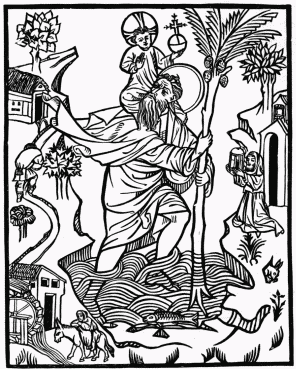
FIG. 2.—St. Christopher, 1423. From Ottley’s “Inquiry
into the Origin and Early History of Engraving upon Copper and in
Wood.”
The first fact known with certainty in the history of wood-engraving is, that in the first quarter of the fifteenth century there were scattered abroad in Northern Europe rude prints, representing scenes from the Scriptures and the lives of the saints. These pictures were on single leaves of paper; the outlines were printed from engraved wood-blocks, but occasionally, it is believed, from metal plates cut in relief; they were taken off in a pale, brownish ink by rubbing on the back of the paper with a burnisher, and sometimes in black ink and with a press; they were then colored, either by hand or by means of a stencil plate, in order to make them more attractive to the people. The earliest of these prints which bears an unquestionable date is the famous St. Christopher (Fig. 2) of 1423, found by Heinecken,[20] in the middle of the last century, pasted inside the cover of a manuscript in the library of the convent of Buxheim, in Suabia. It represents St. Christopher, according to a favorite legend of the Middle Ages, fording a river with the infant Christ upon his shoulders; opposite, on the right bank, a hermit holds a lantern before his cell; on the left a peasant, with a bag on his back, climbs the steep ascent from his mill to the cottage high up on the cliff, where no swelling of the stream will reach it. The attitude of the two heads is expressive, and the folds of the saint’s robes are well cast about the shoulders; in other respects the cut has little artistic merit, but the attempt to mark shadows by a greater or less width of line is noticeable, and the lines in general are much more varied than is usual in early work. It was printed in black ink, and with a press. There are two other early prints, the dates of which are uncertain, but still sufficiently probable to deserve mention—the warmly controverted Brussels print[21] of 1418, which represents the Virgin and Child, surrounded by four saints, in an enclosed garden, in the style of the Van Eycks, and with more artistic merit than the St. Christopher in design, drawing, and execution; and, secondly, the St. Sebastian of 1437, at Vienna. The former was discovered in 1844, in a bad condition, and the latter in 1779; both are taken off in pale ink, and with a rubber. There are numerous other prints of this kind, which have been described in detail and have had conjectural dates assigned to them, fruitful of much antiquarian dispute. One of these (Fig. 3) is here reproduced for the first time; it was found stitched into a manuscript of 1445, and is unquestionably as old as the manuscript; it represents a Crucifixion, with the Virgin and Longinus at the left, and St. John and, perhaps, the Centurion at the right; in the upper left-hand corner is an angel with the Veronica, or handkerchief, which bears the miraculous portrait of the Saviour, and above are a scourge and a knife; in the original the body of Christ is covered with dots and scratches in vermillion, to represent blood. It was taken off in black ink with a press, and is one of the rudest engravings known.[22]
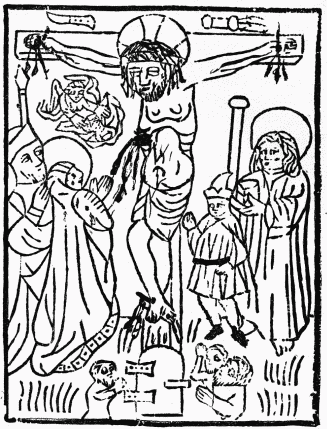
FIG. 3.—The Crucifixion. From the Manuscript “Book of
Devotion.” 1445.
Valueless as these prints[23] are, for the most part, as works of art, they are of great interest. They were the first pictures the common people ever had, and doubtless they were highly prized. Rude as they were, the poor German peasant or humble artisan of the great industrial cities cared for them; they had been given to him by the monks, like the rudely-carved wooden images of earlier times, at the end of some pilgrimage that he had made for penance or devotion, and were treasured by him as a precious memento; or some preaching friar, to whom he had devoutly given a small alms for the building of a church or the decoration of a shrine, had rewarded his piety with a picture of the saint whom, so far as he could, he had honored; or he had received them on some day of festival, when in the streets of the Flemish cities the Lazarists or other orders of monks had marched in grand procession, scattering these brilliantly colored prints among the populace. Stuck up on the low walls of his dwelling, they not only recalled his pious deeds, they brought home before his eyes in daily sight the reality of that holy living and holy dying of the Saviour and his martyrs in whose intercession and prayer his hope of salvation lay. Throughout the fifteenth and a part of the sixteenth centuries, although the intellectual life of the higher classes began to be secularized, among the common people these mediæval sentiments and customs, which gave rise to the holy prints, continued without change until the Reformation; and so the workshops of the monks and of the guilds of Augsburg, Nuremberg, Ulm, Cologne, and the Flemish cities, kept on issuing these saints’ images, as they were called, long after the art had produced refined and noble works. They remained, in accordance with the true mediæval spirit, not only without the name of the craftsman, nomen vero auctoris humilitate siletur, but unmarked by any individuality, impersonal as well as anonymous; there is little to show even the difference in the time and place of their production, except that their lines in the first half of the century were more round and flowing, while in the latter half they were angular, after the manner of the Van Eycks, and that they vary in the choice and brilliancy of their colors.[24]
At the very beginning, too, wood-engraving was applied to a new industry, which had sprung up rapidly, to furnish amusement for the camp and the town—the manufacture of playing-cards. Some writers have maintained that the art was thus applied before it was employed to make the holy prints; but there are no playing-cards known to have been printed before 1423, and it is probable that they were painted by hand and adorned by the stencil for some time after the first unquestioned mention of them in 1392.[25] The manufacture of both cards and holy prints soon became a thriving trade; it is mentioned in Augsburg in 1418, and soon afterward in Nuremberg; and in 1441 the exportation of these articles into Italy had become so large that the Venetian Senate passed a decree,[26] which is the earliest document relative to wood-engraving in Italy, forbidding their importation into Venice, because the guild engaged in this manufacture in the city was suffering from the foreign competition. Wood-engraving, being only one process in the craft of the card-maker and the print-maker, seems to have remained without a distinct name for a long while after its invention.
In the middle of the fifteenth century, therefore, wood-engraving, the youngest of the arts of design, after fifty years of obscure and unnoticed history, held an established position, and was recognized as a new craft. In art its discovery was the parallel of the invention of printing in literature; it was a means of multiplying and spreading the ideas which are expressed by art, of creating a popular appreciation and knowledge of art, and of bringing beautiful design within the reach of a larger body of men. It is difficult for a modern mind to realize the place which pictures filled in mediæval life, before the invention of printing had brought about that great change which has resulted in making books almost the sole means of education. It was not merely that the paintings upon the walls of the churches conveyed more noble conceptions to the peasant and the artisan than their slow imagination could build up out of the words of the preacher; like children, they apprehended through pictures, they thought upon all higher themes in pictures rather than in words; their ideas were pictorial rather than verbal; painting was in spiritual matters more truly a language to them than their own patois. They could not reason, they could not easily understand intellectual statement, they could not imagine vividly, they could only see. This accounts for the rapid spread of the new art, and for the popularity and utility of the holy prints which were so widely employed to convey religious ideas and quicken religious sentiment; in the production of these wood-engraving appears from the first in its true vocation as a democratic art in the service of the people; its influence was one, and by no means the most insignificant, of the great forces which were to transform mediæval into modern life, to make the civilization of the heart and the brain no longer the exclusive possession of a few among the fortunately born, but a common blessing. Wood-engraving was at once the product of the desire for this change and of the effort toward it, a mirror of the movement the more valuable because the art was more intimately connected with the popular life than any other art of the Renaissance, and a power feeding the impulse from which it derived its own vitality. In this fact lies the historic interest of the art to the student of civilization. At first it served mediæval religion; afterward it took a wider range, and by both its serious and satirical works afforded valuable aid in the progress of the Reformation, while it rendered the earliest printed books more attractive, in which its nobler designs educated the eye in the perception of beauty. Finally, in the hands of the great engravers—of Dürer, who, still mastered by the mediæval spirit, employed it to embody the German Renaissance; of Maximilian’s artists, who recorded in it the dying picturesqueness and chivalric spirit of the Middle Ages; of Holbein, who first heralded, by means of it, the intelligence and sentiment of modern times—it produced its chief monuments, which, for the most part, will here be dealt with, in order to illustrate its value as a fine art practised for its own sake, as a trustworthy contemporary record of popular customs, ideas, and taste, and as an element of considerable power in the advancement of modern civilization.
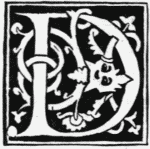
FIG. 4.—From the “Epistole
di San Hieronymo.” 1497.URING the first half of the fifteenth century, in more than one quarter
of Europe, ingenious minds were at work seeking by various experiments
and repeated trials, with more and more success, the great invention of
printing with movable types; even now, after the most searching inquiry,
the time and place of the invention are uncertain. Printing with movable
types, however, was preceded and suggested by printing from engraved
wood-blocks. The holy prints sometimes bore the name of the saint, or a
brief Ora pro nobis or other legend impressed upon the paper; the
wood-engravers who first cut these few letters upon the block, although
ignorant of the vast consequences of their humble work, began that great
movement which was to change the face of civilization. After letters had
once been printed, to multiply the words and lengthen the sentences, to
remove them from the field of the cut to the space below it, to engrave
whole columns of text, and, finally, to reproduce entire manuscripts,
and thus make printed books, were merely questions of manual skill and
patience. Where or when or by whom these block-books, as they are
called, were first engraved and printed is unknown; these questions have
been bones of contention among antiquarians for three hundred years, and
in the dispute much patient research has been expended, and much dusty
knowledge heaped together, only to perplex doubt still farther, and to
multiply baseless conjectures. It is probable that they were produced in
the first half of the fifteenth century, when the men of the
Renaissance, whose aroused curiosity made them alert to seize any new
suggestion, were everywhere seeking for means to overthrow the great
barrier to popular civilization, the rarity of the instruments for
intellectual instruction; they soon saw of what service the new art
might be in this task, through the cheapness and rapidity of its
processes, and they applied it to the printing of words as well as of
pictures.
The most common manuscripts of the time, which had hitherto been the cheapest mode of intellectual communication, were especially fitted to be reproduced by the new art; they were those illustrated abridgments of Scriptural history or doctrine, called Biblia Pauperum, or books of the poor preachers, which had long been used in popular religious instruction, in accordance with the mediæval custom of conveying religious ideas to the illiterate more quickly and vividly through pictures than was possible by the use of language alone. In the sixth century Gregory the Great had defended wall-paintings in the churches as a means of religious instruction for the ignorant population which then filled the Roman provinces. In a letter to the Bishop of Marseilles, who had shown indiscreet zeal in destroying the pictures of the saints, he wrote: “What writing is to those who read, that a picture is to those who have only eyes; because, however ignorant they are, they see their duty in a picture, and there, although they have not learned their letters, they read; wherefore, for the people especially, painting stands in the place of literature.”[27] In conformity with this opinion these manuscripts were composed at an early period; they were written rapidly by the scribes, and illustrated with designs made with the pen, and rudely colored by the rubricators. They served equally to take the place of the Bible among the poor clergy—for a complete manuscript of the Scriptures was far too valuable a treasure to be within their reach—and to aid the people in understanding what was told them; for, doubtless, in teaching both young and old the monks showed these pictures to explain their words, and to make a more lasting impression upon the memory of their hearers. These designs, it is worth while to point out, exhibit the immobility of mind in the mediæval communities, guided, as they were, almost wholly by custom and tradition; the designs were not original, but were copied from the artistic representations in the principal churches, where the common people may have seen them, when upon a pilgrimage or at other times, carved among the bass-reliefs or glowing in the bright colors of the painted windows. They were copied without change, the scenes were conceived in the same manner, the characters were represented after the same conventional type, even in the details there was slight variation; and as the decorative arts in the churches were subordinated to architecture, these designs not infrequently bear the stamp of their original purpose, and are marked by the characteristics of mural art. They were copied, too, not only by the scribes from early representations, but they were reproduced by the great masters of the Renaissance from the manuscripts and block-books themselves; Dürer, Quentin Matzys, Lukas van Leyden, Martin Schön, and, in earlier times, Taddeo Gaddi and Orcagna, took their conceptions from these sources.
Of the block-books which reproduced these and similar manuscripts several have been preserved, and some of them have been reproduced in fac-simile, and minutely described. Among the most important of these, the Biblia Pauperum,[28] or Poor Preachers’ Bible, of which copies of several editions exist, deserves to be first mentioned. It is a small folio, containing forty pages, printed upon one side only, with the pale brownish ink used in most early prints, and by means of a rubber. The pages are arranged so that they can be pasted back to back; each page is divided into five compartments, separated by the pillars and mouldings of an architectural design, which immediately recall the divisions of a church window; in the centre is depicted some scene (Fig. 5) from the Gospels, and on either side are placed scenes from the Old Testament history illustrative or typical of that commemorated in the central design; both above and below are two half-length representations of holy men. Various texts are interspersed in the field, and Latin verses are written below the central compartments. It will be seen that the designs not only served to illustrate the preacher’s lesson, but suggested his subject, and indicated and directed the course of his sermon: they taught him before they taught the people.
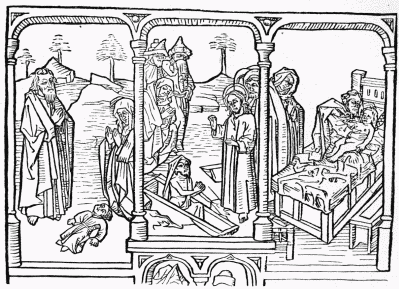
Elijah Raiseth the Widow’s Son (1 K, xvii.). The Raising
of Lazarus (Jno, xi.). Elisha Raiseth the Widow’s Son (2 K. iv.).
FIG. 5.—From the original in the possession of Professor Norton, of
Cambridge.
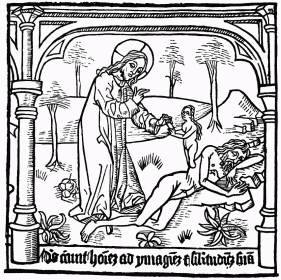
FIG. 6.—The Creation of Eve. From the fac-simile of
Berjeau.
But, before commenting on this volume, it will be useful to describe first the much more interesting and more famous Speculum Humanæ Salvationis,[29] or Mirror of Human Salvation, an examination of which will throw light on the history of the art. It is a small folio, and contains sixty-three pages, printed upon one side, of which fifty-eight are surmounted by two designs enclosed in an architectural border, which are illustrative or symbolical of the life of Christ or of the Virgin; the designs (Fig. 6) are printed in pale ink by means of a rubber. The text is not engraved on the block or placed in the field of the cut, but is printed from movable metallic type in black ink with a press, and occupies the lower two-thirds of the page, in double columns. The book is, therefore, a product of the two arts of wood-engraving and typography in combination. There are four early editions known, two in Latin, and two in Dutch, all without the name of the printer, or the date or place of publication. They are printed on paper of the same manufacture, with woodcuts from the same blocks, and in the same typographical manner, excepting that one of the Latin editions contains twenty pages in which the text is printed from engraved wood-blocks in pale brownish ink, and with a rubber, like the designs. These four editions, therefore, were issued in the same country.
This curious book has been the subject of more dispute than any other of the block-books, because it offers more tangible facts to the investigator. The type is of a peculiar kind, distinctly different from that used by the early German printers, and the same in character with that used in other early books undoubtedly issued in the Low Countries. The language of the Dutch editions is the pure dialect of North Holland in the first part of the fifteenth century; the costumes, the short jackets, the high, broad-brimmed hats, sometimes with flowing ribbons, the close-fitting hose and low shoes of the men, the head-dresses and skirts of the women, are of the same period in the Netherlands, and even in the physiognomy of the faces Flemish features have been seen. The designs, too, are in the manner of the great Flemish school, renowned as the best in Europe outside Italy, which was founded by Van Eyck, the discoverer of the art of painting in oil, and which was marked by a realism altogether new and easily distinguished; the backgrounds are filled with architecture of the same time and country. The Speculum, therefore, was produced in the Low Countries; it must have been printed there before 1483, and probably was printed some time before 1454. The Biblia Pauperum has so much in common with the Speculum in the style of its art, its costumes, and its general character, that, although of earlier date, it may be unhesitatingly ascribed to the same country.
The internal evidence, however, only enforces the probabilities springing from the social condition of the Netherlands, then the most highly civilized country north of the Alps. Its industries, in the hands of the great guilds of Bruges, Ghent, Brussels, Louvain, Antwerp, and Liege, were the busiest in Europe. Its commerce was fast upon the lagging sails of Venice. The “Lancashire of the Middle Ages,” as it has been fitly called, sent its manufactures abroad wherever the paths of the sea had been made open, and received the world’s wealth in return. The magnificence of its Court was the wonder of foreigners, and the prosperity of its people their admiration. The confusion of mediæval life, it is true, was still there—fierce temper in the artisans, blood-thirstiness in the soldiery, everywhere the pitilessness of military force, wielded by a proud and selfish caste, as Froissart and Philippe de Comyns plainly recount; but there, nevertheless—although the brutal sack of Liege was yet to take place—modern life was beginning; merchant-life, supported by trade, citizen-life, made possible by the high organization of the great guilds, had begun, although the merchant and the citizen must still wear the sword; art, under the guidance of the Van Eycks, was passing out of mediæval conventionalism, out of the monastery and the monkish tradition, to deal no longer with lank, meagre, martyr-like bodies, to care no more for the moral lesson in contempt of artistic beauty, to come face to face with nature and humanity as they really were before men’s eyes; and modern intellectual life, too—faint and feeble, no doubt—was nevertheless beginning to show signs of its presence there, where in after-times great thinkers were to find a harbor of refuge, and the most heroic struggle of freedom was to be fought out against Spain and Rome. This comparatively high state of civilization, the activity of men’s minds, the variety of mechanical pursuits, the excellence of the goldsmiths’ art, the number and character of the early prints undoubtedly issued there, the mention of incorporated guilds of printers at Antwerp as early as 1417, and again in 1440, and at Bruges in 1454, make it probable that the invention of wood-engraving was due to the Netherlands, and perhaps the invention of typography also. Whether this were the case or not, it is certain that the artists of the Netherlands carried the art of engraving in wood to its highest point of excellence during its first period.
Antiquarians have not been contented to show that the best of the block-books came from the Netherlands; they have attempted to discover the names of the composer of the Speculum, the engraver of its designs, and its printer. But their conjectures[30] are so doubtful that it is unnecessary to examine them, with the exception of the ascription of the printing of the Speculum to the Brothers of the Common Lot.[31] This brotherhood was one of the many orders which arose at that time in the Netherlands, given to mysticism and enthusiasm, that resulted in real licentiousness; or to piety and reform, that prepared the way for the Reformation. Its members were devoted to the spread of knowledge, and were engaged in copying manuscripts and founding public schools in the cities. After the invention of printing, they set up the first presses in Brussels and Louvain, and published many books, always, however, without their name as publishers. They practised the art of wood-engraving, and doubtless some of the early holy prints were from their workshops; sometimes they inserted woodcuts in their manuscripts, as in the Spirituale Pomerium, or Spiritual Garden, of Henri van den Bogaerde, the head of the retreat at Groenendael, where the painter Diedrick Bouts occasionally sought retirement, and where he may have aided the Brothers with his knowledge of design. It is quite possible that this brotherhood, so favorably placed, produced the Speculum and others of the block-books, and that they were aided by the painters of the time whose style of design they followed; but, as Renouvier remarks in rejecting this account, the monks were not the only persons too little desirous of notoriety to print their names, and although they took part in early engraving and printing, a far more important part was taken by the great civil corporations. In either case, whether the monks or the secular engravers designed these woodcuts, they were probably aided at times by the painters, who at that period did not restrict themselves to the higher branches of art, but frequently put their skill to very humble tasks.
The character of the design is very easily seen; the lines are simple, often graceful and well-arranged; there is but little attempt at marking shadows; there is less stiffness in the forms, and the draperies follow the lines of the forms better than in either earlier or later work of a similar kind, and there is also much less unconscious caricature and grimace. A whole series needs to be looked at before one can appreciate the interest which these designs have in indicating the subjects on which imagination and thought were then exercised, and the modes in which they were exercised. Symbolism and mysticism pervade the whole. All nature and history seem to have existed only to prefigure the life of the Saviour: imagination and thought hover about him, and take color, shape, and light only from that central form; the stories of the Old Testament, the histories of David, Samson, and Jonah, the massacres, victories, and miracles there recorded, foreshadow, as it were in parables, the narrative of the Gospels; the temple, the altar, and the ark of the covenant, all the furnishings and observances of the Jewish ritual, reveal occult meanings; the garden of Solomon’s Song, and the sentiment of the Bridegroom and the Bride who wander in it, are interpreted, sometimes in graceful or even poetic feeling, under the inspiration of mystical devotion; old kings of pagan Athens are transformed into witnesses of Christ, and, with the Sibyl of Rome, attest spiritual truth. This book and others like it are mirrors of the ecclesiastical mind; they picture the principal intellectual life of the Middle Ages; they show the sources of that deep feeling in the earlier Dutch artists which gave dignity and sweetness to their works. Even in the rudeness of these books, in the texts as well as in the designs, there is a naïveté, an openness and freshness of nature, a confidence in limited experience and contracted vision, which make the sight of these cuts as charming as conversation with one who had never heard of America or dreamed of Luther, and who would have found modern life a puzzle and an offence. The author of the Speculum laments the evils which fell upon man in consequence of Adam’s sin, and recounts them: blindness, deafness, lameness, floods, fire, pestilence, wild beasts, and lawsuits (in such order he arranges them); and he ends the long list with this last and heaviest evil, that men should presume to ask “why God willed to create man, whose fall he foresaw; why he willed to create the angels, whose ruin he foreknew; wherefore he hardened the heart of Pharaoh, and softened the heart of Mary Magdalene unto repentance; wherefore he made Peter contrite, who had denied him thrice, but allowed Judas to despair in his sin; wherefore he gave grace to one thief, and cared not to give grace to his companion.” What modern man can fully realize the mental condition of this poet, who thus weeps over the temptation to ask these questions, as the supreme and direst curse which Divine vengeance allows to overtake the perverse children of this world?
A better illustration of the sentiment and grace sometimes to be found in the block-books is the Historia Virginis Mariæ ex Cantico Canticorum, or History of the Virgin, as it is prefigured in the Song of Solomon. This volume is the finest in design of all the block-books. In it the Bride, the Bridegroom, three attendant maidens, and an angel are grouped in successive scenes, illustrating the mystical meaning of some verse of the Song. The artistic feeling displayed in the arrangement of the figures is such that the designs have been attributed directly to Roger Van der Weyden, the greatest of Van Eyck’s pupils. This book, like the Biblia Pauperum and the Speculum, came from the engravers and the printers of the Netherlands; but it shows progress in art beyond those works, more elegance and vivacity of line, more ability to render feeling expressively, and especially more delight in nature and carefulness in delineating natural objects.
In spite of these three chief monuments of the art of block-printing in the Netherlands, the claim of that country to the invention of the block-books is not undisputed. The Historia Johannis Evangelistæ ejusque Visiones Apocalypticæ, or the Apocalypse of St. John, much ruder in drawing and in execution, is the oldest block-book according to most writers, and especially those who maintain the claims of Germany to the honor of the invention. This volume has been ascribed by Chatto to Upper Germany, where some Greek artist may have designed it; but with more probability, by Passavant, to Lower Germany, and especially to Cologne, on account of the coloring, which is in the Cologne manner. The volume bears a surer sign of early work than mere rudeness of execution: it is hieratic rather than artistic in character; the artist is concerned more with enforcing the religious lesson than with designing pleasant scenes. But although for this reason a very early date (1440-1460) must be assigned to the book, the question of the origin of the art of block-printing remains unsettled, even if it be granted that the volume is of German workmanship. Some evidence must be shown that the Netherlands imported the art from Cologne or some other German city, and this is lacking; indeed, the absence in early Flemish work of any trace of influence from the school of art which flourished at Cologne before the Van Eycks painted in the Netherlands, is strong negative evidence against such a supposition. On the other hand, it must be remembered that Germany produced the St. Christopher, and many other early prints. In some of the German block-books Heinecken recognized the modes of the German card-makers; but this may be explained otherwise than by supposing that the card-makers invented the art of block-printing. On the whole, the rudeness of early German block-books must be held to be a result of the unskilfulness and tastelessness of German workmen, rather than an indication that the art was discovered by them. The engraving of the Apocalypse, like all other German work, will bear no comparison with the Netherland engraving, either in refinement, vivacity, or skill.
The other block-books, many of which are in themselves interesting and curious, do not elucidate the history of the art, and therefore need not be discussed. It is sufficient to say that they are less valuable than those which have been described, and far ruder in design and execution. Some of them throw light upon the time. The Ars Memorandi, a series of designs meant to assist the memory in recalling the chapters of the Apocalypse, is a very curious monument of an age when such a device was useful; and the Ars Moriendi, or Art of Dying, in which were depicted frightful and eager devils about a dying man’s couch, is a book which may stir our laughter, but was full of a different meaning for the poor sinner to whose bedside the pious monks carried it to bring him to repentance, by showing him designs of such horrible suggestion, enforced, no doubt, by exhortations hardly more humane. These books were all reproduced many times. This Art of Dying, for example, appeared in Latin, Flemish, German, Italian, French, and English, with similar designs, although there were variations in the text. Once popular, they have long since lost their attraction; few care for the ideas or the pictures preserved in them; the bibliophile collects them, because they are rare, costly, and curious; the scholar consults them, because they reveal the unprofitableness of mediæval thought, the needs and characteristics of the class that could prize them, the poverty of the civilization of which they are the monuments, and because they disclose glimpses of actual human life as it then was, with its humors, its burdens, and its imaginations. The world has forgotten them; but they hold in the history of civilization an honorable place, for by means of them wood-engraving led the way to the invention of printing, and thereby performed its greatest service to mankind.
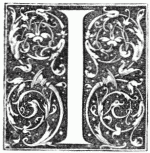
FIG. 7.—Source of this letter
unknown.N 1454 the art of printing in movable types and with a press had been
perfected in Germany; soon afterward the art of block-printing, although
it continued to be practised until the end of the century, began to fall
into decay, and the ancient block-books, in which the text had been
subsidiary to the colored engravings, speedily gave place to the modern
printed book, in which the engravings were subsidiary to the text. This
change did not come about without a struggle between the rival arts. In
all the great cities of Germany and the Low Countries, the
block-printers and wood-engravers had long been organized into strong
and compact guilds, enforcing their rights with strict jealousy, and
privileged from the first to make use of movable types and the press;
the new printers, on the other hand, were comparatively few in number,
disunited and scattered, accustomed to go from one town to another, and
every attempt by them to insert woodcuts into their books was looked
upon and resented as an encroachment on the art of the block-printers
and the wood-engravers. At first the new printers closely imitated the
manuscripts of their time. They used woodcuts to take the place of the
miniatures with which the manuscripts were embellished. They copied
directly the handwriting of the scribes in the forms of their type, and
were thus led to the use of ornamental initial letters like those which
had long been designed by the scribes and illuminated by the
rubricators; such are the beautiful initial letters in the Psalter of
Faust and Scheffer, published at Mayence in 1457, which are the earliest
wood-engravings in a dated book, and are designed and executed with a
skill which has rarely been surpassed. It was by such attempts that the
new printers incurred the hostility of the wood-engravers, which was
soon actively shown. Even as late as 1477, the guild at Augsburg, which
was then the most numerous and best-skilled in Germany, opposed the
admission of Gunther Zainer, who had just set up a printing-press there,
to the rights of citizenship, and he owed his freedom from molestation
to the interference of the friendly abbot, Melchior de Stamham. The
guild succeeded in obtaining an ordinance forbidding Zainer to insert
woodcuts or initials engraved on wood into his books—a prohibition
which remained in force until he came to an understanding with them, by
agreeing to use only such woodcuts and initials as should be engraved by
them. In this, or similar ways, as in every displacement of labor by
mechanical improvements, after a short struggle the cheaper and more
rapid art prevailed; the wood-engravers gave up to the printers the
principal part in the making of books, and became their servants.
The new printers were most active in the great German cities—Cologne, Mayence, Nuremberg, Ulm, Augsburg, Strasburg, and Basle—and from the presses of these cities the greatest number of books with woodcuts were issued. This is one reason why the mastering influence from this time in Northern wood-engraving was German; why German taste, German rudeness, coarseness, and crudity became the main characteristics of wood-engraving in the latter half of the fifteenth century. The Germans had been, from the first, artisans rather than artists. They had produced many anonymous prints and block-books, but they had never attained to the power and elegance of the Flemish school. Now the quality of their work became even less excellent; for decline had set in, and the increasing popularity of the new art of copperplate-engraving combined with the unfavorable influences resulting from printing, which required cheap and rapid processes, to degrade the art still lower. The illustrations in the new books had ordinarily little art-value: they were often grotesque, stiff, ignorant in design, and careless or inexpert in execution; but they had nevertheless their use and their interest.
The German influence was made more powerful, too, by other causes than the foremost part taken by Germany in printing. The Low Countries, hitherto so civilized and prosperous, the home and cradle of early Northern art, the influence of which had spread abroad and become the most powerful even over the German painters themselves, were now involved in the turbulence and disaster of the great wars of Charles the Bold. They not only lost their honorable place at the head of Northern civilization, but on the marriage of their Duchess, Mary of Burgundy, the daughter of Charles the Bold, to the Emperor Maximilian, they yielded in great part to the German influence, and became more nearly allied in character and spirit to the German cities, as they had before been more akin to France. The woodcuts in the books of the Netherlands, where printing was introduced by German workmen, share in the rudeness of German art; in proportion as their previous performance had been more excellent, the decline of the art among them seems more great. There are, occasionally, traces of the old power of design and execution in their later work; but from the time that books began to be printed Germany took the lead in wood-engraving.
The German free cities were then animated with the new spirit which was to mould the great age of Germany, and result in Dürer and Luther. The growing weakness of the Empire had fostered independence and self-reliance in the citizens, while the increase of commerce, both on the north to the German Ocean, and on the south through Venice, had introduced the wants of a higher civilization, and afforded the means to satisfy them. Local pride, which showed itself in the rivalries and public works of the cities, made their enterprise and industry more active, and gave an added impulse to the rapid transformation of military and feudal into commercial and democratic life. In these cities, where the body of men interested in knowledge and with the means of acquiring it, became every year more numerous, the new presses sent forth books of all kinds—the religious and ascetic writings of the clergy, mediæval histories, chronicles and romances, travels, voyages, botanical, military, and scientific works, and sometimes the writings of classic authors; although, in distinction from Italy, Germany was at first devoted to the reproduction of mediæval rather than Greek and Latin literature. The books in Latin, the learned tongue, were usually without woodcuts; but those in the vulgar tongues, then becoming true languages, the development and fixing of which are one of the great debts of the modern world to printing, were copiously illustrated, in order to make them attractive to the popular taste.
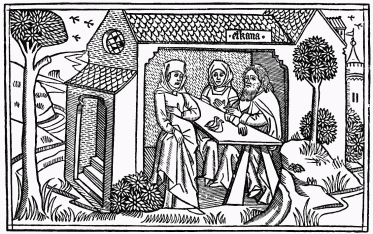
FIG. 8.—The Grief of Hannah. From the Cologne Bible,
1470-’75
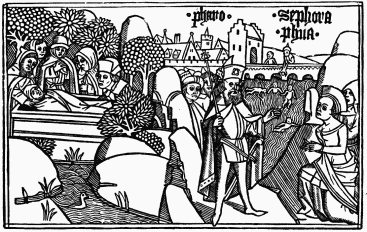
FIG. 9.—Illustration of Exodus I. From the Cologne
Bible, 1470-’75.
The great book, on which the printers exercised most care, was the Bible. Many editions were published; but the most important of these, in respect to the history of wood-engraving, was the Cologne Bible (Figs. 8, 9), which appeared before 1475, both because its one hundred and nine designs were, probably, after the block-books, the earliest series of engraved illustrations of Scripture, and were widely copied, and also because they show an extension of the sphere of thought and increased intellectual activity. The designers of these cuts relied less upon tradition, displayed more original feeling, and showed greater variety and vivacity in their treatment, than the artists who had engraved the Biblia Pauperum. The latter volume contained, as has been seen, nearly the last impression of century-old pictorial types in the mediæval conventional manner; the Cologne Bible defined conceptions of Scriptural scenes anew, and these conceptions became conventional, and re-appeared for generations in other illustrated Bibles in all parts of Europe; not, however, because of an immobility of mind characteristic of the community, as in earlier times, but partly because the printers preserved and exchanged old wood-blocks, so that the same designs from the same blocks appeared in widely distant cities, and partly because it was less costly for them to employ an inferior workman to copy the old cut, with slight variations, than to have an artist of original inventive power to design a wholly new series. Thus the Nuremberg Bible of 1482 is illustrated from the same blocks as the Cologne Bible, and the cuts in the Strasburg Bible of 1485 are poor copies of the same designs. From the marginal border which encloses the first page of the Cologne Bible it appears that wood-engraving was already looked on, not only as a means of illustrating what was said in the text, but as a means of decoration merely. Here, among the foliage and flowers, are seen running animals, and in the midst the hunter, the jongleur, the musician, the lover, the lady, and the fool—an indication of delight in nature and in the variety of human life, which, simply because it is not directly connected with the text, is the more significant of that freer range of sympathy and thought characteristic of the age. Afterward these decorative borders, often in a satiric and not infrequently in a gross vein, wholly disconnected with the text, and sometimes at strange variance with its spirit, are not uncommon. The engravings that follow this frontispiece represent the customary Scriptural scenes, and the series closes with two striking designs of the Last Judgment and of Hell. In the former angels are hurling pope, emperor, cardinal, bishop, and king into hell, and in the latter their bodies lie face to face with the souls marked with the seal of God—a satire not unexampled before this time, and indeed hardly bolder than hitherto, but of a spirit which showed that Luther was already born. “It is no small honor for our wood-engravers,” says Renouvier, “to have expressed public opinion with such hardihood, and to have shown themselves the advanced sentinels of a revolution.” The engraving in this Bible tells its own story without need of comment; but, heavy and rude as much of it is, it surpasses other German work of the same period; and it must not be forgotten that the awkwardness of the drawing was much obscured by the colors which were afterward laid on the designs by hand. It is only by accident or negligence that woodcuts were left uncolored in early German books, for the conception of a complete picture simply in black and white was a comparatively late acquisition in art, and did not guide the practice of wood-engravers until the last decade of the century, when, indeed, it effected a revolution in the art.
Of the many other illustrated Bibles which appeared during the last quarter of the fifteenth century, the one published at Augsburg, about 1475, and attributed to Gunther Zainer, alone has a peculiar interest. All but two of its seventy-three woodcuts are combined with large initial letters, occupying the width of a column, for which they serve as a background, and by which they are framed in; these are the oldest initial letters in this style, and are original in design, full of animation and vigor, and rank with the best work of the early Augsburg wood-engravers. It is not unlikely that these novel and attractive letters were the very ones of which the Augsburg guild complained in the action that they brought against Zainer in 1477. Afterward the German printers gave much attention to ornamented capitals, both in this style, which reached its most perfect examples in Holbein’s alphabets, and in the Italian mode, in which the design was relieved in white upon a black ground.
Next to the Bibles, the early chronicles and histories are of most interest for the study of wood-engraving. They are records of legendary and real events, intermingled with much extraneous matter which seemed to their authors curious or startling. They usually begin with the Creation, and come down through sacred into early legendary and secular history, recounting miracles, martyrdoms, sieges, tales of wonder and superstition, omens, anecdotes of the great princes, and the like. Each of them dwells especially upon whatever glorifies the saints, or touches the patriotism, of their respective countries. They are filled with woodcuts in illustration of their narrative, beginning with scenes from Genesis. Thus the Chronicle of Saxony, published at Mayence in 1492, contains representations of the fall of the angels, the ark of Noah, Romulus founding Rome, the arrival of the Franks and the Saxons, the deeds of Charlemagne, the overthrow of paganism, the famous emperors, Otho burning a sorcerer, Frederick Barbarossa, and the Emperor Maximilian. The Chronicle of Cologne, published in 1492, is similarly illustrated with views of the great cathedral, with representations of the Three Kings, the refusal of the five Rhine cities to pay impost, and like scenes.
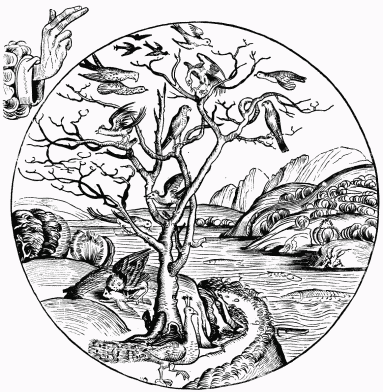
FIG. 10.—The Fifth Day of Creation. From Schedel’s
“Liber Chronicarum.” Nuremberg, 1493.
The most important of the chronicles, in respect to wood-engraving, is the Chronicle of Nuremberg (Figs. 10, 11, 12), published in that city in 1493. It contains over two thousand cuts which are attributed to William Pleydenwurff and Michael Wohlgemuth, the latter the master of Albert Dürer; they are rude and often grotesque, possessing an antiquarian rather than an artistic interest; many of them are repeated several times, a portrait serving indifferently for one prophet or another, a view of houses upon a hill representing equally well a city in Asia or in Italy, just as in many other early books—for example, in the History of the Kings of Hungary—a battle-piece does for any conflict, or a man on a throne for any king. The representations were typical rather than individual. In some of the designs there is, doubtless, a careful truthfulness, as in the view of Nuremberg, and perhaps in some of the portraits. The larger cuts show considerable vigor and boldness of conception, but none of them are so good as the illustrations, also attributed to Wohlgemuth, in the Schatzbehalter, published in the same city in 1491. The distinction of the Nuremberg chronicle does not consist in any superiority of design which can be claimed for it in comparison with other books of the same sort, but in the fact that here were printed, for the first time, woodcuts simply in black and white, which were looked on as complete without the aid of the colorist, and were in all essential points entirely similar to modern works. This change was brought about by the introduction of cross-hatching, or lines crossing each other at different intervals and different angles, but usually obliquely, by means of which blacks and grays of various intensity, or what is technically called color, were obtained. This was a process already in use in copperplate-engraving. In that art—the reverse of wood-engraving since the lines which are to give the impression on paper are incised into the metal instead of being left raised as in the wood-block—the engraver grooved out the crossing lines with the same facility and in the same way as the draughtsman draws them in a pen-and-ink sketch, the depth of color obtained depending in both cases on the relative closeness and fineness of the hatchings. In engraving in wood the task was much more difficult, and required greater nicety of skill, for, as in this case the crossing lines must be left in relief, the engraver was obliged to gouge out the minute diamond spaces between them. At first this was, probably, thought beyond the power of the workmen. The earliest woodcut in which these cross-hatchings appear is the frontispiece to Breydenbach’s Travels, published at Mayence in 1486, which is, perhaps, the finest wood-engraving of its time. In the Nuremberg chronicle this process was first extensively employed to obtain color, and thus this volume marks the beginning of that great school in wood-engraving which seeks its effects in black lines.
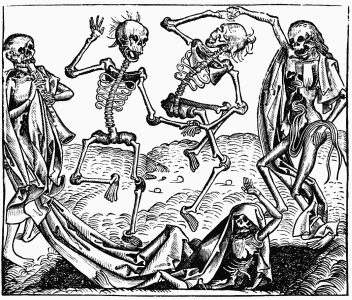
FIG. 11.—The Dancing Deaths. From Schedel’s “Liber
Chronicarum.” Nuremberg, 1493.
To describe the hundreds of illustrated books which the German printers published before the end of the century belongs to the bibliographer. Should any one turn to them, he would find in the cuts that they contain much diversity in character, but little in merit; he would meet at Bamberg, in the works printed by Pfister, whose Book of Fables, published 1461, is the first dated volume with woodcuts of figures, designs so rude that they are generally believed to have been hacked out by apprentices wholly destitute of training in the craft; he would notice in the books of Cologne the greater self-restraint and sense of proportion, in those of Augsburg the greater variety, vivacity, and vigor, in those of Nuremberg the greater exaggeration and grotesqueness. In the publications of some cities he would come upon the burning questions of that generation: the siege of Rhodes by the Turks, the wars of Charles the Bold against Switzerland, the martyrdom of John Huss; elsewhere he would see naïve conceptions of mediæval romance and chivalry, and not infrequently, as in the Boccaccio of Ulm, grossnesses not to be described; at Strasburg he would hardly recognize Horace and Virgil with their Teutonic features and barbaric garb; while at Mayence botanical works, which strangely mingle science, medicine, and superstition, would excite his wonder, and at Ulm military works would picture the forgotten engines of mediæval warfare; in the Netherlands, too, he would discern little difference in literature or in design; everywhere he would find the unevenness of Gothic taste—one moment creating works with a certain boldness and grandeur of conception, the next moment falling into the inane and the ludicrous; everywhere German realism making each person appear as if born in a Rhine city, and each event as if taking place within its walls; everywhere, too, an ever-widening interest in the affairs of past times and distant countries, in the thought and life of the generations that were gone, in the pursuits of the living, and the multiform problems of that age of the Reformation then coming on. It is impossible to turn from this wide survey without a recognition of the large share which wood-engraving, as the suggester and servant of printing, had in the progress made toward civilization in the North during that century. Woltmann does not over-state the fact when he says: “Wood-engraving and copperplate-engraving were not alone of use in the advance of art; they form an epoch in the entire life of mind and culture. The idea embodied and multiplied in pictures became, like that embodied in the printed word, the herald of every intellectual movement.”
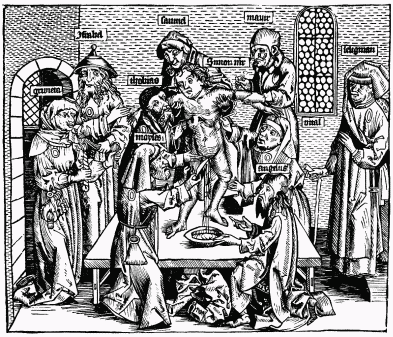
FIG. 12.—Jews Sacrificing a Christian Child. From
Schedel’s “Liber Chronicarum.” Nuremberg, 1493.
As typography spread from Germany through the other countries of Europe, the art of wood-engraving accompanied it. The first books printed in the French language appeared about 1475, at Bruges, where the Dukes of Burgundy had long favored the vulgar tongue, and had collected many manuscripts written in it in their great library, then one of the finest in Europe. The first French city to issue French books from its presses was Lyons, which had learned the arts of printing and of wood-engraving from Basle, Geneva, and Nuremberg, in consequence of their close commercial relations. If a few doubtful and scattered examples of early work be excepted, it was in these Lyonese books that French wood-engraving first appeared. From the beginning of printing in France, Lyons was the chief seat of popular literature, and the centre of the industry of printing books in the vulgar tongue, as Paris was the chief seat of the literature of the learned, both in Latin and French, and devoted itself to reproducing religious and scientific works.[32] At the close of the fifteenth and beginning of the sixteenth centuries the Lyonese presses issued the largest number of first editions of the popular romances, which were sought, not merely by French purchasers, but throughout Europe. These books were meant for the middle class, who were unable to buy the costly manuscripts, illuminated with splendid miniatures, in which literature had previously been locked up. They were not considered valuable enough to be preserved with care, and have consequently become scarce; but they were published in great numbers, and exerted an influence in the spread of literary knowledge and taste which can hardly be over-estimated. Woodcuts were first inserted in them about 1476; but for twenty years after this wood-engraving was practised rather as a trade than an art, and its products have no more artistic merit than similar works in Germany. In 1493 an edition of Terence, in which the earlier rudeness gave way to some skill in design, showed the first signs of promise of the excellence which the Lyonese art was to attain in the sixteenth century.
In Paris, the German printers, who had been invited to the city by a prior of the Sorbonne, had issued Latin works for ten years before wood-engraving began to be practised. After 1483, however, Jean Du Pré, Guyot Marchand, Pierre Le Rouge, Pierre Le Caron, Antoine Verard, and other early printers applied themselves zealously to the publication of volumes of devotion, history, poetry, and romance, in which they made use of wood-engraving. The figure of the author frequently appears upon the first page, where he offers his book to the king or princess before whom he kneels; and here and there may be read sentiments like the following, which is taken from an early work of Verard’s, where they are inserted in fragmentary verses among the woodcuts: “Every good, loyal, and gallant Catholic who begins any work of imagery ought, first, to invoke in all his labor the Divine power by the blessed name of Jesus, who illumines every human heart and understanding; this is in every deed a fair beginning.”[33] The religious books, especially the Livres d’Heures (Fig. 13), were filled with the finest examples of the Parisian art, which sought to imitate the beautiful miniatures for which Paris had been famous from even before the time when Dante praised them. In consequence of this effort the woodcut in simple line served frequently only as a rough draft, to be filled in and finished by the colorist, who, indeed, sometimes wholly disregarded it and overlaid it with a new design. Before long, however, the wood-engravers succeeded in making cuts which, so far from needing color, were only injured by the addition of it; but these were considered less valuable than the illuminated designs, and the wood-engravers were hampered in the practice of their art by the miniaturists, who, like the guilds at Augsburg and other German towns, complained of the new mode of illustration as a ruinous encroachment on their craft.
Whether with or without color, the engravings in the Livres d’Heures are beautiful. Each page is enclosed in an ornamental border made up of small cuts, which are repeated in new arrangements on succeeding leaves; here and there a large cut, usually representing some Scriptural scene, is introduced in the upper portion of the page, and the text fills the vacant spaces. Not infrequently the taste displayed is Gallic rather than pious, and delights in profane legends and burlesque fancies which one would not expect to meet in a prayer-book. These volumes were so highly prized by foreign nations for the beauty of their workmanship, that they were printed in Flemish, English, and Italian. Those which were issued by Verard, Vostre, Pigouchet, and Kerver were the best products of the early French art.[34] The secular works which contain woodcuts are hardly worthy of mention, excepting Guyot Marchand’s La Danse Macabre, first published in 1485, which is a series of twenty-five spirited and graceful designs, marked by French vivacity and liveliness of fancy. In all early French work the peculiar genius of the people is not so easily distinguishable as in this example, but it is usually present, and gives a national characteristic to the art, notwithstanding the indubitable influences of the German archaic school in the earlier time, and of the Italian school in the first years of the sixteenth century.
French wood-engraving is remarkable, in respect to its technique, for the introduction of criblée, or dotted work, which has previously[35] been described, into the backgrounds on which the designs are relieved. This mode of engraving is probably a survival from the goldsmiths’ work of the first part of the fifteenth century, and it is not unlikely that, as Renouvier suggests, these criblée grounds were meant to represent the gold grounds on which both miniatures and early paintings were relieved. From an examination of the peculiarities of these engravings, some authors[36] have been led to maintain that they were taken off from metal plates cut in relief, and nearly all writers are ready to admit that this was sometimes, but not always, the case. The question is unsettled; but it is probable that wood was sometimes employed, and it would be impossible to determine with certainty what share in these prints belongs to wood-engraving and metal-engraving respectively. In general, French wood-engraving, in its best early examples at Paris, was characterized by greater fineness and elegance of line, and by more feeling for artistic effects, than was the case with German book-illustration; but the Parisian chronicles, histories, botanical works, and the like, possessed no greater merit than similar publications at Lyons or in the German cities, and their influence upon the middle classes in furthering the advance of education and taste was probably much less.
England was far behind the other nations of Europe in its appreciation of art, and wood-engraving throve there as feebly as did the other arts of design. The first English book with woodcuts was Caxton’s Game and Playe of the Chesse, published about 1476, the first edition of which was issued two years earlier, without illustrations. It is supposed by some writers that Caxton imported the blocks from which these cuts were printed, as he did the type for his text; and it is certain that in later years wood-blocks and metal-plates were brought over from the Continent for illustrating English books. It is not improbable that the art was practised by Englishmen as a part of the printer’s craft, and that there were no professional wood-engravers for many years; indeed, Chatto doubts whether the art was practised separately even so late as Holbein’s time. The cuts in Caxton’s works, and in those of the later printers, Wynkyn de Worde and Richard Pynson, were altogether rude and uninteresting in design. If the honor of them belongs to foreign rather than English workmen, no great hurt is done to English pride.
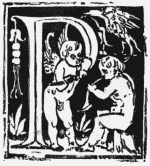
FIG. 14.—From Ovid’s “Metamorphoses.”
Venice, 1518
(design, 1497).REVIOUS to the time of Dürer wood-engraving in the North, as has been
seen, was little more than a trade, and has its main interest to the
scholar as an agent of civilization; in Italy it first became a fine
art, a mode of beautiful expression. The Italians, set in the midst of
natural loveliness and among the ruins of ancient art, had never wholly
lost the sense of beauty; they may have paid but slight attention to
what was about them, but they lived life-long in the daily sight of fair
scenes and beautiful forms, which impressed their senses and moulded
their nature, so that, when with the revival of letters they felt the
native impulses of humanity toward the higher life stirring once more in
their hearts, they found themselves endued with powers of perception and
appreciation beyond any other people in the world. These powers were not
the peculiar possession of a well-born class; the centuries had bred
them unobserved into the nature of the race, into the physical
constitution of the whole people. The artisan, no less than the prince,
took delight in the dawn of art, and welcomed it with equal worship. Nor
was this artistic instinct the only common acquisition; the enthusiasm
for letters was likewise widely shared, so that some of the best
manuscripts of the classics have come down to modern times from the
hands of humble Florentine workmen. Italy, indeed, was the first country
where democratic civilization had place; here the contempt of the
Northern lord for the peasant and the mechanic had never been
wide-spread, partly because mercantile life was early held to be
honorable, and partly because of peculiar social conditions. The long,
uninterrupted intercourse with the remains of Roman civilization in the
unbarbarized East, the contact with Saracenic civilization in the South,
the culture of the court of the Two Sicilies, and the invariably
levelling influence of commerce, had made Italy the most cosmopolitan of
European countries; the sharp and warlike rivalry of small, but
intensely patriotic, states, and the necessity they lay under of
utilizing for their own preservation whatever individual energy might
arise among them, perhaps most of all the powerful example of the
omnipresent Church in which the son of a swineherd might take the Papal
Throne, had contributed to make it comparatively easy to pass from lower
to higher social ranks; the aristocratic structure of society remained,
but the distinction of classes was obscured, and the excellence of the
individual’s faculties, the energy and scope of his powers, were
recognized as the real dignities which were worthy of respect. In this
recognition of the individual, and this common taste for art and
letters, lay the conditions of new and vigorous intellectual life; they
resulted in the great age of Italy. It was this in the main that made
possible the popular fervor for the things of the mind in the Italian
Renaissance, to which nothing else in the world’s history is comparable
but the popular enthusiasm of the modern Revolution for liberty. Dante
gave his country a native language, the Humanists gave it the literature
of Rome, the Hellenists the literature of Greece; poets sang and artists
painted with a loftiness and dignity of imagination, a sweetness and
delicacy of sentiment, an energy and reach of thought, a music of verse
and harmony of line and color, still unsurpassed. The gifts which these
men brought were not for a few, but for the many who shared in this
mastering, absorbing interest in the things of the mind, in beauty and
wisdom, which was the vital spirit of the Italian Renaissance.
Thus it happened that when the German printers brought over the Alps the art which was to do so much toward civilizing the North, they found in Italy a civilization already culminated, hastening on, indeed, to a swift decline; they found the people already in possession of the manuscripts which they came to reproduce and multiply, and the princes, like Frederick of Urbino,[37] “ashamed to own a printed book” among their splendid collections, where every art seemed to vie in making beautiful their volumes of vellum and velvet. Wood-engraving, too, which here as elsewhere accompanied printing, could be of no use in spreading ideas and preparing the way for a popular knowledge and appreciation of art; it was to receive rather than bestow benefits; it was to be made a fine art before it could perform any real service. The printers, however, proved the utility of their art, and were soon busily employed in all the Italian cities in reproducing the precious manuscripts with which Italy was stored; and from the first they called wood-engraving to their aid. It is true that the earliest Italian woodcuts—which were, however, Germanic in design and execution—were as rude as those of the Northern workshops. They appeared for the first time in an edition of Cardinal Turrecremata’s Meditations, published at Rome by Ulric Hahn, in 1467. In Venice, although without much doubt the art had been practised there by the makers of cards and prints long before, woodcuts were first introduced by the German printers. The accompanying cuts are fair examples of their work (Figs. 15, 16, 17, 18, 20, 21), and at the same time interesting reflections of popular fable. The views of Venice are examples of the very common attempts to represent the actual appearance of the great cities, which possess sometimes an historic value. This Germanic work is but slightly different from that already noticed; but as soon as the art became naturalized, and was practised by the Italian engravers, it was characterized at once by beauty of design. There is something more than promise in an edition of Æsop’s Fables, published at Verona in 1481, as may be seen from these examples (Figs. 22, 23), taken from a Venetian reprint of 1491. An Ovid, printed at Venice in 1497, is adorned with several excellent woodcuts, such as this of The Contest of Apollo and Pan (Fig. 19); and there are other works of similar merit belonging to the same period. The finest example of Italian wood-engraving before it reached its highest perfection in the Hypnerotomachia Poliphili, or Dream of Poliphilo, is a volume which contains the epistles of St. Jerome, and a description of cloistral life. This is adorned with a large number of small woodcuts of simple beauty, marked by grace and feeling, and full of reminiscences of moods and sentiments which have long ceased to hold a place in human hearts (Figs. 24, 25, 26). Here is pictured the religious life; the monk’s cell is barely furnished, but it is seldom without shelves of books and a window opening upon a distant prospect; the teacher expounds to his pupils the great volume on the desk before him; the priest administers consolation to the dying and the bereaved, and encourages the feeble of spirit and the sinful; the preacher discourses to his brethren and the crowding people the Blessed Word; the nuns of the sisterhood perform their daily offices of religion, the panel of the confessional slides back for them, they wash the feet of the poor, they sit at table together; all the pieties of their life, which knew no close human relation, which knew only God and mankind, are depicted; and now and then there is a thought, too, of the worldly life outside—here the beautiful youths stop to gaze at the convent gates barred against them. There are other cuts, also, of landscape, towers, and cities. The great themes of religion are not forgotten—the Resurrection and the Judgment unfold their secrets of justice and of the life eternal. In all the religious spirit prevails, and gives to the whole series a simple and sweet charm. One may look at them long, and be content to look many times thereafter.
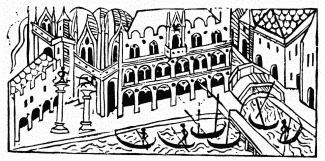
FIG. 18.—View of Venice. From the “Fasciculus Temporum.”
Venice, 1484.

FIG. 19.—The Contest of Apollo and Pan. From Ovid’s
“Metamorphoses.” Venice, 1518 (design, 1497).
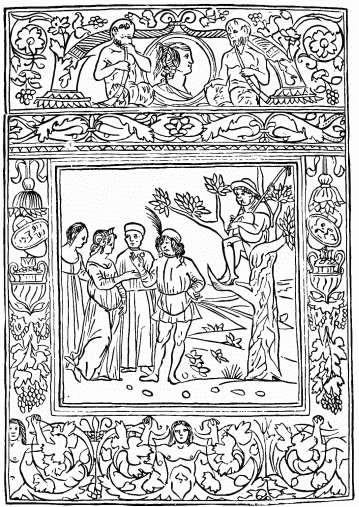
FIG. 22.—The Woman and the Thief. From “Æsop’s Fables.”
Venice, 1491 (design, 1481).
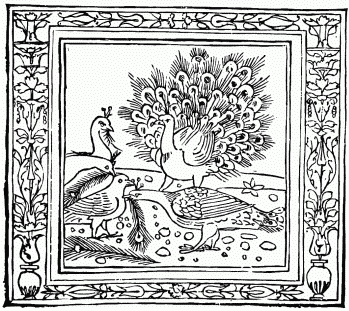
FIG. 23.—The Crow and the Peacock. From “Æsop’s Fables.”
Venice, 1491 (design, 1481).
This volume of St. Jerome was, however, only a worthy forerunner of the Dream of Poliphilo, in which Italian wood-engraving, quickened by the spirit of the Renaissance, displayed its most beautiful creations. It was written by a Venetian monk, Francesco Columna, in 1467, and was first printed by Aldus, in 1499. It is a mystical work, composed in Italian, strangely mingled with Greek, Latin, Hebrew, and Arabic, and its theme, which is the praise of beauty and of love, is obscured by abstruse knowledge and by much varied learning. It recalls Dante’s poem in some ways. The Renaissance Dominican, too, was a lover with a human Beatrice, of whom his dream is the memorial and the glory; like Dante, he seems to symbolize, under the beauty and guardianship of his gracious lady, a body of truth and a theory of life; and, as in Dante’s poem Beatrice typified Divine Wisdom and theology, his Polia stood for the new gospel of this world’s joy, for the loveliness of universal nature and the perfection of ancient art; in adoring her he worships them, and in celebrating her, as alike his goal and his guide through the mazes of his changing dream, he exalts the virtue and the hope that lay in the Renaissance ideal of life. There is, perhaps, no volume where the exuberant vigor of that age is more clearly shown, or where the objects for which that age was impassioned are more glowingly described. This romantic and fantastic rhapsody mirrors every aspect of nature and art in which the Italians then took delight—peaceful landscape, where rivers flow by flower-starred banks and through bird-haunted woods; noble architecture and exquisite sculpture, the music of soft instruments, the ruins of antiquity, the legends of old mythology, the motions of the dance, the elegance of the banquet, splendor of apparel, courtesy of manners, even the manuscript, with its covers of purple velvet sown with Eastern pearls—everything which was cared for and sought in that time, when the gloom of asceticism lifted and disclosed the wide prospect of the world lying, as it were, in the loveliness of daybreak. Poliphilo wanders through fields and groves bright with this morning beauty, voyages down streams and loiters in gardens that are filled with gladness; he is graciously regaled in the palace, he attends the sacrifice in the temple, where his eyes are charmed by every exquisite ornament of art; he encounters in his progress triumphal processions, as they wind along through the pleasant country, bewildering the fancy with their lavish magnificence as of an Arabian dream; chariots that are wrought out of entire precious stones, carved with bass-reliefs from Grecian fables, and drawn by half-human centaurs or strange animals,—elephants, panthers, unicorns, in trappings of silk and jewels, pass before him, bearing exalted in their midst sculptured figures, Europa and the Bull, Leda and the Swan, Danaë in the shower of gold, and, last and most wonderful, a vase, beautifully engraved and adorned, out of which springs a golden vine, with leaves of Persian selenite and grapes of Oriental amethyst; and about all are groups of attendant nymphs, fauns, satyrs, mænads, and lovely women, crowned with flowers, with instruments of music in their hands, chanting the praise of Valor and of Pleasure; again, he lingers among ancient ruins and remembers their perished glory, and falls into reflection, like that of the traveller whom he describes, “among those venerable monuments which still make Rome the queen of cities; where he sees,” thinks Poliphilo, “the hand of Time, which punishes the excess of pride; and, seeking then on the steps of the amphitheatre the heads of the legions and that conquering eagle, that Senate whose decrees made and unmade the kings of the world, those profound historians, those eloquent orators, he finds there only a rabble of beggars, to whom an ignorant and ofttimes lying hermit preaches, only altars without honor and saints without a believer; the artist reigns alone in that vast enclosure; pencil in hand, rich with memories, he sees the whole of Rome, her pomp and her glory, in one mutilated block which a fragment of bass-relief adorns.” Inspired by these thoughts, Poliphilo delays among like relics of the past, and reads on shattered tombs the brief inscriptions which tell the history of the lost lovers who lie beneath, while the pagan burden of their sorrow, and the pagan calm of the “adieu” with which each inscription ends, fill him with tender sentiment. So his dream drifts on through ever-shifting scenes of beauty and ever-dying moments of delight to the hour of awakening. These scenes and these moments, which Francesco Columna called out of his imagination, are pictured in the one hundred and ninety-two designs (Figs. 27, 28, 29, 30) which adorn his book; here in simple outline are the gardens, groves, and streams, the noble buildings, the bath, the palace and the temple, the feast, the allegory of life, the thronging triumphs, the sacrifices, the ruins, the tombs, the lover and his beloved, the priestess and the goddess, cupids, bacchanals, and nymphs—a profusion of loveliness, joy, and revel; here, too, among the others, are some dramatic scenes: the lion and the lovers, Poliphilo fainting before Polia, and his revival at the touch of her lips; altogether, they are a precious memorial of the Renaissance spirit, reflecting alike its passion for the new learning, passing into useless and pedantic knowledge, and its ecstacy of the senses passing into voluptuous delight.
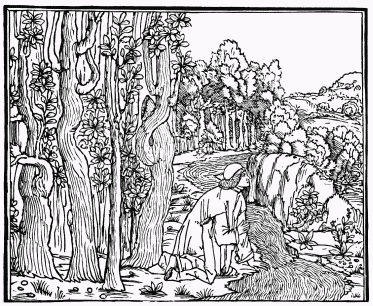
FIG. 27.—Poliphilo by the Stream. From the
“Hypnerotomachia Poliphili.” Venice, 1499.
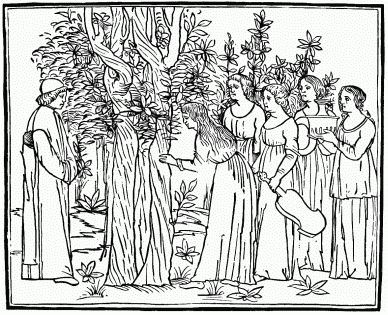
FIG. 28.—Poliphilo and the Nymphs. From the
“Hypnerotomachia Poliphili.” Venice, 1499.
These designs, of which the few that can be given afford only a slight idea, so various are they in beauty and feeling, have been attributed to many illustrious masters, Giovanni Bellini and Raphael among others; but perhaps the conjecture which assigns them to Benedetto Montagna is the most probable. They show what remarkable artistic taste there was even in the inferior masters of Italy. “They are,” says Professor Sydney Colvin,[38] “without their like in the history of wood-cutting; they breathe the spirit of that delightful moment when the utmost of imaginative naïveté is combined with all that is needed of artistic accomplishment, and in their simplicity are in the best instances of a noble composition, a masculine firmness, a delicate vigor and graceful tenderness in the midst of luxurious or even licentious fancy, which cannot be too much admired. They have that union of force and energy with a sober sweetness, beneath a last vestige of the primitive, which in the northern schools of Italy betokens the concurrent influence of the school of Mantegna and the school of Bellini.” Italy never afterward produced so noble a monument of the art as this work of its early days.
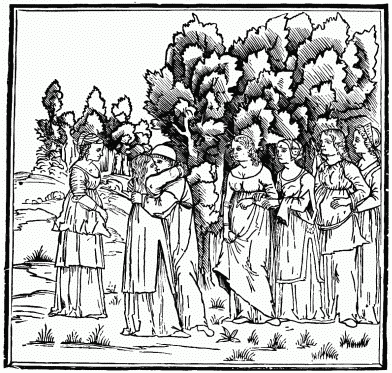
FIG. 30.—Poliphilo meets Polia. From the
“Hypnerotomachia Poliphili.” Venice, 1499.
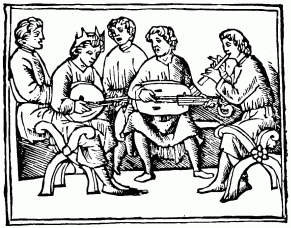
FIG. 31.—Nero Fiddling. From the Ovid of 1510. Venice.
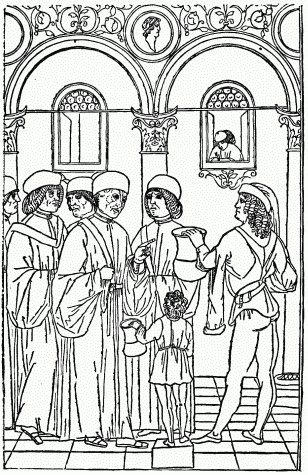
FIG. 32.—The Physician. From the “Fasciculus Medicinæ.”
Venice, 1500.
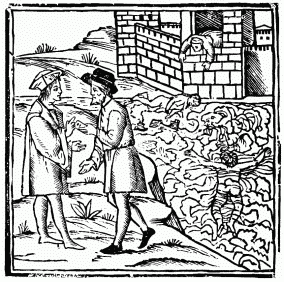
FIG. 33.—Hero and Leander. From the Ovid of 1515.
Venice.
The art did not, however, fall into decline immediately. It is true that wood-engraving never won for itself in Italy a place in the popular esteem like that which it held in the North; the Italians were too fond of color, and possessed too many master-pieces of the nobler arts, to set a very high value on such simple effects; but, nevertheless, in the first quarter of the sixteenth century there appeared in Venice, the chief seat of the art, many volumes which were illustrated by woodcuts of excellent design, such as this of Nero (Fig. 31), from an Ovid of 1510, the representation of the physician attending a patient stricken with the plague (Fig. 32), from the Fasciculus Medicinæ, by Johannes de Ketham, published in 1500, and that of Hero and Leander (Fig. 33), from an Ovid of 1515. Of Venetian work of lesser merit, the representation of Dante and Beatrice (Fig. 34), from a Dante of 1520, and the cuts (Figs. 35, 36, 37, 38), from the Catalogue of the Saints, by Petrus de Natalis, published in 1506, may serve as examples. The whole Italian series, even as illustrated by the cuts here given, exhibits a greater variety of interest, knowledge, and feeling than does the work of any other nation, and affords a lively notion of the manifold elements that went to make up the Renaissance; it reflects fable, superstition, learning, the symbolism of mediæval theology, ancient myth and legend, the rise of the modern feeling for nature, the passion for beauty and art; and, ranging from the life of the scholar and the nunnery to that of the beggar and the plague, it pictures vividly contemporary times, while it adds to the interest of history and humanity the interest of beauty. Its prime, however, was of brief duration. Venetian engraving, and that of the other Italian cities also, continued to be marked by this simplicity and skill in design until 1530, when cross-hatching was introduced from the North; after that date wood-engraving shared in the rapid decline into which all the arts of Italy fell in consequence of the internal troubles of the country, which, from the time of the sack of Rome, in 1527, became the common battlefield of Europe for generations. But, in the short space during which the Italians practised the art with such success, they showed that they had mastered it, and had come to an understanding of its capacities, both as a mode of drawing in black line and as a mode of relief in white line, such as appears in their arabesques and initial letters, examples of which are scattered through this volume. They came to this mastery and understanding before any other nation, because of their artistic instinct; for the same reason, they did not surpass the rudeness of German workmen in skill more than they excelled in simple beauty of design the best of early French work, which was characterized by such confused exuberance of fancy and such profusion of detail. They breathed into the art the Italian spirit, and its presence made their works beautiful.
To the Italian love of color is due the development of what is known as engraving in chiaroscuro, a process which, although it had been practised in Germany since 1506, was claimed as a new invention by Ugo da Carpi (1460-1523), at Venice, in 1516, and was carried by the Italians to the highest point of perfection which it reached in the sixteenth century. It was an attempt to imitate the results of painting; two, and sometimes several, blocks were used in the process; on the first the outlines and heavy shadows of the design were engraved, and a proof was taken off; on the second block the lighter parts of the design were engraved, and an impression was taken off from this on the same print in a different color, or, at least, in a color of different intensity; thus the original proof was overlaid with different tints by successive impressions from different blocks, and a variety of shades was obtained in the finished engraving, analogous to those which the painter gets by laying flat tints over each other with the brush. Great care had to be taken in laying the original proof down on the second block, so that the lines of the design should fall in exactly the same position as in the first block; it is owing to a lack of exactness in this superposition of the proof on the later blocks that some of these engravings are so displeasing. There was considerable variety in the detail of the process. Sometimes the impression from the outline block was taken last; sometimes the different impressions were taken off in different colors, but usually in the same color of different intensities; sometimes the impressions were taken off on colored paper. The Italians used four blocks at an early time, and were able to imitate water-colors with some success. All of their prints in this kind are marked by more artistic feeling and skill than those of the Germans, even when the latter are by masters. This application of the art, however, is not a true development, and really lies outside its province.
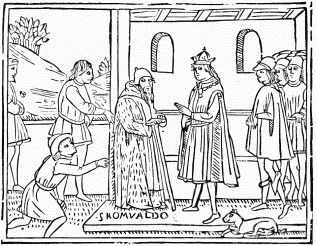
FIG. 38—Romoaldus, the Abbot. From the “Catalogus
Sanctorum.” Venice, 1506.
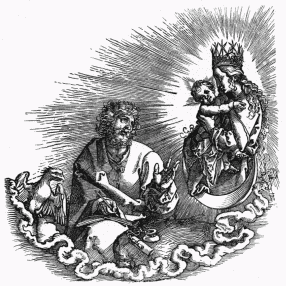
A FIG. 39.—From an Italian Alphabet of the 16th
Century.
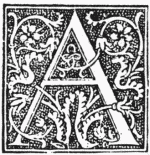
FIG. 39.—From an Italian
Alphabet of the 16th
Century.LREADY, before the Dream of Poliphilo had been published in Venice,
wood-engraving in the North had passed into the hands of the great
German master who was to transform it; in the studio of Albert Dürer
(1471-1528) it had entered upon its great period. The earlier German
engravers, whose woodcuts in simple outline, shadowed by courses of
short parallel lines, showed a naïve spirit almost too simple for modern
taste, a force ignorant of the channels of expression and feeling
inexpert in utterance, did not know the full resources of their art. It
was not until the very close of the fifteenth century, when they
discarded the aid of the colorists, and sought all their effects from
simple contrast of black and white, that they conceived of
wood-engraving as an independent art; even then their sense of beauty
was so insignificant, and their power of thought was so feeble, that
their works have only an historical value. Dürer was the first to
discover the full capacities of wood-engraving as a mode of artistic
expression; it had begun to imitate the methods of
copperplate-engraving before his day, but he saw immediately that it
could not equal the rival art in that delicacy of line and harmony of
tone on which copperplate-engraving depends for its excellence; the
materials and processes of wood-engraving required different methods,
and Dürer prescribed them. He increased the size of the cuts, gave
breadth and boldness to the lines, and obtained new and pleasing effects
from strong contrasts of black and white. He thus showed the true method
of wood-engraving; but the art owes to him much more than this: he
brought to the practice of it the hand and brain of a great master,
lifted it, a mechanic’s trade, into the service of high imagination and
vigorous intellect, and placed it among the fine arts—a deed of far
more importance than any improvements in processes or methods, even
though they have such brilliant consequences as followed Bewick’s later
innovations. He taught the art a language, put meaning into its words,
and made it capable of conveying the ideas which art can express, and of
spreading them and the appreciation of them among the people.
The application of Dürer’s genius to wood-engraving could not fail of great results. He recorded in it the German Renaissance. Civilization had gained much in freedom of thought, independence of action, and community of knowledge, as well as in a respect for nature; but it was still ruled by the devout and romantic spirit of the Middle Ages. Dürer shared in all the intellectual life of his time, alike in its study of antiquity and its revolt against Rome; he was interested in all the higher subjects for which his contemporaries cared, and his versatile genius enabled him often to work with them in preparing the modern age, but he was not touched by the modern spirit; in thought and feeling he remained deeply religious, fantastic, picturesque, mystical—in a word, mediæval. He did not possess the modern sense of limitation, the power to restrict himself to realizing a definite conception, the power to disregard and refuse what cannot be clearly seen and expressed, which the modern age, when it came, gave to the perfect artist; he was not content to embody his idea simply, directly, and forcibly; he supplemented it with secondary thought and subordinate suggestion in unmeasured profusion; he did not know when his work was done, but kept on adding to it in the true wandering, Gothic spirit, which never finishes its task, because its main purpose does not control it; he allowed his fancy to encumber the noble work of his imagination, and allegory to obscure the truth he uttered; he was not master of himself, but was hurried on by the fire and speed of his own genius along paths which led only to the obscure and the inaccessible. His imagination was deeply suggestive, straightforward, and marvellously fertile in invention; but he interpreted the imaginative world in terms of daily and often homely life; he represented ideal characters, not under ideal forms, but realistically under forms such as he saw about him; he knew beauty only as German beauty, and life and its material surroundings only as German life and German civilization; and thus his works are characterized by an uncouthness which offends minds not habituated to German taste. But there is no need to be irritated at this realism, this content with gross forms, or to wish with Vasari that he had been born in Italy and had studied antiquity at Florence, whereby he would have missed that national endowment which individualized him and gave him a peculiar charm. The grotesqueness disappears as the eye becomes acquainted with the unfamiliar, and the mind is occupied with the emotion, the intellectual idea, and imaginative truth, expressed in these sometimes ugly modes, for they are of that rare value which wins forgiveness for far greater defects of formal beauty than are apparent in Dürer’s work. Although his spirit was romantic and uncontrolled, and his imagination dealt with forms not in themselves beautiful, he possessed the greatest energy of genius of all the masters who have intrusted their works to wood-engraving, and with him it was a favorite art.

FIG. 40.—St. John and the Virgin. Vignette to Dürer’s
“Apocalypse.”
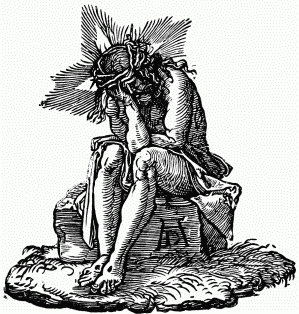
FIG. 41.—Christ Suffering. Vignette to Dürer’s “Larger
Passion.”
The first of the four famous series of designs by which his skill in wood-engraving is best known was published in 1498, but it was probably finished before that time. It consisted of fifteen large cuts in illustration of the Apocalypse of St. John, to which a vignette (Fig. 40) of wonderful nobility and simplicity was prefixed. The theme must have been peculiarly attractive to him, because of the opportunities it afforded for grandeur of conception and for the symbolism in which his genius delighted; it was supernatural and religious; it dealt with images and thoughts on which the laws of this world imposed no restraint, and revealed visionary scenes through types of awe, terror, and mystery, the impressiveness of which had almost no human relation. In attempting to bring such a theme within the compass of the powers of expression which art possesses, he strove to give speech to the unutterable, and to imprison the unsubstantial, so that it is no wonder if, although the fertility of invention and power of drawing which he displayed, and the variety and richness of effect which he obtained, made his work a masterpiece of art, yet much of what he intended to express is not readily comprehended.
This series was succeeded by three others, in which the human interest is far greater, although they are not unmarked by fantastic invention; they were the Larger Passion of our Lord, a series of twelve cuts, including this impressive vignette (Fig. 41), Christ Suffering; the Life of the Virgin, a series of twenty cuts; and the Smaller Passion of our Lord (Figs. 42, 43), a series of thirty-six cuts, the vignette to which (Christ Mocked) is a design marvellous for its intensity, for its seizure of the malignant, mocking spirit in devilish possession of every lineament of the face and every muscle working in that sinuous gesture, for the ideal endurance in the Saviour’s attitude, which needs not those symbols of his sufferings beside him for pity, though Dürer’s genius must crowd every corner with thought and suggestion. These three great series were published about 1511, and were probably the work of the previous six years; they are full of force, and are characterized by tenderness of sympathy and fervor of devotion, as well as by the imaginative insight and power of thought which distinguish all his works. They quickly became popular; several editions were issued, and they were copied by more than one engraver, especially by the famous Italian, Marc Antonio Raimondi, who reproduced the Smaller Passion on copperplate. They marked an epoch in the history of wood-engraving. It is not possible to over-estimate the debt which the art owes Dürer, who thus suddenly and by his own artistic insight revealed the power and dignity which wood-engraving might attain, opened to it a great career, and was its first master in the era of its most splendid accomplishment.
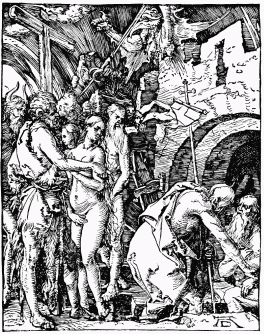
FIG. 43.—The Descent into Hell. From Dürer’s “Smaller
Passion.”
Besides these connected series of woodcuts, many others, making in all three hundred and forty-seven, are attributed to Dürer; and of these one hundred and seventy are undoubtedly from his hand. They represent nearly all aspects of German life in the early sixteenth century, and, taken all together, afford a nearly complete picture of his time, not only in its general characteristics, but in detail. They show for the first time the power of wood-engraving to produce works of real artistic value, and its power to record faithfully the vast variety of contemporary life. Dürer was himself the highest product of the new freedom of individual development in the North, but his individuality gathered the age within itself, and became universal in knowledge and interest; so that he was not only the Reformer of German art and the greatest master in it, but was in a true sense the historian of the German Renaissance; it is to his works, and not least to his wood-engraving, that the student of that age must have recourse for the truest record of its thought and feeling at their best.
In his later years he designed two other works which rank among the chief monuments of wood-engraving; they were the Car and Gate of Triumph, executed for the Emperor Maximilian, who was then the great patron of the art, and employed it to perpetuate the glory of his reign and realm. The Emperor, although the Italians made a jest of him, was one of the most interesting characters in German history. He illustrates in practical life, as Dürer in artistic and intellectual life, the age that was passing away, and he foreshadows more than Dürer the age that was coming on. He was romantic by nature, a lover of the chivalric and picturesque elements of mediæval life; he was skilful in all the manly sports which belonged to a princely education—a daring hunter, and brave in the lists of the tourney; in affairs of more moment he had always some great adventure in hand, the humbling of France, or the destruction of Venice, or the protection of Luther; at home he was devoted to reform, to internal improvements, to establishing permanently the orderly methods of civilization, to the spread of commerce, and to increasing the safety and facility of communication. He left his empire more civilized than he found it; and if he was unsuccessful in war, he was, in the epigram of the time, fortunate in love, and won by marriage what the sword could not conquer, so that he prepared by the craft of his diplomacy that union of the vast possessions of the House of Austria which made his grandson, Charles V., almost the master of Europe. He was a lover of art and books; and, being puffed up with imperial vanity, he employed the engravers and printers to record his career and picture his magnificence. The great works which by his order were prepared for this purpose were upon a scale unthought of before that time, and never attempted in later days. The Triumphal Car, which he employed Dürer to design, was a richly decorated chariot drawn by six pair of horses; the Emperor is seated in it under a canopy amid female figures, representing Justice, Truth, and other virtues, who offer him triumphal wreaths; the driver symbolizes Reason, and guides the horses by the reins of Nobility and Power; the wheels are inscribed with the words Magnificentia and Dignitas, and the horses are attended by allegoric figures of swiftness, foresight, prudence, boldness, and similar virtues. The whole design was seven feet four inches in length, and about eighteen inches high. The Gate of Triumph was similarly allegoric in conception; it was an arch with three entrances, the central one being the gate of Honor and Power, and those upon the right and left the gates of Nobility and Fame; the body of the arch was ornamented with portraits of the Roman Emperors from the time of Cæsar, shields of arms which indicated the Emperor’s descent and alliances, portraits of his relatives and friends, and representations of his famous exploits. The size of the cut, which was made up of ninety-two separate pieces, was about ten and a half feet by nine and a half feet. In both of these works Dürer was limited by the directions which were given him, and neither of them are equal to his original creations.
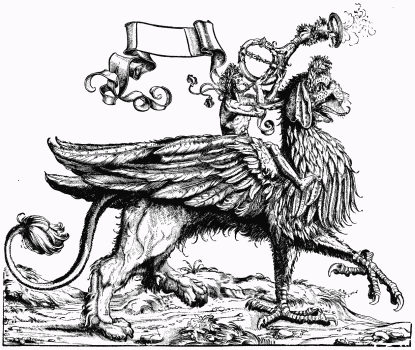
FIG. 44.—The Herald. From “The Triumph of Maximilian.”
The chief of the great works of Maximilian was the Triumphal Procession,[39] which was designed by Hans Burgkmaier, of Augsburg (1473-1531), whose secular and picturesque genius found its most congenial occupation in inventing the figures of this splendid train of nobles, warriors, and commons, on horse, foot, and in chariots, winding along in symbolical representation of the Emperor’s victories and conquests, and in magnificent display of the wealth, power, and resources of all the imperial dominions. The herald of the Triumph (Fig. 44), mounted upon a winged griffin, leads the march; behind him go two led horses supporting a tablet (Fig. 45), on which is written: “This Triumph has been made for the praise and everlasting memory of the noble pleasures and glorious victories of the most serene and illustrious prince and lord, Maximilian, Roman Emperor elect, and Head of Christendom, King and Heir of Seven Christian Kingdoms, Archduke of Austria, Duke of Burgundy and of other grand principalities and provinces of Europe;” his fifer Anthony, with his attendants, his falconers, led by Teuschel, their hawks pursuing prey, his hunters of the chamois, the stag, the boar, and the bear, habited for the chase, follow on; behind them richly caparisoned animals, elk, buffalo, and camels, draw finely decorated chariots, in which are seated the Emperor’s favorite musicians (Fig. 46), playing diverse instruments; the jesters (among them that famous Conrad von der Rosen whom Heine tenderly remembered), the fools, the maskers, the fencers, knights of the tourney and the joust, armed foot-soldiers of every service, continue the procession, which lengthens out with cuirassed horsemen (Fig. 47) carrying banners emblazoned with the arms of the Austrian provinces in which the Emperor had waged war, and other horsemen (Fig. 48) in the garb of peace, with standards of the faithful provinces, lasquenets whose pennants are inscribed with the names of the great battles which the Emperor had fought, trophy-cars filled with the armorial shields of the conquered peoples, representations of the Emperor’s marriage and coronation, of the German Empire and the great wars—Flanders, Burgundy, Hungary, Guelders, Naples, Milan, Venice, an unending list—the symbols of military power, artillery, treasure, the statues of the great rulers who were allied by blood to Maximilian or had ruled his dominions before him, prisoners of war in chains, the Imperial Standard, the Sword of the Empire, the counts, lords, and knights who owned the Emperor’s sovereignty—a splendid display of the pomp and pride of mediæval life. Maximilian himself is the central thought of the whole; he is never lost sight of in any smaller figure; his servants are there, as their devices relate, because they served him; his provinces, because he ruled them; his victories, because he won them; his ancestors, because they were of his line. His personality groups the variety of the procession round itself alone; but the real interest of the work does not lie in him or his praise, but in the revelation there made of the secular side of the Middle Ages, the outward aspect of life, the ideal of worldly power and splendor, the spirit of pleasure and festival, shown forth in this marvellously varied march of laurelled horses and horsemen whose trappings and armor have the beauty and glitter of peaceful parade. There is nowhere else a work which so presents at once the feudal spirit and feudal delights in such exuberance of picturesque and truthful display.
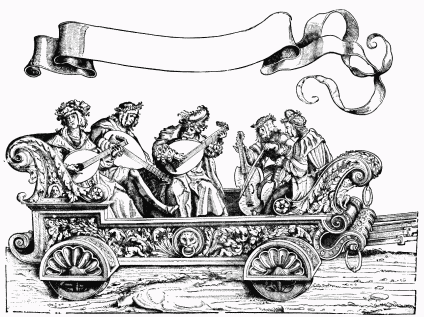
FIG. 46.—The Car of the Musicians. From “The Triumph of
Maximilian.”
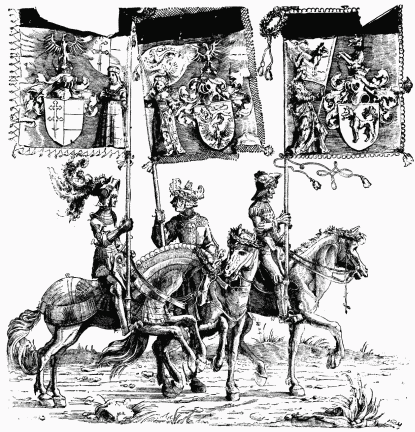
FIG. 47.—Three Horsemen. From “The Triumph of
Maximilian.”
The designs for this work were first painted upon parchment, and were afterward reproduced by engraving in wood; but the reproduction varied from the originals in important particulars. The series was far from completion at the time of Maximilian’s death, and was left unfinished; it was never published until 1796, when the first edition appeared at Vienna, whither the lost wood-blocks had found their way in 1779. In its present shape the series consists of one hundred and thirty-five large cuts, extending for a linear distance of over one hundred and seventy-five feet; all but sixteen of these are reproductions of the designs on vellum, which numbered two hundred and eighteen in all, and these sixteen are so different in style from the others as to suggest a doubt whether they belong to the Triumph or to some other unknown work. Hans Burgkmaier is believed to be the designer of all except the few that are ascribed to Dürer; but, owing to their being engraved by different hands, they vary considerably in merit.
Maximilian also ordered two curious books to be prepared and adorned with woodcuts in his own honor, a prose work entitled The Wise King, and a poem entitled The Adventures of Sir Tewrdannckh. In these volumes the example of his own life is offered for the instruction of princes, and the history of his deeds, amours, courtship, perils, and temptations is written, once for the edification, but now for the amusement, of the world. The woodcuts in The Adventures of Sir Tewrdannckh are one hundred and eighteen in number, and are principally, if not entirely, the work of Hans Schäuffelin (1490?-1540); they show how Sir Tewrdannckh, attended by his squire, started out upon his travels, and what moving dangers he encountered in his hunting, voyaging, tilting, and fighting, under the guidance and instigation of his three great enemies, Envy, Daring, and Curiosity, who at last, when he is happily at the end of his troubles, are represented as meeting their own fate by the gallows, the block, and the moat. The engravings are marked by spirit, and due attention is given to landscape; but they are not infrequently too near caricature to be pleasing, and cannot pretend to rank beside the other works of Maximilian. This volume was printed during the Emperor’s lifetime, and was the only one of his works of which he saw the completion. The Wise King was illustrated by two hundred and thirty-seven cuts, of which several bear Burgkmaier’s mark, one the mark of Schäuffelin and one that of Hans Springinklee (1470?-1540). They picture the journey of the Emperor’s father to Rome, the youth and education of the young prince, his gradual acquirement of the liberal arts—kingcraft, the black-art, medicine, the languages, painting, architecture, music, cookery, dancing, shooting, falconry, angling, fencing, tilting, gunnery, the art of fortification, and the like; and they represent, in conclusion, his political career by means of obscure allegory. They are similar to the illustrations in Sir Tewrdannckh in general character, and, like them, are inferior to the other works of Maximilian. In the composition of this volume Maximilian is supposed to have had a considerable share; it was not printed entire until 1775.
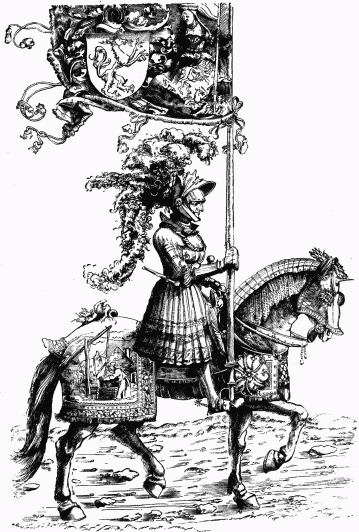
FIG. 48.—Horseman. From “The Triumph of Maximilian.”
These five great works, apart from their value as artistic productions and their interest as historic records, have a farther importance because of their influence upon the art, both in the way of encouragement and of instruction. Although there has been much dispute about the matter, it must now be acknowledged that the artists themselves did not ordinarily engrave their designs, but left the actual cutting of the block to the professional workmen; at most they only occasionally corrected the lines after the engraver had cut them. The works of Maximilian employed a number of these engravers, who practised the art only as a craft; the experience these workmen gained in such labor as they were now called upon to do, under the superintendence of artists like Dürer and Burgkmaier, who knew what engraving ought to be, and who held up a high standard of excellence, was most valuable to them, and made itself felt in a general improvement of the technical part of the art everywhere. The standard of the engraver’s craft was permanently raised. The engravers’ names now became known; and sometimes the engraver received hardly less admiration for his skill in technique than the artist for his power of design.
Other distinguished artists united with Dürer and the designers of Maximilian’s works in making this period of wood-engraving the most illustrious in the German practice of the art. Lukas van Leyden (1494-1533), whose youthful works in copperplate were wonderful, left some woodcuts in Dürer’s bold, broad manner, which illustrate the attempt of German art to acquire classical taste, and show so much the more clearly the incapacity of the Germans in the perception of beauty. The Cranachs, father (1472-1553) and son (1515-1586), who are interesting because of the share they had in the Reformation, produced some very striking works, such as the charming scene of the Repose in Egypt, and were the first to practise chiaro-scuro engraving in the North. Hans Baldung (1470-1552?), although his designs are sometimes characterized by exaggeration and too great violence of action, ranks with the best of the secondary artists of the time; and Hans Springinklee, who has been already mentioned, reached a high degree of excellence in his illustrations to the Hortulus Animæ, which are still valued.
The works of these men, however, were only the most important and the best of a vast number of woodcuts which, during the first half of the sixteenth century, appeared in Germany during this period of the greatest popularity of the art. Under the personal influence of Dürer, or under the influence of the numerous and widely-spread prints by himself and his associates, many other artists of merit acquired skill in engraving, both on metal and in wood, and employed it upon a great variety of subjects. The devotion of mediæval art wholly to church decoration and to the representation of religious scenes had passed away in all quarters of the world; in Italy the artists had come to treat the subjects of pagan imagination, the beings and scenes of classical mythology; in Germany the people had homelier tasks, and religious art there yielded to the interest which men felt in the incidents and objects of common life; in both countries wealth took the place of religion as the patron of art; and, although art still dealt with the story of the Scriptures and the martyrs, because these filled so important a place in the imagination of the people, still it had become secularized. This change was naturally shown in the arts of engraving more than in painting, because engraving in copper and on wood had a far greater sphere of influence, and came into more intimate relations with the popular life, and because the illustration of books offered a greater variety of subject. In German engraving, from this time, the actual life of the town and the peasantry was represented almost as often as the history of the Saviour and the saints; the village festival, the procession of the wedding-guests, the fêtes of the town, the employments and costumes of the citizens, recur with the same frequency as the passion of the Lord and the Old Testament stories; the joy and sorrow of ordinary life, the objects of ordinary observation and thought, the humorous, the humble, and the satirical, sometimes strangely mingled with ill-understood mythology and badly-caricatured classicism, are the constant theme of the engravers.
Chief among the successors of Dürer who shared in this vast production were the group of artists known as the Little Masters, although the name is one of ill-defined and incomplete application; they were so called because they chiefly engraved small designs; but they also engraved large designs, and their number, which is usually limited to seven, excludes some whose works are on the same small scale. The first of them was Albrecht Altdorfer (1488-1538), said to have been the pupil of Dürer and the inventor of engraving in this manner; in his day he was more celebrated as an architect and painter than as an engraver, but his fame now rests on his works on copper and in wood. The best known of his sixty-five woodcuts is the series of forty designs, scarcely three inches by two in size, entitled the Fall and Redemption of Man, in depicting which he had the Smaller Passion of Dürer to guide him. In these he attempted to obtain effects by the use of fine and close lines, such as were employed in copperplate-engraving; but, although his success was certainly remarkable, considering the rude mechanical processes of the time, yet his method clearly produced results of inferior artistic value in comparison with the works in the bold, broad manner of Dürer. All of his woodcuts, excepting four, are representations of religious subjects; they are marked, like his other works, by an attention to landscape, that truly modern object of art, of which he probably learned the value from Dürer, who was the first to treat landscape with real appreciation. In Hans Sebald Behaim (1500-1550?) the spirit of the age is revealed with great clearness and variety (Fig. 49); both his life and his art were inspired by it. In his early manhood he was banished from Nuremberg for denying the doctrines of transubstantiation and the efficacy of baptism, and for entertaining some vague socialistic and communistic opinions; but it is not clear to what extent he held them, if he held them at all. He seems to have been one of the most advanced of the religious Reformers, and he employed his art in their service, as, for example, in a book entitled The Papacy, which he illustrated with a series of seventy-four figures of the different orders of monks in their peculiar costumes, beneath each of which satirical lines were written. He is best known by his eighty-one Bible-cuts, which were the most popular, perhaps, of the many series published in that century, not excepting the impressive Bible figures of Holbein; they passed through many editions, and were widely copied. The first English Bible was illustrated by them. Besides these two series, and one other in illustration of the Apocalypse, he designed many separate prints, both in the small manner of the Little Masters and in imitation of the large works of Maximilian, such as his Military Fête, in honor of Charles V., his Fountain of Youth, and the prints of the Marauding Soldiers, which measured four or five feet in length. His representations of peasant life are peculiarly attractive, because of the force of realism displayed in them, whether he depicted the marriage festival, or mere jollity or drunken brawl. In the breadth of his interests, in the variety of his subjects, and in his sympathy with the special movements of his age, he was as an engraver more characteristic of the civilization in which he lived than any other of the Little Masters who gave their attention to wood-engraving. Of the rest of this group none, excepting Hans Brosamer (1506-1552), left works in wood-engraving of any consequence; he designed in a free and bold manner, and his engravings are to be found in books of the third quarter of the century.
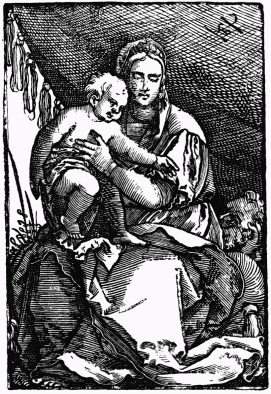
FIG. 49.—Virgin and Child. From a print by Hans Sebald
Behaim.
Other artists of this period devoted their attention to wood-engraving; but as they did not mark any new progress in the art, or reflect any aspect of German civilization which has not already been illustrated, they need not be treated in any detail. Virgil Solis (1514-1562), a very productive designer, who was employed by the Nuremberg printers to illustrate the books by which they attempted to rival the productions of the Lyonese press; Jobst Amman (1539-1591), whose excellent engravings of costumes and trades are well known; Erhard Schön (d. 1550), Melchior Lorch (1527-1586), whose works were of little merit; and Tobias Stimmer (1539-1582), a popular designer for book illustration, are all who deserve mention. Their engravings are inferior to the productions of previous artists, and after their death the art in Germany fell into speedy and irretrievable decay.
The work of the wood-engravers who were imbued with the German spirit exhibits the same excellences and defects as other German work in art. It is characterized by vigor principally, and in its higher range it has great value, because of the imaginative and reflective spirit by which it was animated; in its lower range, as a portrayal of life and manners, it derives from its realism an extraordinary interest. Its great deficiency is its lack of beauty, and is due to the inborn feebleness of the sense of beauty in the German race; but, notwithstanding this deformity, German wood-engraving was invaluably useful in its day in the cities where it became so popular, because it was so widely and variously practised, and entered into the life of the people in so many ways with an effective influence of which it is difficult to form an adequate conception. It facilitated the spread of literature and helped on the progress of the Reformation to a degree which is little recognized; it disseminated ideas and standards of art, and made them common property; and, finally, it prepared the way for the great master who was to embody in wood-engraving the highest excellence of art and thought.
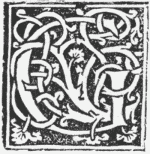
FIG. 50.—From the “Epistole
di San Hieronymo.”
Ferrara,
1497.ERMANY produced one artist who freed himself from the limitations of
taste and interest which the place of his birth imposed upon him, and
took rank with the great masters who seem to belong rather to the race
than to their native country. Hans Holbein was neither German nor
Italian, neither classical nor mediæval. The ideal of his art was not
determined by the culture of any single school, at home or abroad; far
less was it a jarring compromise between the aims and methods of
different schools; it grew out of a faithful study of all, and in it
were rationally blended the elements which were right in each. In style,
theme, and spirit he advanced so far beyond his contemporaries that he
became the first modern artist—the first to clear his vision from the
deceptions of religious enthusiasm, and to subdue in himself the
lawlessness of the romantic spirit; the first to perceive that only the
purely human interest gives lasting significance to any artistic work,
and to depict humanity simply for its own sake; the first to express
his meaning in a way which seems truthful and beautiful universally to
all cultivated men. In this lies the peculiar and profound value of his
works.
Holbein was born at Augsburg, in 1495 or 1496, into a family of artists. In that city, then the centre of German culture, he grew up amid the stir of curiosity and thought which attended the discovery of the Western World and the first movements of the Reformation. He handled the pencil and the brush from boyhood, and produced works as wonderful for their precocious excellence as the early efforts of Mantegna; he was deeply impressed by the secular and picturesque genius of Burgkmaier, the great artist of Augsburg, who may have first opened to him the value of beauty of detail, and inculcated in him that carefulness in respect to it which afterward distinguished him; he seems, too, even at this early period, to have been touched by some Italian influence which may have reached Augsburg in consequence of the close commercial relations between that city and Venice. Holbein, however, did not arrive at any mature development until after he left Augsburg and removed to Bâsle, whither he went in 1515, in order to earn his bread by making designs for books—a trade which was then flourishing and lucrative in that city. Bâsle offered conditions of life more favorable, in some respects, to the development of energetic individuality than did Augsburg; it was already the seat of humanistic literature, at the head of which was Erasmus, and it soon became the safest refuge of the persecuted Reformers. In such a city there was necessarily a vigorous intellectual life and a free and liberal spirit, which must have exerted great influence upon the young artist, who by his profession was brought into intimate relations with the most learned and advanced thinkers about him. Holbein was at once profoundly affected by the literary and reform movements which he was called upon to aid by his designs, and he threw himself into their service with energy and sympathy. His art, too, under the influence of Italy, and under the rational direction of his own thought, grew steadily more refined in ideal and more finished in execution. He soon learned the value of formal beauty, and gave evidence that the work of the last great German painter was not to be marred by German tastelessness. Hitherto the masters of German art, led by a realistic spirit which did not discriminate regularly and with certainty between the different values of the lovely and the unlovely, had expressed their thought and feeling in familiar forms, and, consequently, often in forms which shared in the grotesqueness, bordering on caricature, and in the homeliness, bordering on ugliness, that characterized much of actual German life. Holbein, whose realism was governed by cultivated taste, expressed his thought and feeling in beautiful forms. His predecessors had used a dialect of art, as it were, which could never seem perfectly natural or be immediately intelligible to any but their own countrymen; Holbein acquired the true language of art, and was as directly and completely intelligible to the refined Englishman or Italian as to the citizen of Augsburg or Bâsle. Holbein came, also, to an understanding of the true law of art; as he freed himself from the Gothic dulness of sight in respect to beauty, he freed himself from the Gothic license of reverie, fancy, and thought. He limited himself to the clear and forcible expression of the idea he had in mind; he admitted no details which interfered with his main purpose, and which asserted a claim to be there for their own sake; he made every accessary enforce or illustrate his principal design, and subordinated each minor portion of his picture to the leading conception; he had one purpose in view, and he preserved its unity. How different this was from the practice of Dürer, who introduced into his work whatever came into his mind, however remotely it might be associated with his subject, who repeated almost wearisomely the same idea in varying symbolism, and dissipated the intensity of the thought by distracting suggestion crowded into any available space, need not be pointed out; in just the proportion in which Dürer lost by his practice directness, simplicity, and force, Holbein gained these by his own method, which was, indeed, the method of great art, of the art which obeys reason, in distinction from the art which yields to the wandering sentiment. Holbein differed from Dürer in another respect: he thoroughly understood what he meant to express; he would have nothing to do with vague dreaming or mystical contemplation; he thought that whatever could not be definitely conceived in the brain, and clearly expressed by line and color, lay outside the domain of his art; he gave up the phantoms of the enthusiast and the puzzle of the theologian to those who cared for them, and fixed his attention on human life as he saw it and understood it. He often treated religious subjects, but in no different spirit from that in which he treated secular subjects; in all it is the human interest which attracts him—the life of man as it exists within the bounds of mortality. Thus he arrived not only at the true language and the true law of art, but also at its true object. This development of his genius did not take place suddenly and at once; it was a gradual growth, and reached full maturity only in his closing years; but, while he still worked at Bâsle, the essential lines of his development were clearly marked, and he had advanced so far along them as to be even then the most perfect artist whom the North had produced.
Holbein began to practise wood-engraving as soon as he settled in Bâsle, and designed many titlepages, initial letters, and cuts for the publishers of that city. The titlepages, which are numerous, were usually in the form of an architectural frame, in which groups of figures were introduced; they show how early his taste for the forms of Italian architecture became pronounced, and how bold and free was his power of drawing, and how highly developed was his sense of style, even in his first efforts. He illustrated the books of the humanists, especially the Utopia of Sir Thomas More, then a new and popular work; and he designed the cuts for the biblical translations of Luther, and for other publications of the Reformers. He served the Reformation, too, in a humorous as well as in a serious way, for he was as much a master of satire as of beauty. Two cuts in ridicule of the papal party are particularly noticeable, one in which he satirizes the sale of indulgences, contrasting it with true repentance; and one in which he represents Christ as the Light of the World, with a group of sinners approaching upon one side, and a group of papal dignitaries led by Aristotle turning away on the other side. The illustrations in which he depicts ordinary humble life, particularly the life of peasants and children, make another great department of his lesser work in wood-engraving; these scenes are sometimes separate cuts, and sometimes introduced as backgrounds of initial letters, twenty alphabets of which are ascribed to him; they represent the pastimes and sports of the country, just as Holbein may have seen them at any time upon the way-side, and are full of heartiness, humor, and reality. The sketches from the life of boys and children are especially graceful and charming, and reveal an ease and power in delineation which has seldom been rivalled. This species of genre art, which had first made its appearance in wood-engraving, because it was considered beneath the dignity of the higher arts, was very popular; by his work of this sort Holbein contributed to the pleasure of the people, just as by his co-operation with the Humanists and the Reformers he served them in more important ways. Finally he produced at Bâsle his two great works in wood-engraving, the Dance of Death and the Figures of the Bible, which are the highest achievements of the art at any time.
The Dance of Death was an old subject. It had possessed for centuries a powerful and sometimes morbid attraction for the artistic imagination and for popular reflection. It was peculiarly the product of mediæval Christian life, and survives as a representative of the great mediæval ideas. That age first surrounded death with terrors, fastened the attention of man continually upon his doom, and affrighted his spirit with the dread of that unknown hour of his dissolution which should put him in danger of the second death of immortal agony. In Greece death had been the breaking of the chrysalis by the winged butterfly, or, at least, only the extinction of the torch; here it was the gaunt and grinning skeleton always jostling the flesh of the living, however beautiful or joyous they might be. In the churches of the thirteenth century there swung a banner emblazoned upon one side with the figures of a youth and maiden before a mirror of their loveliness, and, upon the reverse, with Death holding his spade beside the worm-pierced corpse; it was the type of mediæval Christian teaching. The fear of death was the recurring burden of the pulpit; it made the heart of every bowed worshipper tremble, and was taught with fearful distinctness by the pestilence that again and again suddenly struck the populations of Europe. The chord of feeling was overstrained; the elastic force of life asserted itself, and, by a strange transformation, men made a jest of their terror, and played with death as they have never since done; they acted the ravages of death in pantomime, made the tragedy comic, put the figure of Death into their carnivals, and changed the object of their alarm into the theme of their sport. In the spirit of that democracy which, in spite of the aristocratic structure of mediæval society, was imbedded in the heart of the Christian system, where every soul was of equal value before God, the people turned the universal moral lesson of death into a satire against the great; Death was not only the common executioner, he arrested the prelates and the nobles, stripped them of their robes and their possessions, and tried them whether they were of God or Mammon. In these many-varied forms of terror, sport, and irony Death filled the imagination and reflection of the age; the shrouded figure or the naked skeleton was seen on the stage of the theatre, amid the games of the people, on the walls of the churches and the monasteries, throughout the whole range of art and literature. Holbein had looked on many representations of this idea: where, as in Dürer’s work, Death attends knight and beggar; or where, as in the Nuremberg Chronicle, the skeletons dance by the open grave; or where, as in the famous series at Bâsle, Death humbles every rank of life in turn. But Holbein did not look on these scenes as his predecessors had done; he was free from their spirit. He took the mediæval idea and re-moulded it, as Shakspeare re-moulded the tradition of Denmark and Italy, into a work for all times and generations. He represented Death, but with an artistic power, an imaginative fervor, a perception of the constant element in its interest for mankind, which lifted his work out of mediævalism into universal truth; and in doing this he not only showed the high power of his art, but he unlocked the secrets of his character.
This work is, in the first edition (1538), a series of forty-one small cuts, in each of which is depicted the triumph of Death over some person who is typical of a whole class. Each design represents with intense dramatic power some scene from daily life; Death lays his summons upon all in the midst of their habitual occupations: the trader has escaped shipwreck, and “on the beach undoes his corded bales;” Death plucks him by the cloak; the weary, pack-laden peddler, plodding on in his unfinished journey, turns questioningly to the delaying hand upon his shoulder; the priest goes to the burial of the poor, Death carries the candle in a lantern before him, and rings the warning bell; the drunkard gulps his liquor, the judge takes his bribe, the miser counts his gold—Death interrupts them with a sneer. What poetic feeling, what dramatic force, there is in the picture of the Nun! (Fig. 51.) She kneels with head averted from the altar of her devotions toward the youth who sits upon the bed playing the lute to her sleeping soul, and at the moment Death stands there to put out the light of the taper which shall leave her in darkness forever. What sharp satire there is in the representation of the Preacher (Fig. 52), dilating, perhaps, in his accustomed, half-mechanical way, upon the terrors of that very Death already at his elbow! What justness of sight, what grimness of reality, there is in the representation of the Ploughman (Fig. 53); how directly does Holbein bring us face to face with the human curse—in the sweat of thy brow thou shalt earn death! George Sand, looking out on the spring fields of her remote province and seeing the French peasants ploughing up the soft and smoking soil, remembered this type of peasant life as Holbein saw it, and described this cut in words that vivify the concentrated meaning of the whole series. “The engraving,” she says, “represents a farmer guiding the plough in the middle of a field. A vast plain extends into the distance, where there are some poor huts; the sun is setting behind a hill. It is the close of a hard day’s work. The peasant is old, thickset, and in tatters; the team which he drives before him is lean, worn out by fatigue and scanty food; the ploughshare is buried in a rugged and stubborn soil. In this scene of sweat and habitual toil there is only one being in good spirits and light of foot, a fantastic character, a skeleton with a whip, that runs in the furrow beside the startled horses and beats them—as it were, a farmer’s boy. It is Death.” She takes up the story again, after a while. “Is there much consolation,” she asks, “in this stoicism, and do devout souls find their account therein? The ambitious, the knave, the tyrant, the sensualist, all the proud sinners who abuse life, and whom Death drags away by the hair, are on their way to a reckoning, no doubt; but the blind, the beggar, the fool, the poor peasant, is there any amends for their long wretchedness in the single reflection that death is not an evil for them? No! an inexorable melancholy, a dismaying fatality, weighs upon the artist’s work. It is like a bitter curse launched on the universal human lot.”[40]
Certainly the artist’s work is a bold and naked statement of man’s mortality, of the close of life contrasted with the worth of its career; but the melancholy of his work is not more inexorable, its fatality is not more dismaying, than the reality he saw. He did not choose for his pencil what was unusual, extraordinary, or abnormal in life; he depicted its accustomed course and its fixed conclusion in fear, folly, or dignity. He took almost every character among men, almost every passion or vice of the race, almost every toil or pursuit in which his contemporaries engaged, and confronted them with their fate. The king is at his feast, Death pours the wine; the poor mother is cooking her humble meal at the hearth, Death steals her child; the bridal pair walk on absorbed, while Death beats their wedding-march with glee. Throughout the series there is the same dramatic insight, the same unadorned reality, the same humanity. Here and there the spirit of the Reformer reveals itself: the Pope in the exercise of his utmost worldly power crowns the emperor, but behind is Death; a devil lurks in the shadow, and over the heads of the cardinals are other devils; the monk, abbot, and prioress—how they resist and are panic-stricken! There can be no doubt at what Holbein reckoned these men and their trade. Holbein showed here, too, his sympathy with the humbler classes in those days of peasant wars, of the German Bible, and of books in the vulgar tongue—the days when the people began to be a self-conscious body, with a knowledge of the opportunities of life and the power to make good their claim to share in them; as Holbein saw life, it was only the humble to whom Death was not full of scorn and jesting, they alone stood dignified in his presence. Beneath this sympathy with the Reformers and the people need we look farther, as Ruskin does, to find scepticism hidden in the shadows of Holbein’s heart? Holbein saw the Church as Avarice, trading in the sins of its children; as Cruelty, rejoicing in the blood of its enemies; as Ignorance, putting out the light of the mind. There was no faltering in his resolute, indignant denial of that Church. Did he find any refuge elsewhere in such hope and faith as remain to man in the suggestions of his own spirit? He saw Death’s triumph, and he made men see it with his eyes; if he saw more than that, he kept silence concerning it. He did not menace the guilty with any peril save the peril of Death’s mockery; he spoke no word of consolation for the good; for the inevitable sorrow of the child’s loss there is no cure, for the ploughman’s faithful labor there is no reward except in final repose by the shadow of the distant spire. He did not open the heavens to let through one gleam of immortal life upon the human lot, unless it be in the Judgment, where only the saved have risen; nevertheless, the purport of that scene, even if it be interpreted with the most Christian realism, cannot destroy the spirit of all others. “Inexorable melancholy, dismaying fatality”—these, truly, are the burden of his work.
The series holds high rank, too, merely as a product of artistic skill. It shows throughout the designer’s ease, simplicity, and economy in methods of work, his complete control of his resources, and his unerring correctness in choosing the means proper to fulfil his ends; few lines are employed, as in the Italian manner, and there is little cross-hatching; but, as in all great art, every line has its work to do, its meaning, which it expresses perfectly, with no waste of labor and no ineffectual effort. In sureness of stroke and accuracy of proportion the drawing is unsurpassed; you may magnify any of the designs twelve times, and even the fingers will show no disproportion in whole or in part. It is true that there is no anatomical accuracy; no single skeleton is correctly drawn in detail, but the shape of Death, guessed at as a thing unknown, is so expressed that in the earliest days of the work men said that in it “Death seemed to live, and the living to be truly dead.” The correctness, vigor, and economy of line in the drawing of these cuts made them a lesson to later artists like Rubens, merely as an example of powerful and truthful effects perfectly obtained at the least expense of labor. In this respect they were in design a triumph of art, as much as they were in conception a triumph of imagination.
Holbein made the original drawings for the Dance of Death before he left Bâsle in 1526; but, although some copies were printed in that city, the work did not become known until it was published in 1538 by the Trechsels at Lyons, where it appeared without Holbein’s name. This latter circumstance, in connection with a passage in the preface of this edition, led some writers to question Holbein’s title to be considered the designer of the series, although his friend, Nicolas Bourbon de Vandoeuvre, the poet, calls him the author of it in a book published at Lyons in 1538, while Karl van Mander, of Holland, in 1548, and Conrad Gesner, of Zurich, in 1549, ascribe it to him, and their statements were unhesitatingly accepted until doubt was expressed in our own time. The passage in the preface of the first Lyons edition, on which the sceptics rely, mentions the death “of him who has here imaged (imaginé) for us such elegant designs as much in advance of all hitherto issued as the paintings of Apelles or Zeuxis surpass those of the moderns;” but this is generally considered to refer to the engraver, Hans Lützelburger, who cut the designs in wood after Holbein’s drawing, and deserves all the praise for their extraordinarily skilful technical execution. This is the most satisfactory explanation which can be framed; but, if it is not accepted, the balance of evidence in favor of Holbein is so great as to be conclusive. The original drawings, made with a pen and touched with bistre, are in the cabinet of the Czar, and show the excellence of the draughtsmanship more clearly than the woodcuts; the engraver omitted some striking details, but in general his fidelity and correctness of rendering were remarkable. The first edition at Lyons contained only forty-one of the original designs, of which there are forty-six at St. Petersburg; the later editions, published by Frellon, increased the number to fifty-three in 1547, and fifty-eight in 1562, including some beautiful cuts of children at the end of the volume. The popularity of the work was very great; the text was printed in French, Latin, and Italian, and thirteen editions from the original blocks were issued before 1563. Since that time it has been published many times; but the engravings in the later editions, which were copied from the originals by workmen much inferior to Lützelburger, have little comparative value. Between forty and fifty editions have been printed from wood-blocks, and as many more from copperplate.
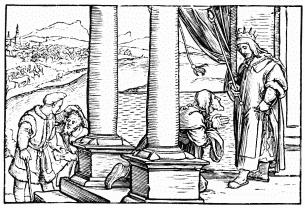
FIG. 54.—Nathan Rebuking David. From Holbein’s “Icones
Historiarum Veteris Testamenti.” Lyons, 1547.
The Figures of the Bible, which made a series of ninety-two illustrations of the Old Testament, showed the same qualities of Holbein’s genius as did the Dance of Death, but generally in less perfection. In designing many of these cuts Holbein accepted the types of the previous artists, just as nearly all the great painters frequently took their conceptions of scriptural scenes from their predecessors; hence these Bible Figures show a marked resemblance in their general composition to the earlier woodcuts in illustration of the Scriptures. But while Holbein followed the earlier custom in representing two or three associated actions in one scene, and kept the same relative arrangement of the parts, he essentially modified the total effect by omitting some elements, subordinating others, giving prominence to the principal group, and informing the whole picture with a far more vigorous, thoughtful, and expressive spirit. In artistic merit some of these designs are among the best of Holbein’s work; but the technical skill of the wood-engraver who cut them is inferior to that shown in the Dance of Death. The scene in which Nathan is represented rebuking David (Fig. 54) is especially noble in conception: the prophet does not clothe himself in any superior human dignity as a divine messenger; but, mindful only of the supreme law which is over all men equally, kneels loyally and obediently before his king, and calls on him to humiliate himself, not before man, but in the solitary presence of God. The power of the universal law, independent alike of the majesty of the criminal or the lowliness of its servant, has never been pictured with greater subtlety and force than is here done. There are others among these designs of equal excellence, both in imagination and art, but in all the best of them there is some human interest in the scene which attracted Holbein’s heart; in others, such as the illustrations to the books of the Prophets, he falls into a feebleness of conception and baldness of allegorical statement which shows clearly how little he cared for what was merely supernatural. The series, nevertheless, is, as a whole, the best which was made in that century, and was reprinted several times to satisfy the popular demand for it; it first appeared, contemporaneously with the Dance of Death, in 1538, at Lyons; the text was afterward published in Latin, French, Italian, Spanish, and English, but the work never obtained the extraordinary popularity of the Dance of Death. It is noteworthy that no edition of either work was printed in German—so far had Holbein outstripped his countrymen in the purity of art.
When these two works appeared at Lyons, Holbein had been for many years a resident at the English court, where he painted that series of portraits which remains unsurpassed as a gallery of typical English men and women represented by an artist capable of revealing character as well as of portraying looks. In these later years of his life he busied himself but little with designing for woodcuts, but he did not entirely neglect the art, and was, without doubt, of great service in spreading a taste for it in England, and in improving its practice there. The English printers imported their best woodcuts, and probably wood-engraving was hardly a recognized English art before Holbein’s day. The great titlepage which he designed for Coverdale’s Bible in 1535 was apparently cut by some Swiss engraver, as were some other similar works; but a few designs, which Holbein seems to have drawn so as to require the least possible skill in the engraver to reproduce them, were apparently executed in England. They were produced when England was separating from Rome, in the time of Cromwell’s power, and are marked by the same satirical spirit as Holbein’s earlier work at Bâsle; the self-righteous Pharisee wears a cowl, the lawyers, who are offended when Christ casts out the devil from the possessed one, have bishops’ mitres; the unfaithful shepherd who flees when the wolf comes is a monk. These cuts, in which Holbein last used his art as a weapon of civilization, mark the close of his practice of it.
In the course of that practice he had not merely found utterance for his genius, but he had shown the entire adequacy of wood-engraving for the purposes of the artist when the laws which spring out of its peculiar nature are most rigidly observed. He had employed it with complete success as a mode of obtaining beautiful architectural design, of depicting charming genre scenes, of attacking abuses by the keenest and most effective irony, of making real for the popular comprehension the solemn and beautiful stories of the Scriptures, and of expressing passionate feeling and profound thought; and he thus exercised upon his own time and upon the future an influence which was perhaps more powerful than that exercised by any contemporary artists. Within the limits of the Dance of Death he had embodied in wood-engraving tragedy and humor, satire and sermon, poetic sentiment, dramatic action, and wise reflection, and he thus gave to that work a special interest for his contemporaries as an expression of the sympathies, efforts, and problems of that time, and an enduring interest for all men as the truest picture of universal human life seen at its most tragic moment through the hollow sockets of Death. He did this without offering violence to the peculiar nature of the art, without wresting it from its appropriate methods or requiring of it any difficult effort; he perceived more clearly than Dürer the essential conditions under which wood-engraving must be practised, and he conformed to them. If he had needed cross-hatching, fine and delicate lines, harmonies of tone, and soft transitions of light, he would have had recourse to copperplate; but not finding them necessary, he contented himself with the bold outlines, easily cut and easily printed, which were the peculiar province of wood-engraving, and by means of them created works which not only made wood-engraving illustrious, but rank with the high achievements and valuable legacies of the other arts of design. Holbein was one of the great geniuses of the race, and he put into his works the fire and wisdom of genius; but, independently of what his works contain, and merely as illustrations of artistic methods, they show for the first time an artist perceiving and choosing to obey the simple laws of the art, and exhibiting its compass and capacity, its wealth and utility, within the sphere of those laws. This thorough understanding and rational practice of the art, in connection with his intellectual and artistic powers, made Holbein the most perfect master who has ever left works in wood-engraving, and give his works the utmost value both as forms of art and as embodiments of imagination and thought.
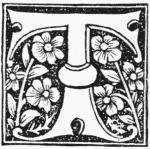
FIG. 55.—From “Opera Vergiliana,”
printed by Sacon.
Lyons, 1517.HE wood-engravers of France produced no great works like those of
Maximilian, and no single cuts of the artistic value of those by Dürer
and his contemporaries. They limited themselves almost exclusively to
the illustration of books. The early printers, who had expended so much
care in the adornment of their religious books, were succeeded by other
printers who were hardly less animated by enthusiastic devotion to their
art, as was shown by their efforts to make their works beautiful both in
text and illustration. The Renaissance had now penetrated into France,
and entered into the arts. Geoffrey Tory (c. 1480-1533), who had
travelled in Italy, appears to have been the first to introduce a
classical spirit into wood-engraving; from his time two distinct schools
may be distinguished in French wood-engraving—one Germanic and archaic,
the other filled by the Italian spirit. The most distinguished engravers
belonged to the latter school, and their work was characterized by the
curiously modified Italian taste which marked the French Renaissance.
They understood design, and showed considerable power in it; they
regarded the main lines and principal harmonies and contrasts of masses
which are necessary to it; but they transformed its simplicity into
elegance, and overlaid it with ornamentation and trifling detail which
marred its effect, and gave to their works an appearance of
artificiality, of over-labored refinement and mistaken scrupulousness of
taste. As a rule, indeed, taste was their characteristic rather than a
developed sense of beauty, and skill rather than power. Finally, they
passed, by a natural progress, into a complexity and fineness of line
which are unsuitable to wood-engraving; they lost the sense of unity in
the abundance of detail, and were forced to give up engraving in wood
and adopt engraving on copperplate, which was so much better fitted to
the meaningless excess of delicacy and accumulation of ornament in which
the French Renaissance ended.
The most talented of the French designers for wood-engraving was Jean Cousin (1501-1589), a member of the Reformed Church, little favored at court and much neglected by his contemporaries. He appears to have been of a robust and independent spirit, an admirer of Michael Angelo and the Italians, and an industrious and painstaking workman in many branches of art. A large number of designs are ascribed to him; but, as is the case with nearly all the French engravers, there is great difficulty in making out what really was his work. Among the characteristic products of French wood-engraving were representations of royal triumphal entries into the great cities of the kingdom. Two of these are ascribed to Cousin—the entry of Henry II. into Paris, published in 1549, and his entry into Rouen, published in the next year. In the latter the captains of Normandy lead the march; they are followed by ranks of foot-soldiers, trumpeters, men holding aloft laurel wreaths, other men with antique arms and banners, and a band which, with a reminiscence from Roman festivals, carry lambs in their arms for sacrifice to the gods; next succeed new ranks of soldiers, then elephants and captives, the fool and musicians leading on Flora and her nymphs, after whom comes the Car of Happy Fortune, on which the royal family are enthroned, and the triumphal Chariot of Fame; the procession closes with men-at-arms and two captains, with succeeding scenes of some places by which the pageant had passed. In this work the French Renaissance shows itself in the prime of its career, when some simplicity and nobility of design were still kept, and the tendency toward refinement of line and multiplication of ornament were still held in check by a regard for unity of effect. The Entry of Henry II. into Paris is, perhaps, even more excellent. The two works rank with the best French wood-engraving in the sixteenth century.
The characteristics by which the French Renaissance differed from the Renaissance in Italy are more clearly and easily seen in the reproduction of the Dream of Poliphilo, which was published in 1554, and is ascribed to Cousin. The French artist did not copy the beautiful designs of the Venetian; he kept the general character of each woodcut, it is true, but he varied the style. He made Poliphilo elegant in figure, taller and more modish in gesture and attitude; he represented the landscape in greater detail and with more realism; he gave greater height and more careful proportion to the architecture, added ornaments to its bare façades and smooth lintels, and in the subordinate portions he varied the curvature of the lines and made them more complex; in the lesser figures, the statues and monumental devices, he allowed himself more liberty in changing the original designs, and sometimes practically transformed them; finally, he introduced a more vigorous dramatic action throughout, and attempted to obtain more difficult effects of contrast and to give relief to the figures. Nevertheless, the improvements which the taste of Cousin required are distinctly injurious. The French reproduction is inferior to the Italian original in feeling for design, in simple beauty, in the force and directness of its appeal to the artistic sense, in the power and sweetness of its charm; much that was lovely in the original has become simply pretty, much that was noble and striking has become only tasteful; especially that quality, by virtue of which the original possessed something suggestive of the calm beauty of sculpture, has vanished, and in the effort of the new designer to obtain pictorial effects one has an unpleasant sense of something like weakness. The comparative study of the two volumes is of extreme interest, so clearly do they illustrate the different temper of the Renaissance in France and Italy. France received the word of inspiration from Italy, but could not become its oracle. Even at that early day French art was marked by the dispersion of interest, the regard for externals, and the inability to create the purest imaginative work, which have since characterized the French people, despite their facility in acquisition and the ease with which they reach the level of excellence in any pursuit.
Of the other works, known or supposed to be by Cousin, the Book of Perspective, published in 1560, is the most remarkable, because in its designs considerable difficulties are overcome, and greater power of relief is shown than in any previous French wood-engraving. This book was a treatise, similar to those by Dürer and Leonardo da Vinci upon the laws of art, and its dedication is noticeable because of the light it throws on Cousin’s spirit—“neither to kings nor princes, as is customary,” he says, “but to the public.” The Bible, usually called Le Clerc’s, which contains two hundred and eighty-seven woodcuts, is said to be by Cousin, but of this there is no direct evidence; and to him is ascribed the Triumphal Entry of Charles IX., published in 1572, and supposed by some to have been designed by the engraver Olivier Codoré; many other works are also added to his list, but they were inferior in value to those which have been described, and were unmarked by any special interest. In consequence of the fineness and number of his productions Cousin must be considered the principal French engraver of the century; and he undoubtedly deserves a high rank among the artists of talent, in distinction from the artists of genius, who have practised wood-engraving.
About Cousin there were a number of other designers who gave attention to the art and left works of value; but these works bear so much resemblance to one another that it is frequently impossible to recognize in them the hand of any individual of the school—a difficulty by which Cousin’s reputation has profited, because of the eagerness of his admirers to ascribe to him any excellent work in his style which is not definitely known to belong to some one of his contemporaries. These lesser artists were Jean Goujon (c. 1550), who made some excellent cuts for a Vitruvius of 1547, and is believed by some authorities to have designed the reproduction of the Dream of Poliphilo; Pierre Woeiriot (b. 1532), whose biblical cuts inserted in a Josephus of 1566 have much merit; Jean Tortorel (b. 1540?) and Jacques Périssin (b. 1530?), who designed some interesting illustrations of the Huguenot wars; and Philibert de Lorme (c. 1570) and Jean Le Clerc (1580-1620), whose productions are of comparatively little interest. The works of all these artists lacked that intimate relation with the life of the people which made the engravings of the lesser German designers valuable, and have importance only as illustrations of the development of French art in the Renaissance.
The only artist who can contest Cousin’s foremost place in French wood-engraving is Bernard Salomon (c. 1550), usually called the Little Bernard, from the small size of his cuts, who was the leading designer of Lyons. That city had retained its importance as a centre of popular literature illustrated by woodcuts, and is said to have sent forth more books of this kind in the latter part of the sixteenth century than any other city in Europe. The works of Holbein were the pride of the Lyonese art, and exerted great influence upon the style of the designers who were constantly employed in the service of the Lyonese press. Bernard worked in the small manner which Holbein had made popular, and he learned from him how to compress much in a little space; but he multiplied details, and carried the lines to an extreme of fineness which his engravers were unable to do justice to in cutting the block. As is the case with Cousin, a vast number of designs are attributed to Bernard, simply because they are sufficiently excellent to have been his work; according to Didot, no less than twenty-three hundred cuts have been claimed for him, and it is believed by some writers that he not only designed but engraved this large number. A large proportion of these must have been produced by the unknown contemporaries of Bernard, because, although he gave his attention wholly to wood-engraving for thirty years, he could not have accomplished so great a work. His best-known designs are the illustrations to an Ovid, published by Jean de Tournes, and two hundred and thirty cuts for the same printer’s edition of the Bible: these rank next to Cousin’s works as the most remarkable productions of French wood-engraving in the sixteenth century. Of the other Lyonese designers very little is known; indeed, no other important name has been preserved, excepting that of Jean Moni (c. 1570), who is remembered for a series of Bible cuts inferior to those by Bernard. In Lyons, as in the rest of France, wood-engraving lost its value toward the close of the century, in consequence of its attempts at a kind of delicacy and refinement beyond its reach and inappropriate to its class; it did not appeal to the taste of the late Renaissance, and by degrees the engravers lost their technical skill, and the artists gave up its practice as a fine art. This result was also partly due to the contempt into which the popular romantic literature of the preceding century had fallen, and to the degradation of wood-engraving as a mode of coarse caricature. Copperplate-engraving gradually supplanted the more simple art, and finally the practice of wood-engraving became extinct.
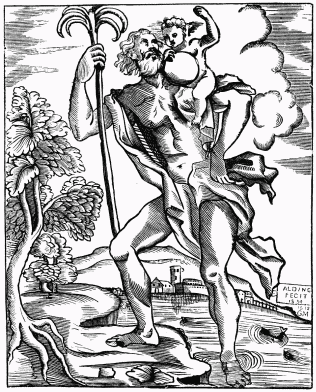
FIG. 56.—St. Christopher. From a Venetian print.
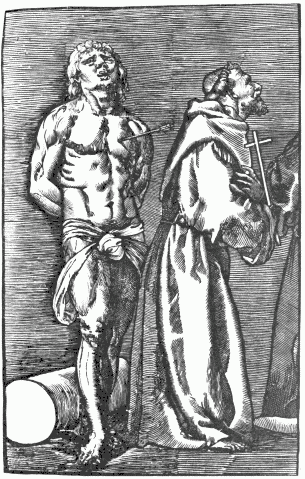
FIG. 57.—St. Sebastian and St. Francis. Portion of a
print by Andreani after Titian.
In Italy the older style of woodcuts in simple outline continued to be followed long after it was abandoned in the North. The designs in Italian books up to the year 1530, when cross-hatching was introduced, do not differ essentially in character from those of which examples have already been given. The names of the artists who produced them are either obscure or unknown, excepting Leonardo da Vinci, to whom are ascribed the cuts in Luca Pacioli’s volume, De Proportione Divina, published in 1509, and Marc Antonio Raimondi (1478-1534), to whom are ascribed the remarkably excellent cuts in a volume entitled Epistole et Evangelii Volgari Hystoriade, published in 1512 in Venice. From the first, Venice (Fig. 56) had been the chief seat of wood-engraving in Italy, and now became the rival of Lyons. The most distinguished of the group of artists who produced woodcuts in that city was Nicolo Boldrini (c. 1550), who designed several engravings (Fig. 59) after Titian (1476?-1575) with such boldness and force that some writers have believed Titian to have drawn the design on the block for Boldrini to engrave. The works of Titian and other Venetian painters were reproduced in the same way by Francesco da Nanto (c. 1530); and by other artists, like Giovanni Battista del Porto (c. 1500), Domenico delle Greche (c. 1550), and Giuseppe Scolari (c. 1580), who also sometimes made woodcuts from their own designs. Besides these engravings, some very large cuts, similar to those which the German artists had attempted, were printed from several blocks; but they have little interest. The illustrations in Vesalius’s Anatomy, published at Bâsle in 1543, in which wood-engraving was first employed as an aid to scientific exposition, were designed in Venice by Jean Calcar, a pupil of Titian, and are of extraordinary merit. Finally, in the cuts by Cesare Vecellio (1550-1606) for the volume entitled Habiti Antiche e Moderne, published in 1590, Venetian wood-engraving produced its last excellent work—so excellent, indeed, that the designs have been attributed to Titian himself, who was the uncle of Vecellio.
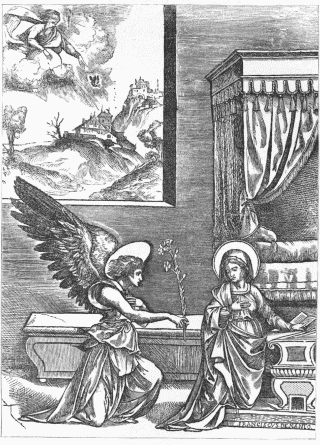
FIG. 58.—The Annunciation. From a print by Francesco da
Nanto.
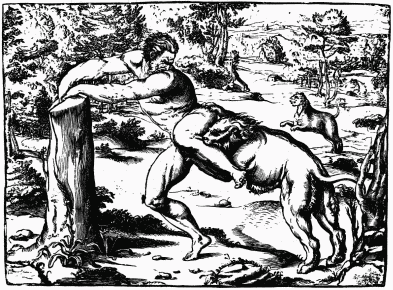
FIG. 59.—Milo of Crotona. From a print by Boldrini after
Titian.
The Italians devoted themselves with especial ardor to wood-engraving in chiaroscuro, and from the time when Ugo da Carpi introduced it in Venice it was practised by many artists. Nearly all of those designers who have been mentioned left works in chiaroscuro engraving as well as in the ordinary manner. Beside them, Antonio da Trento (c. 1530), Giuseppe Nicolo (c. 1525), Andrea Andreani (c. 1600), and Bartolemeo Coriolano (c. 1635) produced chiaroscuro engravings which are now much valued and sought for by collectors of prints. The Italian love of color led these artists into this application of wood-engraving, which must be regarded as a wrongly-directed and unfruitful effort of the art to obtain results beyond its powers. The Italians had been the first to discover the capacity of wood-engraving as an art of design, but they never developed it as it was developed in Germany; when they gave up the early simple manner in which they had achieved great results, and began to follow the later manner, the great age of Italy was near its close, and the arts felt the weakening influences of the rapid decline in the vigor of society. At Venice the arts remained for a while longer powerful and illustrious, and wood-engraving shared in the excellence which characterized all the artistic work of that city; but the place which wood-engraving held in the estimation of the Venetians appears to have been far lower than its place in the North, where it was popular and living, highly valued and widely influential as it could not be in any Italian city. At last in Italy, as in France, it died out altogether, and was no longer heard of as a fine art.
In the Netherlands the art had been practised continuously from the time of the Block-books with varying success, but, excepting in the works of Lukas van Leyden (1494-1533), it had produced nothing of great value. In the sixteenth century Hendrick Goltzius (1558-1617) designed some woodcuts in the common manner as well as chiaroscuro engravings, and Christopher van Sichem (c. 1620) some woodcuts in the ordinary manner, which have some worth. The only work of high excellence was due to Christopher Jegher (c. 1620-1660), who engraved some large designs which Rubens (1577-1640) drew upon the block; they are inferior to Boldrini’s reproductions of Titian’s designs, but are free, bold, and effective, and succeed in reproducing the designs characterized by the vehement energy of Rubens’s style. Rembrandt (1606-1665) also gave some attention to the art which the older masters had prized, and left one small portrait in wood-engraving by his own hand. His example was followed by his pupils, Jean Livens (1607-1663) and Theodore De Bray (c. 1650), whose cuts are characterized by the style of their master.
In England, where the art had not been really practised until Holbein’s day, and had not reached any degree of excellence, some improvement was made during the sixteenth century in designs for titlepages, portraits, and separate cuts, particularly in the publications of John Day. In the next century, during the civil wars, woodcuts of extreme rudeness were inserted in the pamphlets of the hour, and in the latter half of the century some interest was still felt in the art. In the eighteenth century two engravers, Edward Kirkall (c. 1690-1750) and John Baptist Jackson (1701-1754?), worked both in the ordinary manner and in chiaroscuro, but both were forced to seek support on the Continent, where, although the practice of wood-engraving as a fine art had long been extinct, the tradition of it as a mechanical process by which cheap ornaments for books were produced was still preserved. In France the engravers Pierre Le Sueur (1636-1710) and Jean Papillon (1660-1710) executed cuts of this sort which are without intrinsic value, and in the next generation their sons produced works which remained at the same low level of excellence. In Italy an artist, named Lucchesini, engraved some cuts in the latter part of the century, but they are without merit. In Germany the art was equally neglected, and the woodcuts in German books of the eighteenth century are entirely worthless.
The explanation of this rapid and universal decline of wood-engraving is to be found in general causes. The great artistic movement, which both in the North and the South had sprung out of mediæval religious life, and had gathered force and spirit as the minds of men grew in strength and independence, and as the compass of their interests expanded, which had been so transformed by the study of antiquity that in the South it seemed to be almost wholly due to that single influence, and in the North to have suffered an essential change in its spirit and standards, had at last spent itself. The intellectual movement which had gone along with it side by side, gaining vigor from the spread of literature, the debates of the Reformation, and the exercise of the mind upon the various and novel objects of interest in that age of great discoveries and inventions, had resulted in a century of religious warfare, aggravated by the violence of dynastic quarrels which arose in consequence of the new political organization of Europe. In this conflict the arts were lost; they all became feeble, and wood-engraving under the most favorable conditions would have shared in this general degradation. But for its utter extinction as a fine art there were more special causes. The popular literature with which it had flourished had been brought into contempt by Cervantes and Ariosto; the use of wood-engraving for coarse caricature also reflected discredit upon it; but the principal cause of its decadence lay in the taste of the age, which had ceased to prize art as a means of simple and beautiful design, but valued it rather as a means of complicated and delicate ornament, so that excessive attention was given to form divorced from meaning, and, as always happens in such a case, artificiality resulted. The wood-engravers attempted to satisfy this taste by seeking the refinement which copperplate-engraving obtained with greater ease and success, and they failed in the effort; in other words, wood-engraving yielded to copperplate-engraving because the taste of the age forced it to abandon its own province, and to contend with its rival on ground where its peculiar powers were ineffective.
Here the history of wood-engraving in the old manner, as a means of reproducing pen-and-ink sketches in fac-simile, came to an end. It has been seen how valuable it had proved both as an agent of civilization and as a mode of art; how serviceable it had been in the popularization of literature and of art, and what influence it had exerted in the practical questions of the day as a weapon of satire; how faithfully it had reflected the characteristics of successive periods of civilization, and how perfectly, in response to the touch of the artist, it had embodied his imagination and expressed his thought. It had run a great career; its career seemed to have closed; but, when at the end of the eighteenth century the movement toward the civilization of the people again began with vigor and spirit, a new life was opened to it, because it is essentially a democratic art—a career in which it has already reached a scope of influence that makes its usefulness far greater than in the earlier time, and has given promise of a degree of excellence which, though in design it may not equal Holbein’s power, may yet result in valuable artistic work.
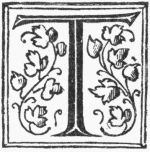
FIG. 60.—From the “Comedia di
Danthe.” Venice, 1536.HE revival of the art began in England, in the workshop of Thomas
Bewick (1753-1828). He is called, not without justice, the father of the
true art of engraving in wood. The history of the art in the older time
is concerned mainly with the designer and the ideas which he endeavored
to convey, and only slightly with the engraver whom he employed for the
mechanical work of cutting the block. In the modern art the engraver
holds a more prominent position, because he is no longer restricted to a
servile following of the designer’s work, line for line, but has an
opportunity to show his own artistic powers. This change was brought
about by the invention of white line, as it is called, which was first
used by Bewick. White line was a new mechanical mode of obtaining color.
“I could never discover,” says Bewick, “any additional beauty or color
that the cross-strokes gave to the impression beyond the effect produced
by plain parallel lines. This is very apparent when to a certainty the
plain surface of the wood will print as black as ink and balls can make
it, without any farther labor at all; and it may easily be seen that the
thinnest strokes cut upon the plain surface will throw some light on the
subject or design; and if these strokes again are made still wider or of
equal thickness to the black lines, the color these produce will be a
gray; and the more the white strokes are thickened, the nearer will they
in their varied shadings approach to white; and if quite taken away,
then a perfect white is obtained.” The practical difference between the
two methods is this: by the old method, after the simple work in outline
of the early Italian engravers had been relinquished for the style of
which Dürer was the great master, the block was treated as a white
surface, on which the designer drew with pen and ink, and obtained grays
and blacks by increasing the number of cross-strokes, as if he were
drawing on paper; by the new method the block was treated as a black
surface, and the color was lessened by increasing the number of white
lines. The latter process was as easy for the engraver as the former was
difficult, because whereas in the former he had to gouge out the diamond
spaces between the crossing lines, now he obtained white color by single
strokes of the graver. Bewick may have been led into the use of white
line simply by this consideration of the economy of labor, because he
engraved his own designs, and was directly sensible of the waste of
labor involved in the old method. In both methods color depends, of
course, upon the relative quantity of black and white in the prints; the
new method merely arranges color differently, so that it can be obtained
by an easy mechanical process instead of by a difficult one.
The use of white line not only affected the art by making it more easy to practise, but also involved a change in the mode of drawing. Formerly the effects were given by the designers’ lines, now they were given by the engravers’ lines; in other words, the old workman followed the designer’s drawing, the modern workman draws himself with his graver. By the old method the design was reproduced by keeping the same line-arrangement that the artist employed; by the new method the design is not thus reproduced, but is interpreted by a line-arrangement first conceived by the engraver. In the earlier period the design had to be a drawing in line for the engraver to cut out and reproduce by leaving the original lines in relief; now the design may be a washed sketch, the tints of which the engraver reproduces by cutting lines of his own in intaglio. The change required the modern engraver to understand how to arrange white lines so as to obtain artistic effects; he thus becomes an artist in proportion to his knowledge and skill in such arrangement. It is clear that, no matter how much mechanical skill, firmness, justness and delicacy of touch were requisite in the older manner of following carefully and precisely the lines already drawn upon the block, still the engraver was precluded from exercising any original artistic power he might have; he could appreciate the artistic value of the design before him, and, like Hans Lützelburger, show his appreciation by his fidelity in rendering it, but the lines were not his own. The new method of reproducing artists’ work by means of lines first conceived and arranged by the engraver requires, besides skill of hand, qualities of mind—perception and origination, and the judgment that results from cultivated taste. This is what is meant when it is said that the true art of wood-engraving is not a hundred years old, for it is only within that time that the value of a print has been due to the engraver’s capacity for thought and his artistic skill in line-arrangement, as well as to the designer’s genius. The use of white line as a mechanical mode of obtaining color was not unknown in the sixteenth century, and the artistic value of white line was definitely felt in early French and Italian wood-engraving; but the possibilities of development were not seen, and no such development took place. The step in advance was taken by Bewick, who thus disclosed the opportunities which wood-engraving offers its craftsmen for the exhibition of high artistic qualities. The white line revolutionized the art, and this is the essential meaning there is in calling Bewick the father of wood-engraving.
Of course the older method has not ceased to be practised; artists have drawn upon the block, and their lines have been reproduced; sometimes a part of the lines are thus drawn, particularly the leading lines, and the minor portions of the sketch have been indicated by the designer by washes and left to be rendered by the engraver in his own lines. Old or modern wood-engraving as a mode of reproducing designs in fac-simile is valuable, but none of the artistic merit they may possess is due to the engraver; while the artistic merit shown in the new style of wood-engraving, as an art of design in white line, belongs wholly to the engraver. It results from this that white line is the peculiar province of wood-engraving, considered as an art; but that does not exclude it from being practised in its old manner as a mode of copying and multiplying ordinary design which it is able to reproduce.
Thomas Bewick, the founder of the modern art, was born near Newcastle in 1753. He passed his boyhood in rude country life and received scanty schooling. At fourteen he was bound apprentice to the Newcastle engraver, Ralph Beilby; nine years later he went to seek his fortune in London, where he impatiently endured city life for less than a year; in the summer of 1777 he returned to his old master, with whom he went into partnership. Some preliminary training in book-illustration of the rude sort then in vogue was necessary to reveal his powers to himself; he received a premium from the Society for the Encouragement of Arts, which had shown some interest in wood-engraving; and after farther minor work he began, in 1785, to engrave the first block for his British Quadrupeds, which, with his British Birds, although his other cuts are numbered by thousands, is the principal monument of his genius. When he took the graver in his hand he found the art extinct as a fine art; at most only large coarse prints were manufactured. Besides his great service to the art in introducing the white line he substituted boxwood for the pear or other soft wood of the earlier blocks, and he engraved across the grain instead of with it, or “the plank way of the wood,” as he called it; he also began the practice of lowering the surface of the block in places where less color was desired, so that less pressure would come upon those parts in printing (a device which Aldegrever is believed to have resorted to in some of his works), and he used the dabber instead of the inking-roller.
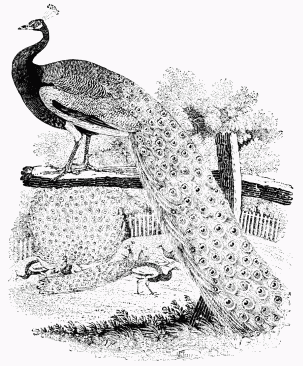
Fig. 61.—The Peacock. From Bewick’s “British Birds.”
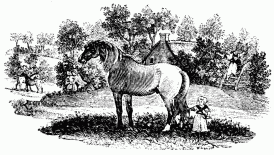
FIG. 62.—The Frightened Mother. From Bewick’s “British
Quadrupeds.”
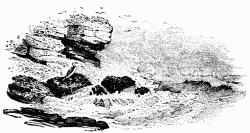
FIG. 63.—The Solitary Cormorant. From Bewick’s “British
Birds.”
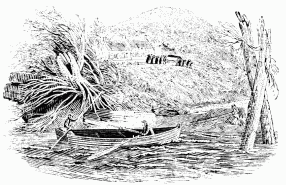
FIG. 65.—Birth-place of Bewick. His last vignette,
portraying his own funeral.
By such means he was truly, as Ruskin says, “a reformer”—Ruskin adds, “as stout as Holbein, or Botticelli, or Luther, or Savonarola,” and this is also true within limits. But if in relation to his art, and in answer to the tests required of him, his reforming spirit proved itself vigorous, independent, persistent in conviction, and faithful in practice, his natural endowment in other ways was so far inferior to those of the great Reformers named as to place him in a different order of men. He had not a spark of the philosophic spirit of Holbein, and but a faint glimmer of Holbein’s dramatic insight. He was not endowed with the romantic imagination, the deep reflective power, the broad intellectual and moral sympathy of Dürer. There is no need to magnify his genius, for it was great and valuable by its own right. He was, primarily, an observer of nature, and he copied natural facts with straightforward veracity; he delineated animal life with marvellous spirit; he knew the value of the texture of a bird’s feather (Fig. 61) as no one before ever realized it. He was open also to the influence which nature exerts over the emotions, and he rendered the sentiment of the landscape as few engravers have been able to do. His hearty spirit responded to country sights (Fig. 62), and he portrayed the humorous with zest and pleasure, as well as the cheerful and the melancholy with truth and feeling; his humor is sometimes indelicate, but it is faithful; usually it is the humor of a situation which strikes him, seldom the higher humor which appears in such cuts as the superstitious dog. He is open to pathos, too, but here it is not the higher order of pathos far-reaching into the bases of life and emotion—in this cut (Fig. 64), for example, one fancies his heart is nearly altogether with the uncared-for animal, and takes not much thought of the deserted hearth. With this veracity, sensitiveness, heartiness, there is also an unbending virtue—a little like preaching sometimes, with its gallows in the background—but sturdy and homely; not rising into any eloquent homily, but with indignation for the boys drowning a cat or the man beating his overdriven horse.
As an artist he knows, like Holbein, the method of great art. His economy of labor, his simplicity, justness, and sureness of stroke show the master’s hand. There was no waste in his work, no ineffective effort after impossible results, no meaningless lines. For these excellences of method and of character he has been often praised, especially because he developed his talents under very unfavorable conditions; but perhaps no words would have been sweeter to him than those which Charlotte Brontë wrote, sincerely out of her own experience without doubt, for he himself said he was led to his task by “the hope of administering to the pleasure and amusement of youth.” Charlotte Brontë, speaking through the lips of Jane Eyre of the pleasure she took as a child in looking through Bewick’s books, writes thus:
“I returned to my book—Bewick’s History of British Birds, the letterpress whereof I cared little for, generally speaking; and yet there were certain introductory pages that, child as I was, I could not pass quite as a blank: they were those which treat of the haunts of sea-fowl; of ‘the solitary rocks and promontories’ by them only inhabited; of the coast of Norway, studded with isles from its southern extremity, the Lindeness, or Naze, to the North Cape—
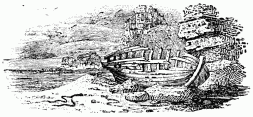
FIG. 66.—The Broken Boat. From Bewick’s “British
Birds.“
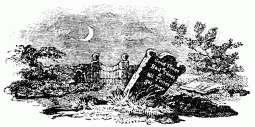
FIG. 67.—The Church-yard. From Bewick’s “British
Birds.“
Nor could I pass unnoticed the suggestion of the black shores of Lapland, Siberia, Spitzbergen, Nova Zembla, Iceland, Greenland. * * * Of these death-white realms I formed an idea of my own—shadowy, like all the half-comprehended notions that float dim through children’s brains, but strangely impressive. The words in these introductory pages connected themselves with the succeeding vignettes, and gave significance to the rock standing up alone in a sea of billow and spray; to the broken boat (Fig. 66) stranded on a desolate coast; to the cold and ghastly moon glancing through bars of cloud at a wreck just sinking. I cannot tell what sentiment haunted the quiet, solitary church-yard (Fig. 67), with its inscribed head-stone, its gate, its two trees, its low horizon, girdled by a broken wall, and its newly risen crescent attesting the hour of even-tide. The two ships becalmed on a torpid sea I believed to be marine phantoms. The fiend pinning down the thief’s pack behind him I passed over quickly: it was an object of terror. So was the black, horned thing, seated aloof on a rock, surveying a distant crowd surrounding a gallows. Each picture told a story—mysterious often to my undeveloped understanding and imperfect feelings, yet ever profoundly interesting. * * * With Bewick on my knee, I was then happy; happy at least in my way.”
Bewick published the first edition of the British Quadrupeds in 1790, the first edition of the first volume of the British Birds in 1797, and of the second volume in 1804; all these became popular, and were several times republished with additional cuts. His other works were very numerous, but, as a whole, they are of inferior value. Both in the volumes which have been mentioned and in his later work he received much aid from his pupils, who designed and engraved, subject to his correction and approval, many illustrations which are ascribed to him. In his own work, notwithstanding his great excellence, he was by no means perfect. In delineating rocks and the bark of trees, especially, he fails; in drawing he sometimes makes errors, particularly when what he represents was not subject to direct and frequent observation; in the knowledge of line-arrangement, too, he is less masterly than some of his successors, and, in this respect, his work is characterized by effectiveness and spirit rather than by finish. Yet, when these deductions have been made from his merit, so much remains as to render him, without doubt, the most distinguished modern engraver in wood.
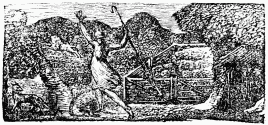
FIG. 68.—The Sheep-fold. By Blake. From Virgil’s
Pastorals.

FIG. 69.—The Mark of Storm. By Blake. From Virgil’s
Pastorals.
Before Bewick’s death, in 1828, another English genius, William Blake (1758-1827), greater as an artist than as an engraver, produced a series of woodcuts (Fig. 68) which is remarkable for vigor and originality. They were published in a reprint of Ambrose Philips’s Imitation of Virgil’s First Eclogue, in Dr. Thornton’s curious edition of Virgil’s Pastorals which appeared in 1820. One of them (Fig. 69) represents a landscape swept by violent wind. The idea of autumnal tempest has seldom been so strikingly and forcibly embodied as in the old gnarled oak straining with laboring limbs, the hedge-rows blown like indistinguishable glimmering dust, the keen light of the crescent moon shining through the driving storm upon the rows of laid corn and over the verge of the distant hill. Contemporary engravers said the series was inartistic and worthless, and an uneducated eye can easily discover faults in it; imaginative genius of the highest order is expressed in it, nevertheless, and from this the series derives its value. Blake never made a new trial of the art.
The revival of wood-engraving was not confined to England. At the end of the eighteenth century Prussia founded a chair at Berlin for teaching the art, and made the Ungers, father and son, professors of it; but, although they contributed to the progress of wood-engraving in Germany, no real success was obtained until the time of their successor, Gubitz. In France, too, the Society for the Encouragement of National Industry began to offer prizes for the best wood-engraving as early as 1805; but some years passed before any contestants, who practised the true art, appeared. The publisher Didot deserves much of the credit for reviving French wood-engraving, because he employed Gubitz, and called to Paris the English engravers who really founded the modern French school. The efforts of societies or individuals, however, do not explain the rise of the art in our time. Wood-engraving merely shared in the renewal of life which took place at the end of the last century, and so profoundly affected literature, art, and politics. The barren classical taste disappeared in what is known as the return to nature, the intellectual life of the people was stimulated to extraordinary activity, civilization suffered rapid and important modifications, and every human pursuit and interest received an impulse or a blow. Wood-engraving felt the influence of the change, and came into demand with the other cheap pictorial arts to satisfy popular needs; the interest of the publishers, the improvements in the processes of printing, and the example of Bewick and his pupils especially contributed to bring the old art again into use, and it continued to be practised because its value in democratic civilization was immediately recognized.
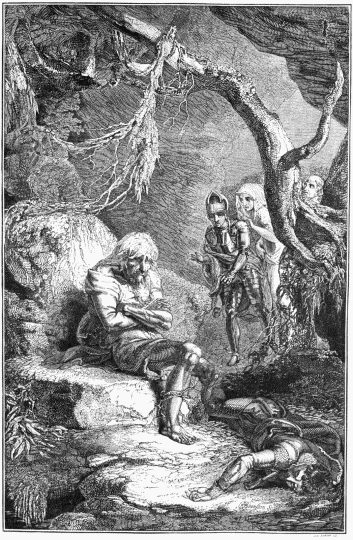
FIG. 70.—The Cave of Despair. By Branston. From Savage’s
“Hints on Decorative Printing.”
England was naturally the country where wood-engraving most flourished. The pupils of Bewick, particularly Charlton Nesbit and Luke Clennell, practised it with great merit, the former with a better knowledge of line-arrangement than Bewick, and the latter with extraordinary artistic feeling. The field, however, was not left wholly to those who had learned the art from Bewick. Robert Branston was, like Bewick, a self-taught wood-engraver; unlike Bewick, who was never trammelled by traditions, and was thus able to work out his own methods in his own way by the light of his own genius, Branston (Fig. 70), who had served an apprenticeship in engraving on copperplate, and had mastered the art of incising and arranging lines proper to that material, came to wood-engraving with all the traditions of copperplate-engraving firmly fixed in his mind and hand, and he founded a school which began where the art had left off at the time of its decline—in the imitation of the methods of engraving on copper. It is true that Branston sometimes admitted white line where he thought it would be effective, but he relied on black line for the most part. The wrong step thus taken led to the next. Engravers on copper began to draw designs on the block for wood-engravers to cut out. John Thurston, the most distinguished of these, drew thus for John Thompson, who, however, did not follow the lines with the servility of the engravers of the sixteenth century, but modified them as he engraved, changed the direction and character of the lines, and occasionally introduced white line. In the same way Clennell, who also engraved after John Thurston’s drawing, modified it, particularly in the disposal of the lights and shadows, and thus improved it by his own artistic powers. Merely in engraving simple lines Clennell’s artistic feeling placed him in a higher rank than even an engraver of the power of John Thompson, as may be seen in the cuts which these two men made after Stothard’s drawings in an edition of Rogers’s Poems (Fig. 71, 72); in this volume Clennell has given an effect which Thompson could not give. Branston’s engraving, in the same way, shows the craftsman’s skill and knowledge, but it lacks the artistic quality of the rival school of Nesbit and Clennell. The imitation of the manner of copperplate, which Branston introduced, became common, and was developed in the work of Orrin Smith and William Harvey, in which wood-engraving lost its distinctive virtues. This school, nevertheless, was popular, and its engravings were used to illustrate important works to which for a long time copperplate-engraving alone had been considered equal; thus wood-engraving once more encroached upon its rival’s ground.
Meanwhile the great illustrated magazines and papers, to which wood-engraving owes so much of its encouragement, sprang up, and with them the necessity for rapid work, and the temptation to be satisfied with what satisfied the public taste. Cruikshank and Seymour prepared the way for the designers, Leech, Gilbert, Tenniel, and the Dalziels, the latter engravers themselves, and carelessness in engraving accompanied carelessness in drawing; but from the latter charge Tenniel’s designs must be excepted. These artists were inferior in natural endowment to even the lesser artists of the sixteenth century, and their work was made worse by the negligent rendering of their engravers, who were not characterized either by the fidelity of the old craftsmen, or the skill and knowledge of Thompson, or the artistic sense of Clennell, but were merely inefficient workmen employed to cut lines drawn for them as rapidly as possible. Mr. Linton made an attempt to introduce the practice of rendering artists’ drawings by lines conceived and arranged by the engraver himself; but the current was too strongly set in another direction, and the engraver kept his old position of mechanic employed to clear out the designers’ lines. The work which was produced by this method in great quantities was in the mass not valuable either for the art shown in the design or for the skill of the engraver, but derived its interest and popularity from qualities which have little connection with fine art. No great works were produced; and it is only here and there that separate prints of value are to be found, among which those by Edmund Evans in Birket Foster’s edition of Cowper’s Task deserve to be mentioned.
Upon the Continent the development of wood-engraving was by no means so great as in England, but some excellent work has been done by the pupils of Thompson, who went to Paris by Didot’s invitation; these men, of whom MM. Best and Leloir were the most distinguished, together with MM. Brevière, Porret, and Lavoignat, produced some cuts of considerable value both in book-illustration and in the art magazines. In Germany, too, wood-engraving counts some good workmen among its following, but the German woodcuts, of which the two (Figs. 73, 74) here given are favorable examples, remain inferior for the most part to either the English or French.
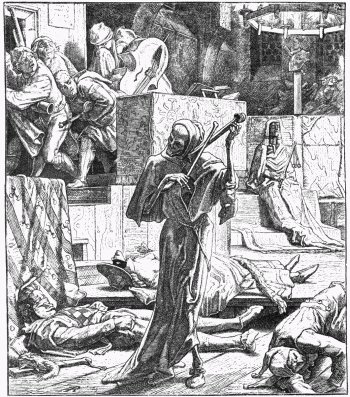
FIG. 74.—Death as a Throttler.
Wood-engraving, however, has been practised in our time less as a fine art than as a useful art; and if little that is valuable for artistic worth has been executed by engravers since the days of Nesbit, Clennell, and Thompson, the application of wood-engraving for merely useful purposes has been of the greatest service. It has become a most powerful instrument of popular education; it imparts the largest share of the visual knowledge which the people have of the things they have not directly seen; its utility as a means of instruction by its representation of the objects with which science deals, and the mechanical contrivances and processes which science employs, and also as a means of influence in caricature and of simple popular amusement, is incalculable; and, notwithstanding its low level in art, there can be no doubt that it frequently assists the exercise of the popular imagination, and sometimes generates in the better-endowed minds among the people a real sympathy with the higher products of art and an appreciation of them. These utilities, indeed, so overbalance its value simply as a fine art as to give it a distinctive character, when its practice now is compared with that of any previous time; as, formerly, it reflected the aspects of changing civilization, now it reflects the peculiar character of our time, and shows how great has been the gain in the popular hold upon the material comforts of life and upon intelligence, and how great has been the loss in the community’s appreciation of purely artistic results. This is especially true of the earlier American practice of the art, which seldom resulted in any work of artistic value.
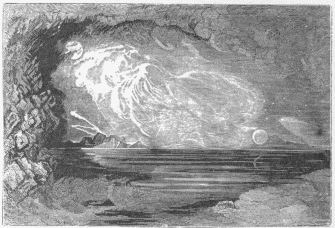
FIG. 75.—The Creation. Engraved by J. F. Adams.
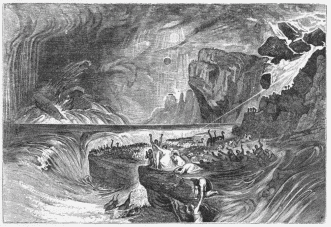
FIG. 76.—The Deluge. Engraved by J. F. Adams.
The history of wood-engraving in America, until recent years, is comparatively insignificant. In art, as in literature, the first generation of the Republic followed the English tradition almost slavishly; the engravers, indeed, showed hardly any individuality, and left no work of permanent value. During Colonial times some very rude apprentice-work on metal had been produced; but the first certain engraving in wood bears date of 1794, and was from the hand of Dr. Alexander Anderson (1775-1870), a physician by profession, but with a natural bent toward the art, which he had played at from boyhood, and finally made the principal business of his life. The sight of some of Bewick’s early work had determined him to employ wood as a material in place of the type-metal on which he had previously engraved in relief, and the example of Bewick taught him to use white line. At that time, and for many years afterward, the art was applied mainly to the production of cuts for advertisements, labels, and the like, as a servant of trade; its use for illustration simply was confined almost wholly to juvenile books. The engravers who at the beginning of the century introduced the art in New York, Boston, Philadelphia, Baltimore, and New Haven were few, and, for the most part, self-taught; usually they merely copied English cuts, and thus they reflected in their poorer work the manner of successive English schools; but at least they kept the art alive, and handed it on through their pupils. Dr. Anderson was the best of them; yet, although he was free and bold in his handling of white line, and once or twice attained an excellence that proved him a worthy pupil of Bewick, he left nothing of enduring interest, and the work of his fellows met with even swifter forgetfulness. Woodcuts of really high value were not produced in America until Joseph Alexander Adams (b. 1803), one of the young engravers encouraged by Dr. Anderson, began to do his best work (Figs. 75, 76), about 1834, and applied his talents to the illustration of the Bible, published by the Harper Brothers in 1843, with which wood-engraving may be properly said to have begun its great career in this country. This volume was embellished by sixteen hundred cuts, executed under the supervision of Mr. Adams, and plainly exhibits the capacities and limitations of the art at that time. Other illustrated books followed this from the same press, and from that of the Putnams; the cuts in the papers and magazines, established during the second quarter of the century, became more numerous, and the attention paid by the American Tract Society to the engravings in its various publications had great influence in encouraging and improving the art. The work of this first half-century, however, as a whole, does not deserve any great praise; in judging it, the inexperience of the engravers and the difficulties of printing must be remembered; but in its inferior portions it is marked by feebleness and coarseness, and in its better portion by a hardness and stiffness of line, a lack of variety and gradation in tone and tint, and a defect in vivacity and finish. There are here and there exceptional cuts to which these strictures would not apply, but the body of the work is vitiated either through an incomplete control of his materials by the engraver, or through an evil imitation of copperplate-drawing by the designer. Where the engraver was also the designer the work is usually of higher value.

FIG. 77.—Butterflies. Engraved by F. S. King.
With the second half of the century began that expansion of the press, that increase in the volume and improvement in the quality of the reading provided for the public through newspapers and magazines, which has been one of the most striking and important results of democratic institutions. The Harpers’ Monthly Magazine was established in 1850, and it was followed within a decade by several illustrated periodicals; during the civil war there was naturally a slackening in this development, but, upon its close, numerous new illustrated weekly or monthly publications began their longer or shorter career, among them those issued by the Scribners, which were to have so important a bearing on the history of wood-engraving. The art naturally received a great impetus from this demand upon its resources; it rapidly advanced; and being encouraged farther by the popularity of the new and beautifully illustrated gift-books of the Boston and New York publishers, it has taken the leading place in the artistic interests of the country.
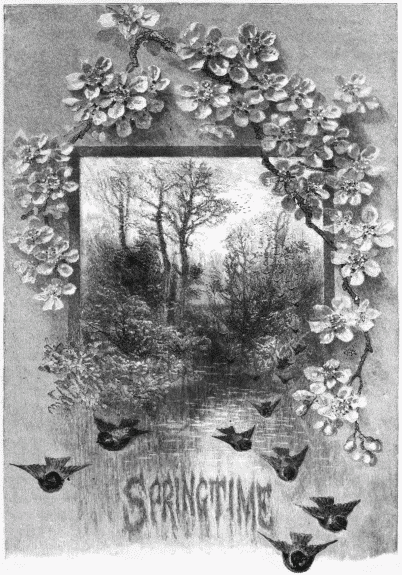
FIG. 78.—Engraved by F. S. King.
The scope of this volume does not allow any detailed account of the works of American engravers individually; but while the increased productiveness and improved technique of the art during the third quarter of the century are being noticed, it would be unjust to make no mention of the quiet, careful, and refined woodcuts of Mr. Anthony, or of the long and unflinching fidelity of Mr. Linton, with its reward in admirable work, or of the exquisite skill of Mr. Henry Marsh, the best of American engravers of that period. The latter’s marvellous rendering of insect life in the illustrations to Harris’s Insects Injurious to Vegetation, published in 1862, can never be forgotten by any who have been fortunate enough to see the artist-proofs. His work is in the manner of copperplate-engraving, and affords one of the few instances in which wood-engraving has equalled the rival art in fineness, delicacy, softness, and gradation of tone. Whatever the critic’s theory may be, he must remember that genius has a higher validity than reason, and must acknowledge such work as this to be its own justification. Unfortunately, the cuts in the published volume were not—perhaps at that time could not be—printed with the success they deserved. The work of these three engravers illustrates what advance had already been made in skilful line-arrangement and in technique before 1870, about which time the indications of an approaching change in the art became plainly evident. Since then progress has been uninterrupted, swift, marked by bold experiments and startling surprises. Now American engravers excel all others in knowledge of the resources of their art, and in control of its materials, as well as in the interest of their work. They have not, it is true, produced, as yet, anything to rank in artistic value with the designs of the older masters; but, in their hands, the art has gained a width and utility of influence among our people hitherto unequalled in any nation at any period. From the beginning of its history wood-engraving has been distinctively a democratic art; at present the ease and cheapness of its processes and the variety of its applications make it one of the most accessible sources of inexpensive information and pleasure; for this reason it has acquired in our country, where a reading middle class forms the larger portion of the nation, a popular influence of such far-reaching and penetrative power as to make it a living art in a sense which none other of the fine arts can claim. It now enters into the intellectual life and enjoyment of our people to a degree and with a constancy impossible to other arts. In this respect, too, it is only at the beginning of its career; for, as popular education spreads, the place that the art holds in the national life will continually become more important. These social conditions, the technical skill of the engravers, and the appearance among the people of a critical spirit concerning their work—not perhaps to be called intelligent as yet, but forming, nascent, feeling its way into conscious and active life—make up a group of most favorable circumstances for a real artistic development. Whether such a development will take place depends in large measure on the clearness with which engravers understand the laws of their art, as presented by their materials, and on the degree in which such knowledge controls them. The experiments of recent years are to be judged finally by the results; but, in spite of the novel effects obtained, and of the new character that has been given to the art, there is at present no such unanimity, either among the engravers or the public, as to be decisive of the worth of the new work as a whole. While the issue is still doubtful, and the stake is the future of the only art by which those who care for the growth of civilization can develop in the people a sense of art, bring them to an appreciation of its value, open their understandings to its teachings, and fill their lives with its delights, something may be gained by recurring to fundamental principles, as illustrated by the practice of the older masters, not with an end to limit the future by the past, but to foresee it. Such a brief review and summary of past thought respecting the aims and methods of wood-engraving, with such corrections as modern improvements in processes justify, will afford the surest ground for criticism of the work still to be considered.
All the graphic arts have to do with some one or more of the three modes under which nature is revealed to the artist—the mode of pure form, the mode of pure color, the mode of form and color, as they are affected by the different lights and shadows in which they exist. In nature these three modes do not exist separately, and usually no one of them is so prominent as to efface the others; in the several arts, however, the principal attention is given, now to one, now to another, of them, according to the capacities of the art and the powers of the artists. Thus sculpture deals only with form, and even in painting, which includes all within its province, different masters make a choice, and aim principally at reproducing color, or chiaroscuro, or form, as their talents direct them, for a genius seldom arises with the power to combine all these with the truth and harmony of nature. Wood-engraving, there is no need to say, cannot reproduce the real hues of objects, nor the play of light upon hue and form, nor the more marvellously transforming touch of shadow; it can represent the form of a peach, but it cannot paint its delicate tints, nor adequately and accurately show how the beauty of its bloom in sun differs from the beauty of its bloom in shade. More broadly, a landscape shot with the evanescent shadows that hover in rapidly moving mists, or the intermingling light and gloom of a wind-swept moonlit sky half overcast with clouds, wood-engraving has no power to mirror in true likeness. The most it can do in this direction is to indicate, it cannot express; it can exhibit strong contrasts and delicate gradations of light and shadow, and it can suggest varying intensity of hues, by the greater or less depth of its blacks and grays; but real color and perfect chiaroscuro it relinquishes to painting.
Form, therefore, is left as the main object of the wood-engraver’s craft, and the representation of form is effected by delineation, drawing, line-work. This is why the great draughtsmen, such as Dürer and Holbein, succeeded in designing for wood-engraving. They knew how to express form by lines, and they did not attempt to do more even when suggesting color-values by the convention of black and gray. Line-work is thus the main business of the engraver, because form must be expressed by lines. Line-work, however, is of different kinds, and all kinds are not equally proper for the art. Hitherto the fineness of line by which copperplate-engraving easily obtains delicacy of contour and soft transitions of tone, has been rarely and with difficulty attained by the best-skilled hand and eye among wood-engravers, and when attained has, usually, not been successfully printed. There remains, however, no longer any reason to exclude fine lines from wood-engraving, when once it has become plain that such work is possible without a wasteful expenditure of labor, that its results are valuable, and that it can be properly printed. But if it shall prove that the character of the line proper to copperplate is also proper to wood, it may be looked on as certain that the line-arrangement proper to the former material can never be rationally used for the latter. The crossing of lines to which the engraver on copperplate resorts is especially laborious to the engraver in wood, and after all his toil does not give any desirable effect which would not have resulted from other methods of work. It has been seen that Dürer employed this cross-hatching in imitation of copperplate-engraving; but he did so because he was ignorant of the way to arrange color so that this difficult task of engraving cross-hatchings would be unnecessary. Holbein, who was equally ignorant of the possibilities of white line, rejected cross-hatching. Bewick also rejected it, and proved it was unnecessary even where much color was to be given. In the later work of the sixteenth century, and in modern English work, wood-engraving imitated its rival art both in the character and the arrangement of its lines; it failed in both instances mainly because such imitation involved a waste of labor, and did not result in works so valuable artistically as were obtained by copperplate-engraving with far greater ease. At present the objection to the use of cross-hatching in wood-engraving is as serious as ever, but the employment of fine lines for some purposes, as in the rendering of delicate textures and tones, has been justified, mainly in consequence of innovations in the modes of printing. The charm of this new and surprising beauty in fine-line woodcuts, however, has not at all deprived the old broad and bold line of its force and vigor, nor made less valuable the strong contrasts in which the art won its earlier success. On the contrary, it is in the old province and by the old methods that wood-engraving has worked out its most distinctive and peculiar effects of real value.
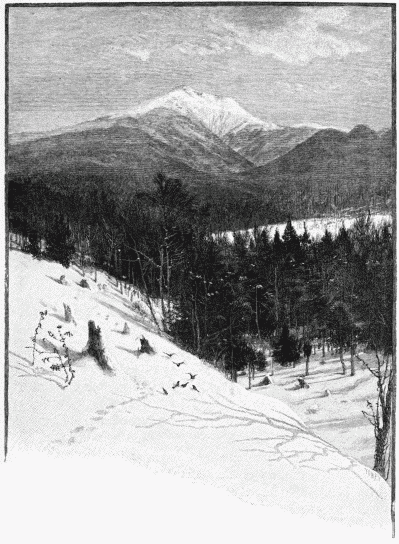
FIG. 79.—Mount Lafayette (White Mountains). By J.
Tinkey.
In what has been thus far said of the line-work proper to wood-engraving, black line-work only has been referred to. Wood-engraving is also an art of design in white line, and here a different set of considerations applies. There is not the same difficulty in cutting fine and delicate white lines, as is the case with black lines, nor the same unlikelihood of their effect being felt in the printed design. There is, too, no objection whatever to crossing white lines, as a mode of work, for it is as easy a process for the wood-engraver as crossing black lines is for the copperplate-engraver, and the result thus obtained is sometimes of great value, particularly in the moulding of the face. The art of design in white line, however, is but little developed; but, not to depreciate the older method of black line, which is extremely valuable, nevertheless it is clear that white line-work is the peculiar province of the wood-engraver, and that in developing its capacities the future of the art mainly lies, so far as it rests with him. The merit of all line-work, whether black or white, fine or broad, bold or subtle, depends upon the certainty with which the lines serve their purposes. If, as with Holbein, every line has its work to do, and does that work perfectly; if it fulfils its function of defining an outline, or marking the moulding of a muscle, or deepening the intensity of a shadow, or performing some similar service, then the designer has followed the method of high art, and has produced something of value. The work of all who practise the art—the draughtsmen who draw in black line, and the engravers who draw in white line—has worth just in proportion as they acquire the power to put intention into their lines and to express something by every stroke; and, other things being equal, he who conveys most meaning in the fewest lines, like Holbein and Bewick, is the greatest master. By means of such lines so arranged wood-engraving does represent form with great power, and also texture, which is only a finer form; it indicates positive hues, and, within limits, suggests the play of light and shadow on form and hue. It thus aims chiefly, in its bolder and more facile work, at force, spirit, and contrast, and, in its more rare and difficult efforts, at delicacy, finish, and nice gradation of harmonious tones.
If there is any value in the teaching of the past, either these principles must be shown to be no longer valid, or by them the engraving of the last ten years must be judged. A considerable portion of it consists of attempts to render original designs—for example, a washed drawing—not by interpreting its artistic qualities, its form, color, force, spirit, and manner, so far as these can be given by simple, defined, firm lines of the engraver’s creation, but by imitating as closely as possible the original effect, and showing the character of the original process, whether it were water-color, charcoal-sketching, oil-painting, clay-modelling, or any other. However desirable it may be to make known the original process, such knowledge does not enhance the artistic value of the cut; and however pleasing it may be to the public to obtain copies even successfully, indicating the general effects, without the charm, of originals in other arts with which wood-engraving has little affinity, such work will rather satisfy curiosity than delight the eye. The public may thus derive information; they will not obtain works of artistic value at all equal to those which wood-engraving might give them, did it not abdicate its own peculiar power of expressing nature in a true, accurate, and beautiful way and descend to mechanical imitation. The application of the art to such purposes, as little more than another mode of photography, is a debasement of it; it ceases to be a fine art when it ceases to be practised for the sake of its own powers of beautiful expression. Such work, therefore, has only a secondary interest, as being one more process for the defective reproduction of beautiful things, and requires only a passing mention.
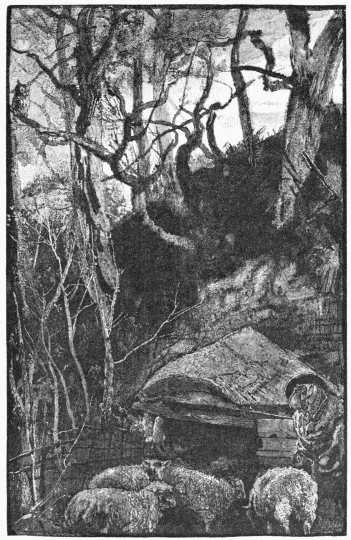
FIG. 80.—“And silent were the sheep in woolly
fold.”—KEATS, St. Agnes Eve.
Engraved by J. G. Smithwick.

FIG. 81.—The Old Orchard. Engraved by F. Juengling.
Aside from these imitative cuts, the most striking portion of recent engraving, that which has been hailed as opening a new career to the art, is characterized either by a great refinement of line or by a practical abandonment of line. Of the former tendency Mr. Henry Marsh affords the most prominent examples by his engravings in illustration of insect life, or similarly delicate work. The skill of his hand and the charm of the style he has adopted are beyond question; there is as little doubt of the truthfulness and beauty of the effects secured in the rendering of individual objects, the butterfly wing, the pond-lily, or the spray of the winter forest; the only deduction to be made from his praise is, that when he binds these several objects into one picture, as in a landscape, he suffers the too frequent penalty of fine detail, and loses in the delicacy and finish of the parts the beauty that should have characterized the whole. There is always in his cuts grace, poetic feeling, exquisite workmanship, but there is in some of them a lack of body, substance, distance, of skill in placing the objects in a natural relation to one another, that mars the total result. Mr. Marsh is one of the older men, and deserves the credit of first showing what wood-engraving is capable of in refinement of line; but younger men have joined him in developing these capacities of the art, and have made work in this style more common. The best of it is by Mr. F. S. King, being equal in every quality to Mr. Marsh’s most admirable cuts. Such engraving is exceptional, of course; but the evenness and transition of tone, the care for line, the discrimination of both line and color values, shown in these butterflies (Fig. 77), are characteristic of Mr. King’s work in general, although in some of it a lack of definition in outlines is noticeable. The refinement of line in these two engravers is justifiable, because they put meaning into the lines, and express by them something that could not otherwise be interpreted to the eye through this art; and so long as this remains the case they will meet with commendation and encouragement. It is only when such refinement is needlessly resorted to, or is confusing or meaningless, that it is rightly rebuked.
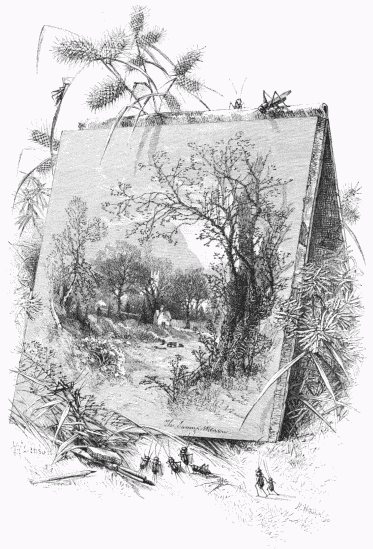
FIG. 82.—Some Art Connoisseurs. Engraved by Robert
Hoskin.
The second and more evil tendency of recent engraving, toward an abandonment of line, is exhibited in many phases, and by nearly all the younger men. In some cases the central portion of the cut seems alone to be cared for, and is much elaborated, while the surrounding parts fade off into the background with the uncertainty of a dissolving view; in other cases there seems to be entire indifference about form or texture: there is no definition of the one nor discrimination in the other, but an effect only is sought for, usually vague or startling, always unsatisfactory, and not infrequently ugly. Such work is the product of ignorance or carelessness or caprice. In it wood-engraving ceases to be an art of expression. These obscure masses, meant for trees, in which one may look with a microscope and see neither leaf, limb, nor bark; these mottled grounds, meant for grass or houses, in which there is neither blade nor fibre; these blocks of formless tints, in which all the veracity of the landscape perishes, do not record natural facts, or convey thought or sentiment; they are simply vacant of meaning. To illustrate or criticise such work would be an ungracious as well as a needless task; but even in the best work of the best engravers, with which alone these pages are concerned, the marks of tendency in this wrong direction are palpably present. Here, for example, is some charming work by Mr. King (Fig. 78), wholly successful in securing the effect sought—beautiful, well worth doing. The spirit of the season, the moist days, the April nature, the leafing and budding in mist and cloudiness, and gleam of light and breath of warm, soft air along full-flowing streams, the swift and buoyant welcome borne on the forward flight of the birds straight toward us, the ever-renewed marvel of the birth of life and the coming on of days of beauty—the feeling of all this is given, and the success is due in large part to the vagueness that dims the whole design; but why should the wreathing flowers, the tender crown of all, lose the curve of their petals and darken the delicate form of each young blossom, all blurred into the background, and half-effaced and marred, and tiring the eye with the effort to define them? If the value of form had been more felt, if the definition of outline had been firmer, if the spray had really blossomed, would not the design have been better? There is less doubt of the error in the next cut. The disappearance of texture and the attenuation of substance into flat shadow is very plain. To a true woodsman, to one who has lived with trees, and knows and loves them, there is little of their nature in these vague, transparent, insubstantial forms, that seem rather skeleton leaves than strong-limbed, firm-rooted trees that have sung in the frosty silence and lived through the “bitter cold” of many a St. Agnes Eve. Who, looking on these pale shadows, would remember that the same poet, whose verse is here put into picture, thought of trees as “senators” of the woods? In the disposition of the light of the atmosphere, in the management of the gray tints, particularly in the lower portion of the cut, the eye takes more pleasure: there is some discrimination between the sheep, the old man, and the fold—as much, perhaps, as the prevailing obscurity admits; but the cut as a whole is much harmed by the lack of relief, which seems to be a recurring fault in fine-lined and crowded work. The cut (Fig. 81) by Mr. Juengling, whose engravings exhibit the tendencies of the new methods in the most pronounced way, shows, like the preceding illustration, an inattention to texture in the foliage, and an entire negligence of cloud-form in the sky, which is a fair example of the abandonment of line, or of meaningless line, as one chooses to call it. An effect is gained, a horizon light and shadowed masses, but the landscape is not faithfully rendered.
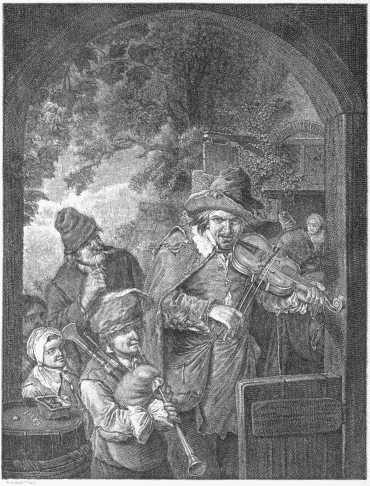
FIG. 83.—The Travelling Musicians. Engraved by R. A.
Muller.
Of a different order are the two following cuts, simple, quiet, and refined. The mountain scene (page 183) is admirable for the disposition of its lights and shadows, the gradation and variation of its tints, and the subordination of every element to a truthful total effect. The cut by Mr. Hoskin (Fig. 82) is a good example of his always excellent work, showing his power of economy and his feeling for line and tone, while it evinces self-restraint in methods of work.
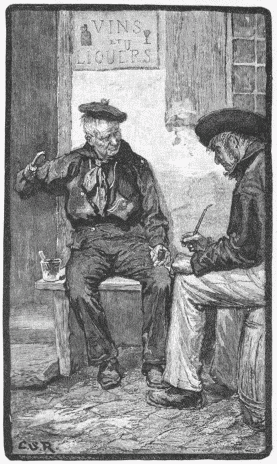
FIG. 84.—Shipwrecked. Engraved by Frank French.
The change that has taken place in recent engraving has been less marked in cuts of landscape, however, than in cuts of figures. In the former line-arrangement has been affected somewhat, and usually for the worse, but in the latter the transformation has been greater, and the results already worked out of more striking novelty. The development, however, has been in the same directions, in refining or abandoning line, and examples exhibit the same or analogous variation in the engravers’ regard for form and texture. The first group here given (Fig. 83) shows clearly, by the character and the direction of its lines, that it is a reproduction of copperplate-engraving, and as a piece of imitative work it is remarkable; the figures are life-like, full of vivacity and force, and the faces are natural and very expressive. It is, however, in the style of copperplate, and in the qualities mentioned it does not excel the next cut (Fig. 84), in which the character and direction of the lines are those peculiar to wood-engraving. The former has an appearance of more finish, as also of more hardness, but it does not by its more difficult mode of engraving, accomplish what is aimed at in any higher degree than does the latter by its simpler, easier, and freer manner. The Tap-room (Fig. 85), by the same engraver, is less careful work, and its novel technical quality, while of the same general character as that of the last cut, is more pronounced and less pleasing. The figures as a whole are good, but the faces are poor; the use of the cross white line or stipple for fire, apron, rafter, table-cloth, and face indifferently cannot be commended, and the character of many of the lines (particularly in the lower part of the seated figure) is beyond criticism. It is the still bolder and more general use of the peculiar modes of engraving in this design that results in the most meaningless, negligent scratchiness of the new school. Mr. J. P. Davis’s “Going to Church” (Fig. 86) is a favorable example of another considerable class of cuts that is on first sight novel and pleasing. On examination one sees that the figures are certainly the best part of the cut; but why should the maiden’s dress be the same in texture as the cow’s breast, and the young man’s trousers the same as the cow’s back? and why should the child’s face be of a piece with its collar? Notice, too, beyond the wall the familiar flat and insubstantial trees, with their foliage that would serve as well for the ground at the foot of the steps.
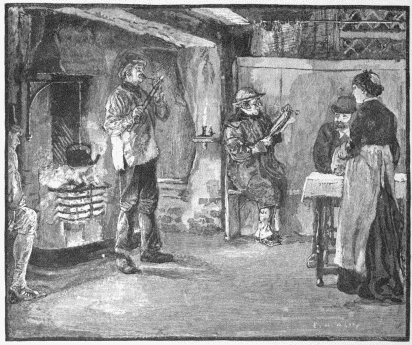
FIG. 85.—The Tap-room. Engraved by Frank French.
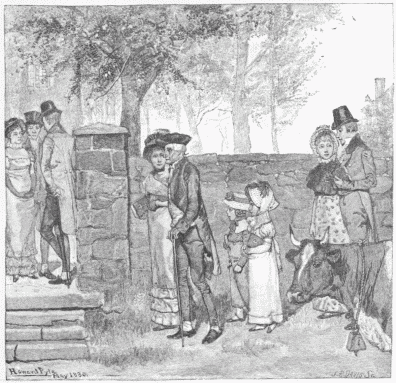
FIG. 86.—Going to Church. Engraved by J. P. Davis.
The best work in these figure-cuts, however, is by Mr. T. Cole, who stands at the head of engravers in the new manner, though he is not confined by it. The portraits, by which he first became widely known, were remarkable for an entire absence, in some cases, of any demarcation between picture and background, and for a concentration of attention upon some few specially characteristic features of the face. Whoever deserved the blame so liberally meted out to these heads, Mr. Cole’s reputation rests now upon better work—upon such an exquisitely refined portrait as that of Modjeska as Juliet, in the Scribner Portfolio of Proofs, and other cuts of hardly less merit there to be found. Frequently, however, there is noticeable in some of his best work an analogous characteristic to that of the earlier portraits—the concentration of attention on the central figures, to the neglect of the minor portions of the designs. Thus in the example here given (Fig. 87), so long as the eye is concerned only with the two stately figures, there is only pleasure in such admirable workmanship; but when the gaze wanders to the near, and especially the remote, background, there is nothing to delight the lover of art or nature in such confusion, insubstantiality, flat, waving shadows without beauty or meaning. Who would guess from that obscure and formless net-work in the distance that the next line of these verses is—
This “generalization” of the landscape, as it is called, empties it of all that makes it lovely. To the cut, as an example of figure-engraving, the highest praise may be given, but as an entire picture it is harmed by its imperfection of detail. To subordinate by destroying is not the mode of high art, but it is often the mode of the new school.
Of all the work of recent years, however, the best, it is generally admitted, is in the portraits, possibly because the artists are restrained by the definiteness of the form and expression to be conveyed. Mr. Cole’s Modjeska has been already praised, though it is rather a fine figure than a fine portrait. A portrait of Mr. Hunt by Mr. Linton, and of Mr. Fletcher Harper by Mr. Kruell, are also of high merit, and in both a very high level of excellence is sustained. The special character of the new school in portraiture, as a distinct and radical style, is illustrated by Mr. Juengling’s “Spanish Peasant” (Fig. 88). It recalls at once the portrait of Whistler by the same hand. In disposition of color, in certainty of effect, and in skill of execution, all must recognize the engraver’s power; but is the value of the human face, in whose mouldings is expressed the life of years and generations—is the value of the human eye, in which the light never goes out, truly felt? One cannot help feeling that the brutalizing of this face is a matter rather of art than of truth. Contrast the two portraits here given (Figs. 89, 90), one in the bolder, more definite, larger style, admirable in its tones and discrimination of textures, among the very best in this manner; the other finer, with the tendency to fade into the background, but faultless in its rendering of the face, and proving by success the great effectiveness of the fine white cross-line.
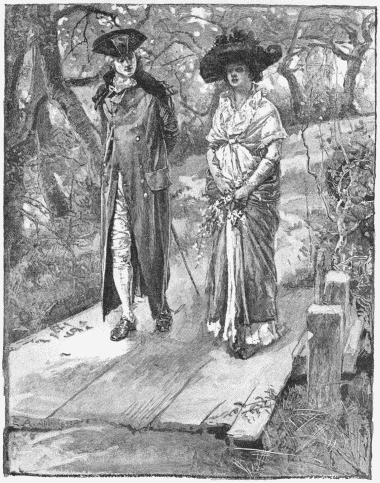
FIG. 87.—
“Nay, Love, ’tis you who stand
With almond clusters in your clasping hand.”
Engraved by T. Cole.
These illustrations of recent engraving are sufficiently numerous and various to offer a fair test of what has been done in different branches of the art. The capacity of any new school should be judged by the best it has produced; but, even in this best work, it is not difficult to discern at times the same tendencies that have been the main cause of failure in the less good work. The obscuration of leading outlines; the disregard of substance, shape, and material in leaf, cloud, and stuffs; the neglect of relief and perspective, the crowding of the ground with meaningless lines, either undirected or misdirected, or uselessly refined; the aim at an effect by an arrangement of color almost independent of form, the attempt to make a momentary impression on the eye, instead of to give lasting pleasure to the mind through the artistic sense, and—especially in the best work—the lack of perfect and masterly finish in all portions of the design, however insignificant by comparison with the leading parts—these must be counted as defects. How much of such failure is due to the designer, it is impossible to determine without sight of the original drawings; a considerable portion of the fault may rest with him; in wood-engravings, as art-works, the union of designer and craftsman is inseparable—the two stand or fall together. But when all deductions have been made, the best engravers may rightly be very proud of their work, confident of their future, and hopeful of great things. With such perfect technical skill as they possess, with such form and texture as they have represented with care, truth, and beauty; with such softness of tone and power of both delicate and strong line as some of their number have earned the mastery of, the value of future work depends only on the wisdom of their aims. If the fundamental grounds on which the foregoing criticism rests be true, these engravers have won success in so far as they have attended to form and texture as the main business of their art, and they have failed in so far as they have destroyed these. From its peculiar and original powers in the interpretation of form and texture by line-work, either black or white, wood-engraving has derived its value and earned the respect due it as an art, both through its great works in the past and, so far as yet appears, through its best works in the present. Wood-engravers, if the design given them to reproduce is in black line, fit for engraving in wood, must copy it simply, and then, should artist-draughtsmen arise, the art in this manner will again produce works of permanent value as in the days of Holbein; if, on the other hand, the design given them is in color or washed tints, or anything of that sort, they must interpret it by lines of their own creation, and then, too, should any engraver-draughtsmen arise among them, the art will possess a similarly high value; but in no other way than by attending to these two kinds of line-work, separately or together, can wood-engraving remain artistic; and even then its success will depend on the knowledge and skill of the designer, whether artist or engraver, in the use and arrangement of the special lines which are best adapted to the art.

FIG. 88.—The Spanish Peasant. Engraved by F. Juengling.
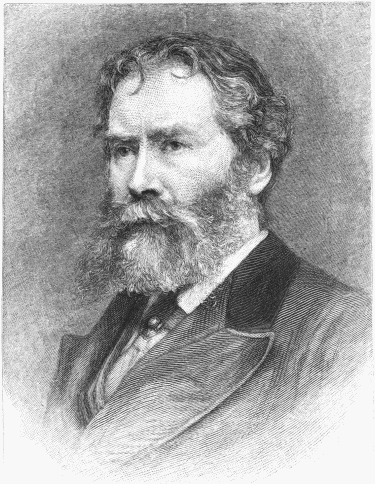
FIG. 89.—James Russell Lowell. Engraved by Thomas
Johnson.
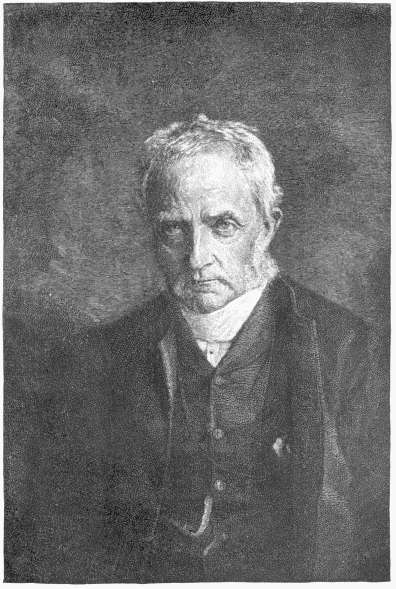
FIG. 90.—Arthur Penrhyn Stanley. Engraved by G. Kruell.
The history of wood-engraving, as it is recorded in the chief monuments of the art, has now been told from its beginning down to the present moment. Its historic and artistic value has been mainly dwelt upon, with the view of showing its utility as a democratic art and its powers as a fine art. It has had an illustrious career. It has shared in the great social movements which transformed mediæval into modern civilization. It entered into the popular life, in its earliest days, by representing the saints whom the people worshipped. It contributed to the cause of popular civilization in the spread of literature. It assisted the introduction of realism into art, and gave powerful aid in the gradual secularization of art. It lent itself to the Italian genius, and was able to preserve something of the loveliness of the Italian Renaissance. It helped the Reformation. It gave enduring form to the imagination and thought of Dürer and Holbein. It fell into inevitable decline; but, when the development of democracy again began in the new age, it entered into the work of popular civilization with ever-increasing vigor and ever-widening influence. It seems still to possess unlimited capacities for usefulness in the future in both the intellectual and artistic education of the people. It may yet crown its career by making this country an art-loving as well as a book-reading Republic.
Archiv für die zeichnenden Künste, mit besonderer Beziehung auf Kupfer-stecher-und Holzschneidekunst. Herausg. von R. Naumann. 1ter-16ter Jahrgang. Leipzig, 1855-’70. 8vo.
Bartsch (Adam). Le Peintre-Graveur. Vienne, 1803-’21. 21 T. 8vo; Atlas, 4to.
Becker (C.). Jobst Amman, Zeichner und Formschneider, etc., nebst Zusätzen von R. Weigel. Leipzig, 1854. 4to.
Berjeau (J. Ph.). Biblia Pauperum. Reproduced in Facsimile from one of the copies in the British Museum, with an historical and bibliographical Introduction. London, 1859. Folio.
Speculum Humanæ Salvationis. Le plus ancien Monument de la Xylographie et de la Typographic réunies. Reproduit en Facsimile, avec Introduction historique et bibliographique. Londres, 1861. Folio.
Bernard (Auguste). De l’Origine de l’Imprimerie. Paris, 1853. 2T. 8vo.
Bigmore (E. C.) and Wyman (C. W. H.). A Bibliography of Printing. With Notes and Illustrations. [Vol. 1.] A-L. London, 1880. 4to.
Bilder-Album zur neueren Geschichte des Holzschnitts in Deutschland. Herausg. vom Albertverein. Leipzig, 1877. 4to.
Blanc (Charles). Grammaire des Arts du Dessin, etc. Paris, 1867. 8vo.
Brevière (A.). De la Xilographie ou Gravure sur bois. Rouen, 1833. 8vo.
Chatto (W. A.). A Treatise on Wood-engraving. London, 1839. 8vo. Known as Jackson (John) and Chatto’s History.
Derschau (H. A. von). Holzschnitte alter deutscher Meister in den Originalplatten, gesammelt von Derschau, mit einer Abhandlung über die Holzschneidekunst begleitet, von Rudolph Zacharias Becker. Gotha, 1808-’16. 3 Th. Folio.
Dibdin (T. F.). A bibliographical, antiquarian, and picturesque Tour in France and Germany. London, 1821. 3 vols. 8vo.
Bibliographical Decameron. London, 1817. 3 vols. 8vo.
Bibliotheca Spenceriana. London, 1814, ’15. 4 vols. 8vo.
Didot (Ambroise Firmin). Essai typographique et bibliographique sur l’Histoire de la Gravure sur Bois. Paris, 1863. 8vo.
Documents iconographiques et typographiques de la Bibliothèque royale de Belgique. Bruxelles, 1877. Folio.
Première Livr. Spirituale Pomerium, par L. Alvin.
Deuxième Livr. Gravures Criblées, par H. Hymans.
Troisième Livr. La Vierge de 1418, par Ch. Ruelens.
Cinquième Livr. Les neuf Preux, par É. Fétis.
Sixième Livr. Légende de Saint Servais, par Ch. Ruelens.
Duplessis (G. G.). Essai de Bibliographie, contenant l’Indication des Ouvrages relatifs à l’Histoire de la Gravure et des Graveurs. Paris, 1862. 8vo.
Histoire de la Gravure. Paris, 1880. 8vo.
Les Merveilles de la Gravure. Paris, 1869. 8vo.
Émeric-David (T. B.) Discours Historique sur la Gravure en Taille-douce et sur la Gravure en Bois. Paris, 1809. 8vo.
Falkenstein (C. C. von). Geschichte der Buchdruckerkunst. Leipzig, 1840. 4to.
Fournier (P. S.). Dissertation sur l’Origine et les Progrès de l’Art de Graver en Bois. Paris, 1758. 8vo.
De l’Origine et des Productions de l’Imprimerie primitive en Taille de Bois. Paris, 1759. 8vo.
Garnier (J. M.). Histoire de l’Imagerie populaire et des Cartes à jouer à Chartres. Chartres, 1869. 8vo.
Gilks (T.). A Sketch of the Origin and Progress of the Art of Wood-engraving. London, 1868. 8vo.
Hamerton (P. G.). The Graphic Arts. London, 1882. Plates. Folio.
Heinecken (K. H., Baron von). Idée générale d’une Collection complette d’Estampes. Leipsic et Vienne, 1771. 8vo.
Heller (Joseph). Geschichte der Holzschneidekunst. Bamberg, 1823. 8vo.
Holtrop (J. W.). Monumens typographiques des Pays-Bas au quinzième Siècle. La Haye, 1868. Folio.
Humphreys (H. Noel). A History of the Art of Printing. London, 1867. Folio.
Masterpieces of the early Printers and Engravers. London, 1870. Folio.
Ilg (Albert). Ueber den kunsthistorischen Werth der Hypnerotomachia Poliphili. Wien, 1872. 8vo.
Jansen (H.). Essai sur l’Origine de la Gravure en Bois et en Taille-douce. Paris, 1808. 2 T. 8vo.
Labitte (A.). Gravures sur Bois tirées des Livres français du XVe Siècle. Paris, 1864. 4to.
La Borde (Henri). Notice sur deux Estampes de 1406. Gazette des Beaux-Arts, Mars 1, 1869.
La Borde (Léon E. S. J., Marquis de). Débuts de l’Imprimerie à Strasbourg. Paris, 1840. 8vo.
Essai d’un Catalogue des Artistes originaires des Pays-Bas. Paris, 1849. 8vo.
Lacroix (Paul). Les Arts au Moyen Âge et à l’Époque de la Renaissance. Paris, 1870. 8vo.
Lanzi (L.). Storia pittorica della Italia dal Risorgimento delle Belle Arti fin presso al fine del XVIII secolo. 6a ed. Milano, 1823. 6 vols. 8vo.
Maberly (J.). The Print Collector. Edited, with Notes and a Bibliography of Engraving, by R. Hoe, Jr. New York, 1880. 4to.
Meisterwerke der Holzschneidekunst aus dem Gebriete der Architektur, Sculptur und Malerei. 1ter-3ter Band. Leipzig, 1880, ’81. Folio.
Merlin (R.). Origine des Cartes à Jouer. Paris, 1869. 4to.
Murr (C. G. von). Bibliothèque de Peinture, de Sculpture, et de Gravure. Francfort et Leipsic, 1770. 2 vols. 12mo.
Ottley (W. Y.). An Inquiry concerning the Invention of Printing. London, 1863. 4to.
An Inquiry into the Origin and early History of Engraving, upon Copper and in Wood. London, 1816. 2 vols. 4to.
Paeille (C.). Essai historique et critique sur l’Invention de l’Imprimerie. Lille, 1859. 8vo.
Papillon (J. M.). Traité historique et pratique de la Gravure en Bois. Paris, 1766. 3 T. in 2. 8vo.
Passavant (J. D.). Le Peintre-Graveur. Leipsic, 1860-’64. 6 T. 8vo.
Renouvier (Jules). Des Gravures en Bois dans les Livres d’Anthoine Verard. Paris, 1859. 8vo.
Des Gravures sur Bois dans les Livres de Simon Vostre. Paris, 1862. 8vo.
Des Types et des Manières des Maîtres Graveurs pour servir à l’Histoire de la Gravure. Montpellier, 1853-’56. 4to.
Histoire de l’Origine et des Progrès de la Gravure dans les Pays-Bas et en Allemagne, jusqu’à la fin du quinzième Siècle. Bruxelles, 1860. 8vo.
Rumohr (C. F. L. F. von). Zur Geschichte und Theorie der Formschneidekunst. Leipzig, 1837. 8vo.
Ruskin (John). Ariadne Florentina. Six Lectures on Wood and Metal Engraving. Orpington, Kent, 1876. 8vo.
Savage (William). Practical Hints on decorative Printing, with Illustrations engraved on Wood. London, 1822. 4to.
Scott (W. B.). Albert Dürer, his Life and Works. London, 1869. Sm. 8vo. The Little Masters. London, 1879. 8vo.
Singer (S. Weller). Researches into the History of Playing Cards; with Illustrations of the Origin of Printing and of Engraving on Wood. London, 1816. 4to.
Sotheby (S. L.). Principia Typographica. The Block-books issued in Holland, Flanders, and Germany during the fifteenth Century. London, 1858. 3 vols. Folio.
Thausing (M.). Albert Dürer, his Life and Works. Translated. With Portraits and Illustrations. London, 1882. 8vo.
Umbreit (A. E.). Ueber die Eigenhändigkeit der Malerformschnitte. Leipzig, 1840. 8vo.
Vries (A. de). Éclaircissemens sur l’Histoire de l’Imprimerie. La Haye, 1843. 8vo.
Waagen (G. F.). Treasures of Art in Great Britain, with Supplement. London, 1854-’57. 4 vols. 8vo.
Weigel (Rudolph). Holzschnitte berühmter Meister in treuen Copien. Leipzig, 1851-’54. Folio.
Weigel (T. O.) and Zestermann (A. C. A.). Die Anfänge der Drucker-Kunst in Bild und Schrift. Leipzig, 1866. 2 Bände. Folio.
Willshire (W. H.). An Introduction to the Study and Collection of ancient Prints. 2d ed. London, 1877. 2 vols. 8vo.
Woltmann (Alfred). Holbein und seine Zeit. Leipzig. 1866-’68. 2 Th. 8vo.
Wornum (R. N.). Some Account of the Life and Works of Holbein. London, 1867. 8vo.
Zani (P.). Materiali per servire alla Storia dell’Origine e de’ Progressi dell’Incisione in Rame e in Legno, etc. Parma, 1802. 8vo.
Zorn (Peter). Historia Bibliorum pictorum. Lipsiæ, 1743. 4to.
A, B, C, D, E, F, G, H, I, J, K, L, M, N, P, R, S, T, U, V, W, Z
Adams, Joseph Alexander, 173.
Altdorfer, Albrecht, 111.
America:
earlier history and characteristics of the art, 171-177;
present position and influence, 177, 178;
works in imitation of other arts, 185;
errors in practice 190, 202;
future of the art, 202-206.
Amman, Jobst, 114.
Anderson, Alexander, 172.
Andreani, Andrea, 146.
Anthony, A. V. S., 176.
Ars Memorandi, 43.
Ars Moriendi, 43.
Augsburg:
prints, 26;
playing-cards, 27;
Bible, 52;
press, 46, 57.
Baldung, Hans, 110.
Bamberg: press, 56.
Basle:
characteristics of the city in Holbein’s time, 117.
Behaim, Hans Sebald, 112-114.
Bernard, St.:
his rebuke of art, 14.
Best, Adolphe, 169.
Bewick, Thomas:
the father of modern wood-engraving, 151;
sketch of his life, 154;
reforms effected by him, 154;
character of his genius, 154-160;
his works, 161;
influence on the art in America, 172.
Bible:
the Cologne, 49;
the Nuremberg, 50;
the Augsburg, 52;
the Strasburg, 50;
Coverdale’s, 132;
Le Clerc’s, 139;
Jean de Tourne’s’, 141;
Harper’s, 173.
Bible cuts:
Behaim’s, 113;
Holbein’s, 129-131;
Jean Moni’s, 141.
Biblia Pauperum:
their use, 31;
designs not original, 32;
description, 33;
place of issue, 37.
Blake, William, 162.
Block-printing:
invention, 30, 31, 42;
decline, 45.
Boldrini, Nicolo, 144.
Bouts, Diedrick, 39.
Branston, Robert, 164, 167.
Bray, Theodore de, 147.
Brevière, Henri, 169.
Breydenbach’s Travels, 55.
Brontë, Charlotte, criticism of Bewick, 159-161.
Brosamer, Hans, 114.
Brothers of the Common Lot:
their claim to the authorship of the block-books, 39.
Brussels: print of 1418, 23.
Burgkmaier, Hans:
genius and works, 99-106;
influence on Holbein, 117
Calcar, Jean, 146.
Carpi, Ugo da, 87, 146.
Caxton, William:
Game and Playe of the Chesse, 63.
Chiaroscuro-engraving, 87-89, 146, 148, 187-189.
Christopher, St.:
print of 1423, 22.
Chronicles:
general description, 52;
the Cologne, 53;
the Nuremberg, 53;
the Saxon, 53.
Clennell, Luke, 164, 167.
Cole, T., 197, 200.
Cologne:
early school of art, 42, 43;
Bible, 49;
Chronicle, 53;
press, 57.
Color:
in the holy prints, 26 note;
in early German books, 52;
in the Livres d’Heures, 60, 61;
in chiaroscuro-engraving, 87.
Color, conventional, 55, 151, 152.
Copperplate-engraving:
influence on wood-engraving, 47, 91, 112, 141, 149, 164, 176, 182.
Coriolano, Bartolemeo, 146.
Coster, Lawrence:
claim to the invention of wood-engraving, 21.
Cousin, Jean, 136-139.
Cranach, Lukas, 110.
Criblée-work:
description, 18;
in France, 62, 63.
Cross-hatching:
first use in Germany, 55;
in Italy, 86;
its propriety in wood-engraving, 152, 186.
Cunio, Isabella and Alexander Alberico, 20.
Dalziel, the Brothers, 168.
Dance of Death:
typical mediæval idea, 121;
Holbein’s, 123-129;
Guyot Marchand’s, 62.
Davis, J. P., 197.
Day, John, 147.
Didot, Firmin (père):
his influence on the French revival of the art, 163.
Dream of Poliphilo, 70-81, 137, 138.
Du Pré, Jean, 60.
Dürer, Albert:
influence on the art, 90;
character of his genius, 91, 92;
Apocalypse of St. John, 93, 94;
Larger Passion, Smaller Passion, Life of the Virgin, 95-97;
single prints, 97;
Car and Gate of Triumph, 97-99.
England:
early woodcuts, 63;
the art in Holbein’s time, 132, 147, 148;
modern revival, 151, 164.
Evans, Edmund, 168.
Form, value of, in wood-engraving, 193.
France:
early books in French, 58;
early woodcuts, 59-63;
influence of Germany and Italy, 62, 135;
character of the French Renaissance and its art, 135-141;
the modern revival, 163, 169.
French, Frank, 196.
Genre art, first appearance in wood-engraving, 121.
Germany:
German block-books, 42, 43;
activity and influence of the early printers, 46, 47;
the free cities, 48;
character of the early press, 48, 56, 57;
influence on France, 62;
on Italy, 67;
on Venice, 68;
chiaroscuro-engraving, 87;
the Renaissance, 91, 97, 110, 111, 115;
decline, 148;
the modern revival, 163, 169.
Gilbert, Sir John, 168.
Goldsmiths, mediæval:
their art-works, 14-16;
position in France and the Netherlands, 17;
their claim to the invention of wood-engraving, 18, 19.
Goltzius, Hendrick, 147.
Goujon, Jean, 139.
Greche, Domenico delle, 145.
Gregory the Great:
his defence of art, 31.
Groups, modern, 195-200.
Gubitz, Friedrich Wilhelm, 163.
Harvey, William, 167.
Historia Johannis Evangelistæ ejusque Visiones Apocalypticæ, 42.
Historia Virginis Mariæ, 41.
History of the Kings of Hungary, 53, 54.
Holbein, Hans:
the first modern artist, 116;
character and development of his genius, 117-120;
early work, 120; Dance of Death, 123-128;
his democratic, reforming, and sceptical spirit, dramatic and artistic power, 120-127;
Figures of the Bible, 129-131;
his English portraits, 131;
his English woodcuts, 132;
summary of his powers and influence, 132-134.
Holy prints, 21-26.
Hoskin, Robert, 195.
Hypnerotomachia Poliphili:
illustration of the Italian Renaissance, 70-81;
the French reproduction, 137, 138.
Initial letters:
in Faust and Scheffer’s Psalter, 46;
in the Augsburg Bible, 52;
in Italy, 86;
in Holbein’s alphabets, 120, 121.
Italy:
artistic spirit, 65;
democratic civilization, 66;
the Renaissance, 67;
introduction of printing, 68;
early cuts, 68;
general characterization of the engraved work, 85;
decline, 86;
chiaroscuro-engraving, 87-89;
influence on Holbein, 117, 118.
Jackson, John Baptist, 148.
Jegher, Christopher, 147.
Jerome, St., Epistles of, 70, 71.
Juengling, F., 195, 200.
Kerver, Thielman, 62.
King, F. S., 189, 193.
Kirkall, Edward, 148.
Kruell, G., 200.
Landscape, modern, 186-195.
Lavoignat, H., 169.
Le Caron, Pierre, 60.
Le Clerc, Jean, 139, 140.
Leech, John, 168.
Leloir, Auguste, 169.
Le Rouge, Pierre, 60.
Le Sueur, Pierre, 148.
Leyden, Lukas van, 110, 147.
Linton, W. J., 168, 176, 200.
Little Masters, 111.
Livens, Jean, 147.
Livres d’Heures, 60-62.
Lorch, Melchior, 114.
Lorme, Philibert de, 140.
Lucchesini, 148.
Lützelburger, Hans, 129.
Lyons:
earliest seat of the art in France, 59;
character of the earlier press, 59;
the later press, 140.
Magazines: use and influence, 167.
Marchand, Guyot, 60, 62.
Marsh, Henry, 176, 186.
Maximilian, Emperor:
life and character, 97;
works executed by his order—the Triumphal Car, 98;
Gate of Triumph, 99;
the Triumphal Procession, 99-105;
The Adventures of Sir Tewrdannckh, 106;
The Wise King, 106;
influence of his patronage, 109.
Mayence press, 46, 53, 55, 57.
Metal-engraving earlier than wood-engraving, 18.
Middle Ages:
position of goldsmiths, 14-18;
impersonal spirit, 26;
value of painting, 28, 31;
immobility of mind, 32;
religious temper and intellectual life, 40, 41;
art, typical, 53;
illustrated by Dürer, 92;
by Maximilian’s works, 99-105;
by the Dance of Death, 121.
Moni, Jean, 141.
Nanto, Francesco da, 145.
Nesbit, Charlton, 164.
Netherlands:
civilization in, 37;
wood-engraving probably invented in, 38;
decline of, 47, 57, 147.
Nicolo, Giuseppe, 146.
Nuremburg:
prints, 26;
playing-cards, 27;
Bible, 50;
Chronicle, 53;
press, 57, 114.
Painting, place of, in mediæval popular civilization, 28, 31.
Papillon, Jean, the Elder, 148;
the Younger, 20.
Paris:
character of the Parisian press, 59, 60;
early books and printers, 60;
the Livres d’Heures, 60,
secular books, 62, 63.
Périssin, Jacques, 140.
Pfister, Book of Fables, 56.
Pigouchet, Philippe, 62.
Playing-cards, 27.
Pleydenwurff, William, 53.
Pliny, reference to Varro’s portraits, 20.
Porret, 169.
Porto, Giovanni Battista del, 145.
Portraits, modern, 198, 200-202.
Principles of wood-engraving, 180-185.
Processes:
engraving in relief on wood known to the ancients, 13;
of taking impressions, 17;
en manière criblée, 18;
of taking off the holy prints, 21, 22;
of block-printing, 30;
of cross-hatching, 55;
of chiaroscuro-engraving, 87-89;
white-line and Bewick’s other reforms, 151-155.
Pynson, Richard, 64.
Raimondi, Marc Antonio, 96, 142.
Reformation reflected in wood-engraving, 51, 112, 117, 120, 126, 132.
Rembrandt, 147.
Renaissance: in Italy, 67-85;
in Germany, 91, 97, 110, 111, 115;
in France, 135-141.
Romances, popular, 59, 141.
Rubens, P. P.:
reproductions after his designs, 147.
Ruskin, John:
criticism on Holbein, 126;
on Bewick, 155.
Saints’ images, 21-26.
Salomon, Bernard, 140-141.
Sand, George, criticism of Holbein, 124.
Satire: in Bible-cuts, 50, 51;
in the Little Masters, 112;
in Holbein, 120, 132.
Saxony: Chronicle, 53.
Schatzbehalter, 54.
Schäuffelin, Hans, 106.
Schön, Erhard, 114.
Scolari, Giuseppe, 145.
Sebastian, St.:
print of 1437, 23.
Secularization of art, 50, 110, 111.
Smith, Orrin, 167.
Solis, Virgil, 114.
Speculum Humanæ Salvationis:
description, 34;
place of issue, 36;
authorship, 38, note, 39;
character of the cuts, 40.
Spirituale Pomerium, 39.
Springinklee, Hans, 106, 110.
Stamps, engraved, early use, 13.
Stimmer, Tobias, 114.
Strasburg:
Bible, 50;
press, 57.
Suger, defence of art, 15.
Tenniel, John, 168.
Tewrdannckh, Sir, Adventures of, 106.
Thompson, John, 164.
Titian, reproductions after his designs, 144-146.
Tortorel, Jean, 140.
Tory, Geoffrey, influence on French engraving, 135.
Trento, Antonio da, 146.
Turrecremata’s, Cardinal, Meditations, 68.
Ulm:
prints, 26;
press, 57.
Unger, Johann Georg, and Johann Gottlieb Friedrich, 163.
Van der Weyden, Roger, 42.
Van Eyck, 36, 37, 42.
Varro, portraits in his works, 20.
Vecellio, Cesare, 146.
Venice:
claim to the origin of wood-engraving, 20;
decree forbidding importation of prints from Germany, 27;
early cuts, 68;
early views of the city, 69;
later cuts, 82-87, 143-147.
Verard, Antoine, 60, 62.
Vesalius’s Anatomy, 145.
Vinci, Leonardo da, 142.
Vostre, Simon, 62.
White line:
description, 151;
influence on the art in Bewick’s hands, 153;
the engraver’s province, 154, 184.
Wise King, The, 106.
Woeiriot, Pierre, 140.
Wohlgemuth, Michael, 53, 54.
Worde, Wynkyn de, 64.
Zainer Gunther, 46, 52.
THE END.
| Typographical errors corrected by the etext transcriber: |
|---|
| appendix von Albert Ilg. Wein=> appendix von Albert Ilg. Wien {pg 19} |
| Guyot Marchand’s La Dance Macabre, first published in 1485=> Guyot Marchand’s La Danse Macabre, first published in 1485 {pg 62} |
| its bloom in sun difers=> its bloom in sun differs {pg 181} |
FOOTNOTES:
[1] “Documents, Iconographiques et Typographiques de la Bibliothèque Royale de Belgique,” Deuxième Livr. Gravure Criblée, par M. H. Hymans. Bruxelles, 1864-1873. Quoted in Willshire, “An Introduction to the Study and Collection of Ancient Prints.” London. 1877; 2 vols.; vol. ii., p. 64.
[2] “Fulget ecclesia in parietibus, et in pauperibus eget. Suos lapides induit auro; et suos filios nudos deserit. * * * Tam multa denique, tamque mira diversarium formarum ubique varietas apparet ut magis legere libeat in marmoribus, quam in codicibus, totum diem occupare singula ista mirando quam in lege Dei meditando.” Sancti Bernardi opera omnia. Recognita, etc., curis Dom. J. Mabillon. 4 vols. Paris, 1839; vol. i., col. 1242-1244, Apologia ad Guillelmum, cap. xii.
[3] “Abundet unusquisque in suo sensu, mihi fateor hoc potissimum placuisse ut quæcumque cariora, quæcumque carissima, sacrosanctæ Eucharistiæ amministrationi super omnia deservire debeant. Si libatoria aurea, si fialæ aureæ et si mortariola aurea ad collectam sanguinis hircorum aut vitulorum aut vaccæ ruffæ, ore Dei aut prophetæ jussu, deserviebant; quanto magis ad susceptionem sanguinis Jesu Christi vasa aurea, lapides preciosi, quæque inter omnes creaturas carissima continuo famulatu, plena devotione exponi debeat.” Œuvres complètes de Suger recueillies, etc., par A. L. de la Marche. Paris, 1867. Sur son administration Abbatiale, p. 199 et seq.
[4] La Barte, “Histoire des Arts Industriels au Moyen Age et a l’époque de la Renaissance.” 4 tom. (Album, 2 tom.). Paris, 1864. Tom. i., pp. 391-513; tom. ii., pp. 1-592.
[5] Leon Delaborde, “Notice des Emaux et Objets divers exposés au Louvre.” Paris, 1853; p. 84.
[6] Leon Delaborde, “La plus ancienne Gravure du Cabinet des Estampes de la Bibliothèque Royale, est-elle ancienne?” Paris, 1840. Quoted in Willshire, vol. ii., p. 64.
[7] Theophilus Presbyter, “Schedula Diversarum Artium.” Revidirter text, ubersetzung und appendix von Albert Ilg. Wien, 1874; cap. lxxi., lxxii., pp. 281-283.
[8] Renouvier, “Histoire de l’Origine et des Progrès de la Gravure dans les Pays-Bas et en Allemagne, jusqu’à la fin du quinzième Siècle.” Bruxelles, 1860.
[9] The date of 1406 has been assigned to two examples at Paris with great ingenuity, but not unquestionably, by M. le Vte. Henri Delaborde, “Notice sur Deux Estampes de 1406 et sur les commencements de la Gravure Criblée.”—Gazette des Beaux Arts, Mars 1, 1869.
[10] Willshire, vol. ii., pp. 62, 63.
[11] Pliny, “Nat. Hist.,” liber xxxv., c. 2.
[12] W. Y. Ottley, “An Inquiry into the Origin and Early History of Engraving upon Copper and in Wood.” London, 1816; 2 vols.; vol. i., pp. 54-59.
[13] Papillon, “Traité Historique de la Gravure en Bois.” Paris, 1766. Trois parties en deux tomes; tom. i., p. 83.
[14] Von Murr, Zani, Émeric David, Ottley.
[15] Heinecken, Lanzi, Mariette, Didot.
[16] Jackson and Chatto, “A Treatise on Wood-engraving.” London, 1839; p. 39.
[17] Meerman, “Orig. Typogr.” Hagæ, Comit., 1765.
[18] Hadriani Junii Batavia. Lugdunum Batavorum, 1588.
[19] S. Sotheby, “Principia Typographica.” The block-books issued in Holland, Flanders, and Germany during the 15th century. London, 1858; 3 vols.; vol. i., p. 179.
[20] Heinecken, “Idée Générale d’une Collection complette d’Estampes.” Leipsic et Vienne, 1771; p. 250.
[21] Those who are curious may consult on this print “Quelques Mots sur la Gravure au millésime de 1418,” par C. D. B. (M. de Brou). Bruxelles, 1846. “La Plus Ancienne Gravure connue avec une date,” Mémoire par M. le Baron de Reiffenberg. Bruxelles, 1845; also, in favor of the date, the works of Ruelens, Luthereau, Renouvier, Berjeau, and against it, the works of Passavant, LaCroix, and Chatto.
[22] This print is described by Ottley in his “Inquiry,” etc. London, 1863. There is another woodcut on the reverse side of the leaf, representing the Virgin holding the dead Christ, of which Ottley gives a fac-simile. The manuscript with these woodcuts is now in the possession of Professor Norton, of Harvard College.
[23] Many fine examples of these prints are reproduced, with their original colors, in Weigel and Zestermann’s “Die Anfänge der Drucker-Kunst in Bild und Schrift.” 2 Bände. Leipzig, 1866.
[24] Four schools of coloring are reckoned: the Suabian School (Augsburg and Ulm), marked by bright colors; the Franconian (Nuremberg and Nördlingen), marked by less lively colors; the Bavarian (Friesing, Tegernsee, Kaisersheim), marked by use of pure carmine and ochre; the Lower Rhine (Cologne, and towns of Burgundy), marked by pure colors in pale tints. See Willshire, vol. i., p. 175 et seq.
[25] Merlin, “Origine des Cartes à Jouer, Recherches nouvelles,” etc. Paris, 1869.
[26] Printed in Ottley, “An Inquiry,” etc., vol. i., p. 47.
[27] “Nam quod legentibus Scriptura, hoc idiotis præstat pictura cernentibus, quia in ipsa etiam ignorantes vident quid sequi debeant, in ipsa legunt qui litteras nesciunt; unde et præcipue gentibus pro lectione pictura est.” Patrologiæ Cursus Completus, Accurante, J. P. Migne, tom. lxxvii. Sancti Gregorii Magni, tom, iii., liber xi., epis. xiii., col. 1128. Vide, also, idem, liber ix., epis. cv., col. 1027.
[28] “Biblia Pauperum.” Reproduced in fac-simile, from one of the copies in the British Museum, with an historical and bibliographical introduction by J. Ph. Berjeau. London, 1859.
[29] “Speculum Humanæ Salvationis.” Le Plus Ancien Monument de la Xylographie et de la Typographie réunies. Reproduit en fac-simile, avec introduction Historique et Bibliographique, par J. Ph. Berjeau. Londres, 1861.
[30] The composition of the poem which forms the text of the Speculum has been attributed to Vincent de Beauvais, who could not have written it, and to Conrad d’Altzheim, who might have written it; the designs have been attributed to various artists, particularly to Steurbout, but on the slightest grounds; the printing has been assigned to Lawrence Coster, in whose doubtful if not fabulous name no confidence can be placed, and to Veldener, Faust and Scheffer, Thierry Martens d’Alost, and other early German and Flemish printers.
[31] Renouvier, “Origine,” etc., p. 91; and Berjeau’s preface to the Fac-simile Reproduction of the Speculum. The claims of the Brotherhood are supported most fully by Harzen in “Archiv für die Zeichnenden Künste.” Leipsig, 1855.
[32] Didot, “Essai Typographique et Bibliographique sur l’Histoire de la Gravure sur Bois,” col. 205. Paris, 1863.
[33] Renouvier, “Des Gravures sur Bois dans les Livres de Simon Vostre.” Paris, 1862.
[34] See Duplessis on the works of Simon Vostre, and Brunet’s “Manuel du Libraire,” tom v., at the end, for farther information on the devotional books of the French printers.
[35] Ante, p. 18.
[36] Vide Renouvier, Didot, Passavant.
[37] Vespas. Fior., p. 129. Quoted in Burckhardt, “The Civilization of the Period of the Renaissance in Italy.” Translated by S. G. C. Middlemore. Vol. i., p. 271. London, 1878.
[38] The Academy, October 15, 1872, pp. 383 et seq. Vide, also, Albert Ilg, “Ueber den Kunsthistorischen Werth der Hypnerotomachia Poliphili, ein Beitrag zur Geschichte der Kunstliteratur in der Renaissance.” Wien, 1872. The original edition of the Dream of Poliphilo is rare and costly. It was re-issued in Venice, in 1545, and in Paris, with some variations (of which some account is given on a later page), in 1546. There is an abridged translation in French by Legrand, without cuts, printed by Didot in 1804.
[39] “Le Triomphe de l’Empereur Maximilien. Vienne, 1796.”
[40] “La Mare au Diable, par George Sand,” pp. 5-7. Paris, 1869.
End of the Project Gutenberg EBook of A History of Wood-Engraving, by
George Edward Woodberry
*** END OF THIS PROJECT GUTENBERG EBOOK A HISTORY OF WOOD-ENGRAVING ***
***** This file should be named 40638-h.htm or 40638-h.zip *****
This and all associated files of various formats will be found in:
http://www.gutenberg.org/4/0/6/3/40638/
Produced by Chuck Greif and the Online Distributed
Proofreading Team at http://www.pgdp.net (This file was
produced from images available at The Internet Archive)
Updated editions will replace the previous one--the old editions
will be renamed.
Creating the works from public domain print editions means that no
one owns a United States copyright in these works, so the Foundation
(and you!) can copy and distribute it in the United States without
permission and without paying copyright royalties. Special rules,
set forth in the General Terms of Use part of this license, apply to
copying and distributing Project Gutenberg-tm electronic works to
protect the PROJECT GUTENBERG-tm concept and trademark. Project
Gutenberg is a registered trademark, and may not be used if you
charge for the eBooks, unless you receive specific permission. If you
do not charge anything for copies of this eBook, complying with the
rules is very easy. You may use this eBook for nearly any purpose
such as creation of derivative works, reports, performances and
research. They may be modified and printed and given away--you may do
practically ANYTHING with public domain eBooks. Redistribution is
subject to the trademark license, especially commercial
redistribution.
*** START: FULL LICENSE ***
THE FULL PROJECT GUTENBERG LICENSE
PLEASE READ THIS BEFORE YOU DISTRIBUTE OR USE THIS WORK
To protect the Project Gutenberg-tm mission of promoting the free
distribution of electronic works, by using or distributing this work
(or any other work associated in any way with the phrase "Project
Gutenberg"), you agree to comply with all the terms of the Full Project
Gutenberg-tm License (available with this file or online at
http://gutenberg.org/license).
Section 1. General Terms of Use and Redistributing Project Gutenberg-tm
electronic works
1.A. By reading or using any part of this Project Gutenberg-tm
electronic work, you indicate that you have read, understand, agree to
and accept all the terms of this license and intellectual property
(trademark/copyright) agreement. If you do not agree to abide by all
the terms of this agreement, you must cease using and return or destroy
all copies of Project Gutenberg-tm electronic works in your possession.
If you paid a fee for obtaining a copy of or access to a Project
Gutenberg-tm electronic work and you do not agree to be bound by the
terms of this agreement, you may obtain a refund from the person or
entity to whom you paid the fee as set forth in paragraph 1.E.8.
1.B. "Project Gutenberg" is a registered trademark. It may only be
used on or associated in any way with an electronic work by people who
agree to be bound by the terms of this agreement. There are a few
things that you can do with most Project Gutenberg-tm electronic works
even without complying with the full terms of this agreement. See
paragraph 1.C below. There are a lot of things you can do with Project
Gutenberg-tm electronic works if you follow the terms of this agreement
and help preserve free future access to Project Gutenberg-tm electronic
works. See paragraph 1.E below.
1.C. The Project Gutenberg Literary Archive Foundation ("the Foundation"
or PGLAF), owns a compilation copyright in the collection of Project
Gutenberg-tm electronic works. Nearly all the individual works in the
collection are in the public domain in the United States. If an
individual work is in the public domain in the United States and you are
located in the United States, we do not claim a right to prevent you from
copying, distributing, performing, displaying or creating derivative
works based on the work as long as all references to Project Gutenberg
are removed. Of course, we hope that you will support the Project
Gutenberg-tm mission of promoting free access to electronic works by
freely sharing Project Gutenberg-tm works in compliance with the terms of
this agreement for keeping the Project Gutenberg-tm name associated with
the work. You can easily comply with the terms of this agreement by
keeping this work in the same format with its attached full Project
Gutenberg-tm License when you share it without charge with others.
1.D. The copyright laws of the place where you are located also govern
what you can do with this work. Copyright laws in most countries are in
a constant state of change. If you are outside the United States, check
the laws of your country in addition to the terms of this agreement
before downloading, copying, displaying, performing, distributing or
creating derivative works based on this work or any other Project
Gutenberg-tm work. The Foundation makes no representations concerning
the copyright status of any work in any country outside the United
States.
1.E. Unless you have removed all references to Project Gutenberg:
1.E.1. The following sentence, with active links to, or other immediate
access to, the full Project Gutenberg-tm License must appear prominently
whenever any copy of a Project Gutenberg-tm work (any work on which the
phrase "Project Gutenberg" appears, or with which the phrase "Project
Gutenberg" is associated) is accessed, displayed, performed, viewed,
copied or distributed:
This eBook is for the use of anyone anywhere at no cost and with
almost no restrictions whatsoever. You may copy it, give it away or
re-use it under the terms of the Project Gutenberg License included
with this eBook or online at www.gutenberg.org/license
1.E.2. If an individual Project Gutenberg-tm electronic work is derived
from the public domain (does not contain a notice indicating that it is
posted with permission of the copyright holder), the work can be copied
and distributed to anyone in the United States without paying any fees
or charges. If you are redistributing or providing access to a work
with the phrase "Project Gutenberg" associated with or appearing on the
work, you must comply either with the requirements of paragraphs 1.E.1
through 1.E.7 or obtain permission for the use of the work and the
Project Gutenberg-tm trademark as set forth in paragraphs 1.E.8 or
1.E.9.
1.E.3. If an individual Project Gutenberg-tm electronic work is posted
with the permission of the copyright holder, your use and distribution
must comply with both paragraphs 1.E.1 through 1.E.7 and any additional
terms imposed by the copyright holder. Additional terms will be linked
to the Project Gutenberg-tm License for all works posted with the
permission of the copyright holder found at the beginning of this work.
1.E.4. Do not unlink or detach or remove the full Project Gutenberg-tm
License terms from this work, or any files containing a part of this
work or any other work associated with Project Gutenberg-tm.
1.E.5. Do not copy, display, perform, distribute or redistribute this
electronic work, or any part of this electronic work, without
prominently displaying the sentence set forth in paragraph 1.E.1 with
active links or immediate access to the full terms of the Project
Gutenberg-tm License.
1.E.6. You may convert to and distribute this work in any binary,
compressed, marked up, nonproprietary or proprietary form, including any
word processing or hypertext form. However, if you provide access to or
distribute copies of a Project Gutenberg-tm work in a format other than
"Plain Vanilla ASCII" or other format used in the official version
posted on the official Project Gutenberg-tm web site (www.gutenberg.org),
you must, at no additional cost, fee or expense to the user, provide a
copy, a means of exporting a copy, or a means of obtaining a copy upon
request, of the work in its original "Plain Vanilla ASCII" or other
form. Any alternate format must include the full Project Gutenberg-tm
License as specified in paragraph 1.E.1.
1.E.7. Do not charge a fee for access to, viewing, displaying,
performing, copying or distributing any Project Gutenberg-tm works
unless you comply with paragraph 1.E.8 or 1.E.9.
1.E.8. You may charge a reasonable fee for copies of or providing
access to or distributing Project Gutenberg-tm electronic works provided
that
- You pay a royalty fee of 20% of the gross profits you derive from
the use of Project Gutenberg-tm works calculated using the method
you already use to calculate your applicable taxes. The fee is
owed to the owner of the Project Gutenberg-tm trademark, but he
has agreed to donate royalties under this paragraph to the
Project Gutenberg Literary Archive Foundation. Royalty payments
must be paid within 60 days following each date on which you
prepare (or are legally required to prepare) your periodic tax
returns. Royalty payments should be clearly marked as such and
sent to the Project Gutenberg Literary Archive Foundation at the
address specified in Section 4, "Information about donations to
the Project Gutenberg Literary Archive Foundation."
- You provide a full refund of any money paid by a user who notifies
you in writing (or by e-mail) within 30 days of receipt that s/he
does not agree to the terms of the full Project Gutenberg-tm
License. You must require such a user to return or
destroy all copies of the works possessed in a physical medium
and discontinue all use of and all access to other copies of
Project Gutenberg-tm works.
- You provide, in accordance with paragraph 1.F.3, a full refund of any
money paid for a work or a replacement copy, if a defect in the
electronic work is discovered and reported to you within 90 days
of receipt of the work.
- You comply with all other terms of this agreement for free
distribution of Project Gutenberg-tm works.
1.E.9. If you wish to charge a fee or distribute a Project Gutenberg-tm
electronic work or group of works on different terms than are set
forth in this agreement, you must obtain permission in writing from
both the Project Gutenberg Literary Archive Foundation and Michael
Hart, the owner of the Project Gutenberg-tm trademark. Contact the
Foundation as set forth in Section 3 below.
1.F.
1.F.1. Project Gutenberg volunteers and employees expend considerable
effort to identify, do copyright research on, transcribe and proofread
public domain works in creating the Project Gutenberg-tm
collection. Despite these efforts, Project Gutenberg-tm electronic
works, and the medium on which they may be stored, may contain
"Defects," such as, but not limited to, incomplete, inaccurate or
corrupt data, transcription errors, a copyright or other intellectual
property infringement, a defective or damaged disk or other medium, a
computer virus, or computer codes that damage or cannot be read by
your equipment.
1.F.2. LIMITED WARRANTY, DISCLAIMER OF DAMAGES - Except for the "Right
of Replacement or Refund" described in paragraph 1.F.3, the Project
Gutenberg Literary Archive Foundation, the owner of the Project
Gutenberg-tm trademark, and any other party distributing a Project
Gutenberg-tm electronic work under this agreement, disclaim all
liability to you for damages, costs and expenses, including legal
fees. YOU AGREE THAT YOU HAVE NO REMEDIES FOR NEGLIGENCE, STRICT
LIABILITY, BREACH OF WARRANTY OR BREACH OF CONTRACT EXCEPT THOSE
PROVIDED IN PARAGRAPH 1.F.3. YOU AGREE THAT THE FOUNDATION, THE
TRADEMARK OWNER, AND ANY DISTRIBUTOR UNDER THIS AGREEMENT WILL NOT BE
LIABLE TO YOU FOR ACTUAL, DIRECT, INDIRECT, CONSEQUENTIAL, PUNITIVE OR
INCIDENTAL DAMAGES EVEN IF YOU GIVE NOTICE OF THE POSSIBILITY OF SUCH
DAMAGE.
1.F.3. LIMITED RIGHT OF REPLACEMENT OR REFUND - If you discover a
defect in this electronic work within 90 days of receiving it, you can
receive a refund of the money (if any) you paid for it by sending a
written explanation to the person you received the work from. If you
received the work on a physical medium, you must return the medium with
your written explanation. The person or entity that provided you with
the defective work may elect to provide a replacement copy in lieu of a
refund. If you received the work electronically, the person or entity
providing it to you may choose to give you a second opportunity to
receive the work electronically in lieu of a refund. If the second copy
is also defective, you may demand a refund in writing without further
opportunities to fix the problem.
1.F.4. Except for the limited right of replacement or refund set forth
in paragraph 1.F.3, this work is provided to you 'AS-IS' WITH NO OTHER
WARRANTIES OF ANY KIND, EXPRESS OR IMPLIED, INCLUDING BUT NOT LIMITED TO
WARRANTIES OF MERCHANTABILITY OR FITNESS FOR ANY PURPOSE.
1.F.5. Some states do not allow disclaimers of certain implied
warranties or the exclusion or limitation of certain types of damages.
If any disclaimer or limitation set forth in this agreement violates the
law of the state applicable to this agreement, the agreement shall be
interpreted to make the maximum disclaimer or limitation permitted by
the applicable state law. The invalidity or unenforceability of any
provision of this agreement shall not void the remaining provisions.
1.F.6. INDEMNITY - You agree to indemnify and hold the Foundation, the
trademark owner, any agent or employee of the Foundation, anyone
providing copies of Project Gutenberg-tm electronic works in accordance
with this agreement, and any volunteers associated with the production,
promotion and distribution of Project Gutenberg-tm electronic works,
harmless from all liability, costs and expenses, including legal fees,
that arise directly or indirectly from any of the following which you do
or cause to occur: (a) distribution of this or any Project Gutenberg-tm
work, (b) alteration, modification, or additions or deletions to any
Project Gutenberg-tm work, and (c) any Defect you cause.
Section 2. Information about the Mission of Project Gutenberg-tm
Project Gutenberg-tm is synonymous with the free distribution of
electronic works in formats readable by the widest variety of computers
including obsolete, old, middle-aged and new computers. It exists
because of the efforts of hundreds of volunteers and donations from
people in all walks of life.
Volunteers and financial support to provide volunteers with the
assistance they need, are critical to reaching Project Gutenberg-tm's
goals and ensuring that the Project Gutenberg-tm collection will
remain freely available for generations to come. In 2001, the Project
Gutenberg Literary Archive Foundation was created to provide a secure
and permanent future for Project Gutenberg-tm and future generations.
To learn more about the Project Gutenberg Literary Archive Foundation
and how your efforts and donations can help, see Sections 3 and 4
and the Foundation web page at http://www.pglaf.org.
Section 3. Information about the Project Gutenberg Literary Archive
Foundation
The Project Gutenberg Literary Archive Foundation is a non profit
501(c)(3) educational corporation organized under the laws of the
state of Mississippi and granted tax exempt status by the Internal
Revenue Service. The Foundation's EIN or federal tax identification
number is 64-6221541. Its 501(c)(3) letter is posted at
http://pglaf.org/fundraising. Contributions to the Project Gutenberg
Literary Archive Foundation are tax deductible to the full extent
permitted by U.S. federal laws and your state's laws.
The Foundation's principal office is located at 4557 Melan Dr. S.
Fairbanks, AK, 99712., but its volunteers and employees are scattered
throughout numerous locations. Its business office is located at
809 North 1500 West, Salt Lake City, UT 84116, (801) 596-1887, email
[email protected]. Email contact links and up to date contact
information can be found at the Foundation's web site and official
page at http://pglaf.org
For additional contact information:
Dr. Gregory B. Newby
Chief Executive and Director
[email protected]
Section 4. Information about Donations to the Project Gutenberg
Literary Archive Foundation
Project Gutenberg-tm depends upon and cannot survive without wide
spread public support and donations to carry out its mission of
increasing the number of public domain and licensed works that can be
freely distributed in machine readable form accessible by the widest
array of equipment including outdated equipment. Many small donations
($1 to $5,000) are particularly important to maintaining tax exempt
status with the IRS.
The Foundation is committed to complying with the laws regulating
charities and charitable donations in all 50 states of the United
States. Compliance requirements are not uniform and it takes a
considerable effort, much paperwork and many fees to meet and keep up
with these requirements. We do not solicit donations in locations
where we have not received written confirmation of compliance. To
SEND DONATIONS or determine the status of compliance for any
particular state visit http://pglaf.org
While we cannot and do not solicit contributions from states where we
have not met the solicitation requirements, we know of no prohibition
against accepting unsolicited donations from donors in such states who
approach us with offers to donate.
International donations are gratefully accepted, but we cannot make
any statements concerning tax treatment of donations received from
outside the United States. U.S. laws alone swamp our small staff.
Please check the Project Gutenberg Web pages for current donation
methods and addresses. Donations are accepted in a number of other
ways including checks, online payments and credit card donations.
To donate, please visit: http://pglaf.org/donate
Section 5. General Information About Project Gutenberg-tm electronic
works.
Professor Michael S. Hart is the originator of the Project Gutenberg-tm
concept of a library of electronic works that could be freely shared
with anyone. For thirty years, he produced and distributed Project
Gutenberg-tm eBooks with only a loose network of volunteer support.
Project Gutenberg-tm eBooks are often created from several printed
editions, all of which are confirmed as Public Domain in the U.S.
unless a copyright notice is included. Thus, we do not necessarily
keep eBooks in compliance with any particular paper edition.
Most people start at our Web site which has the main PG search facility:
http://www.gutenberg.org
This Web site includes information about Project Gutenberg-tm,
including how to make donations to the Project Gutenberg Literary
Archive Foundation, how to help produce our new eBooks, and how to
subscribe to our email newsletter to hear about new eBooks.